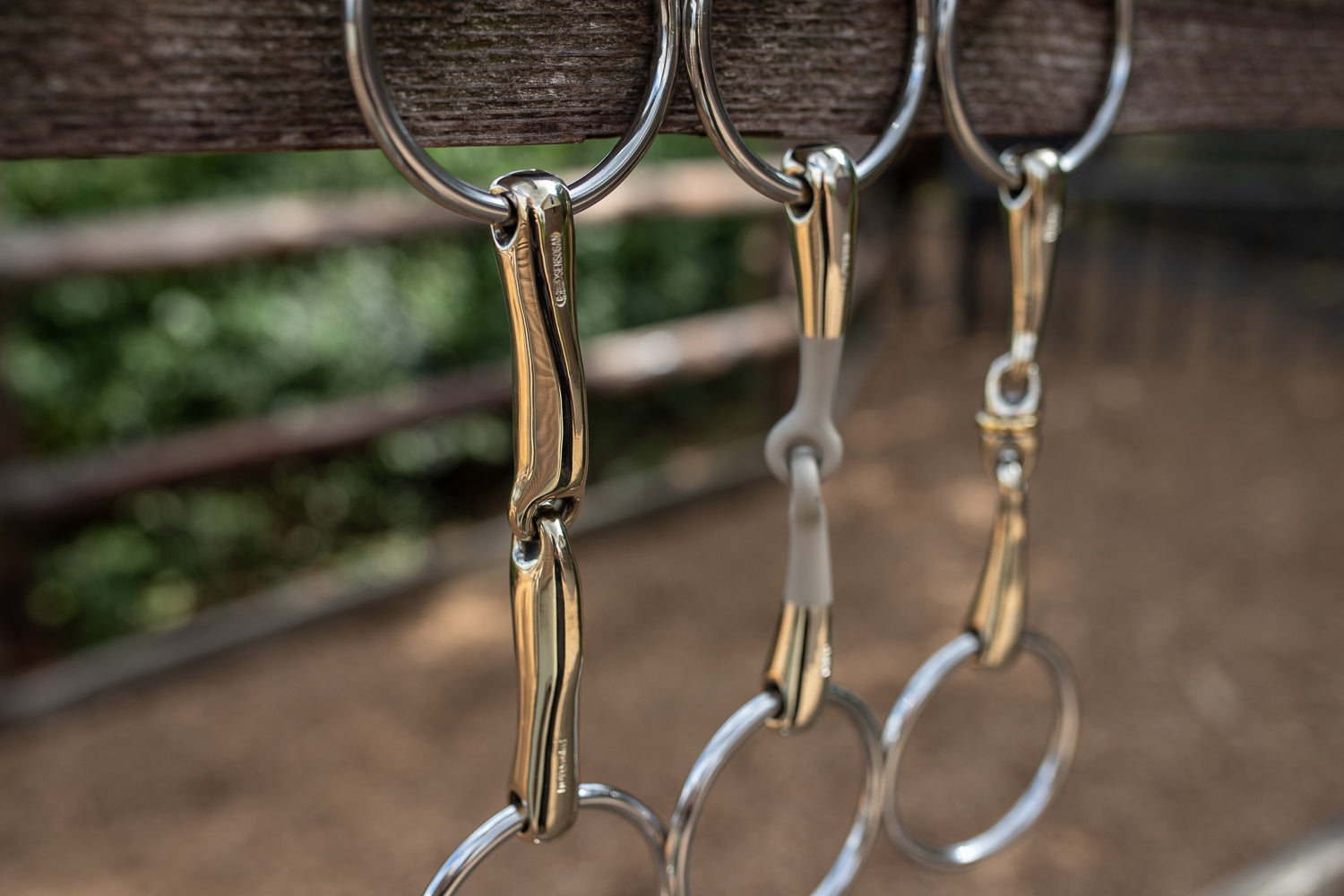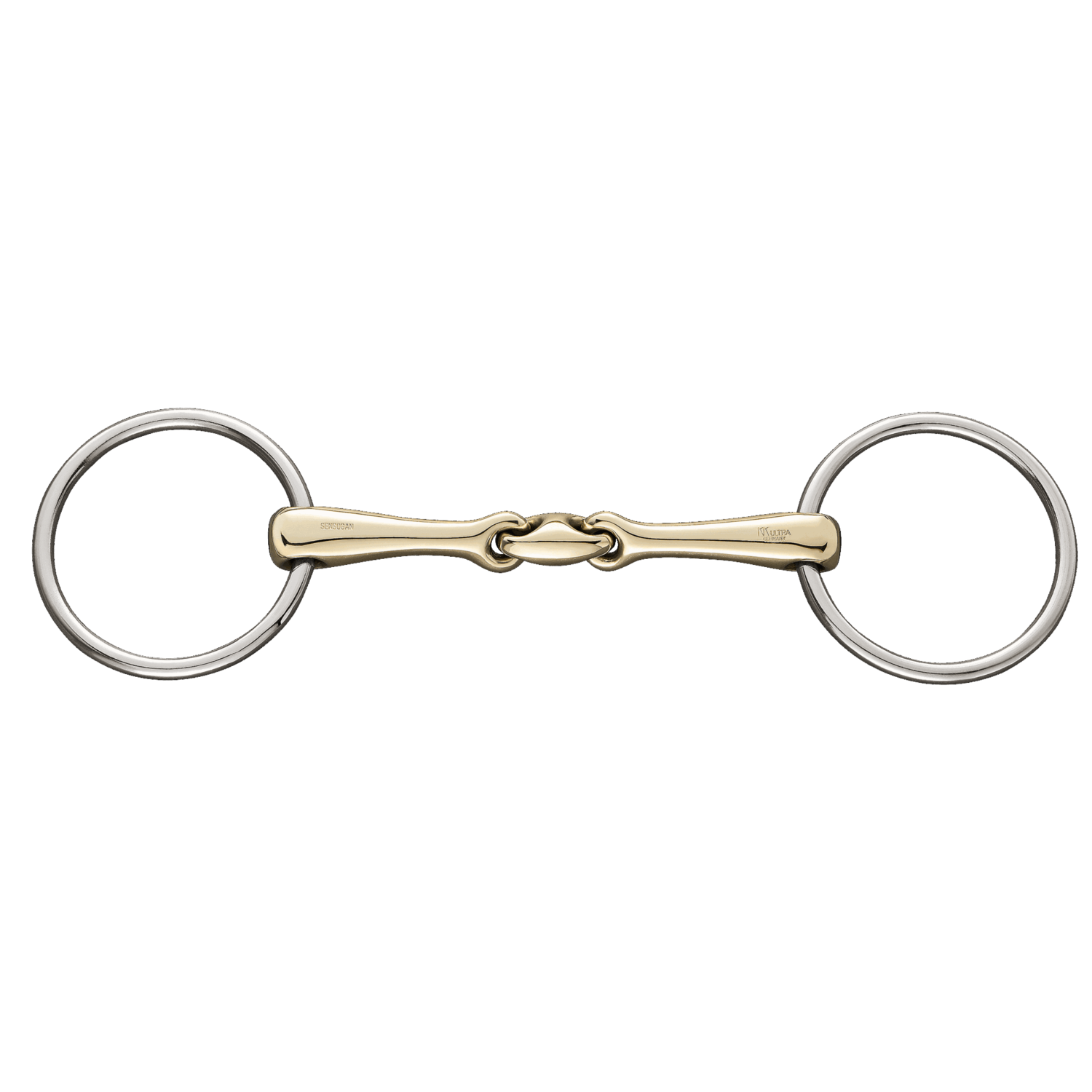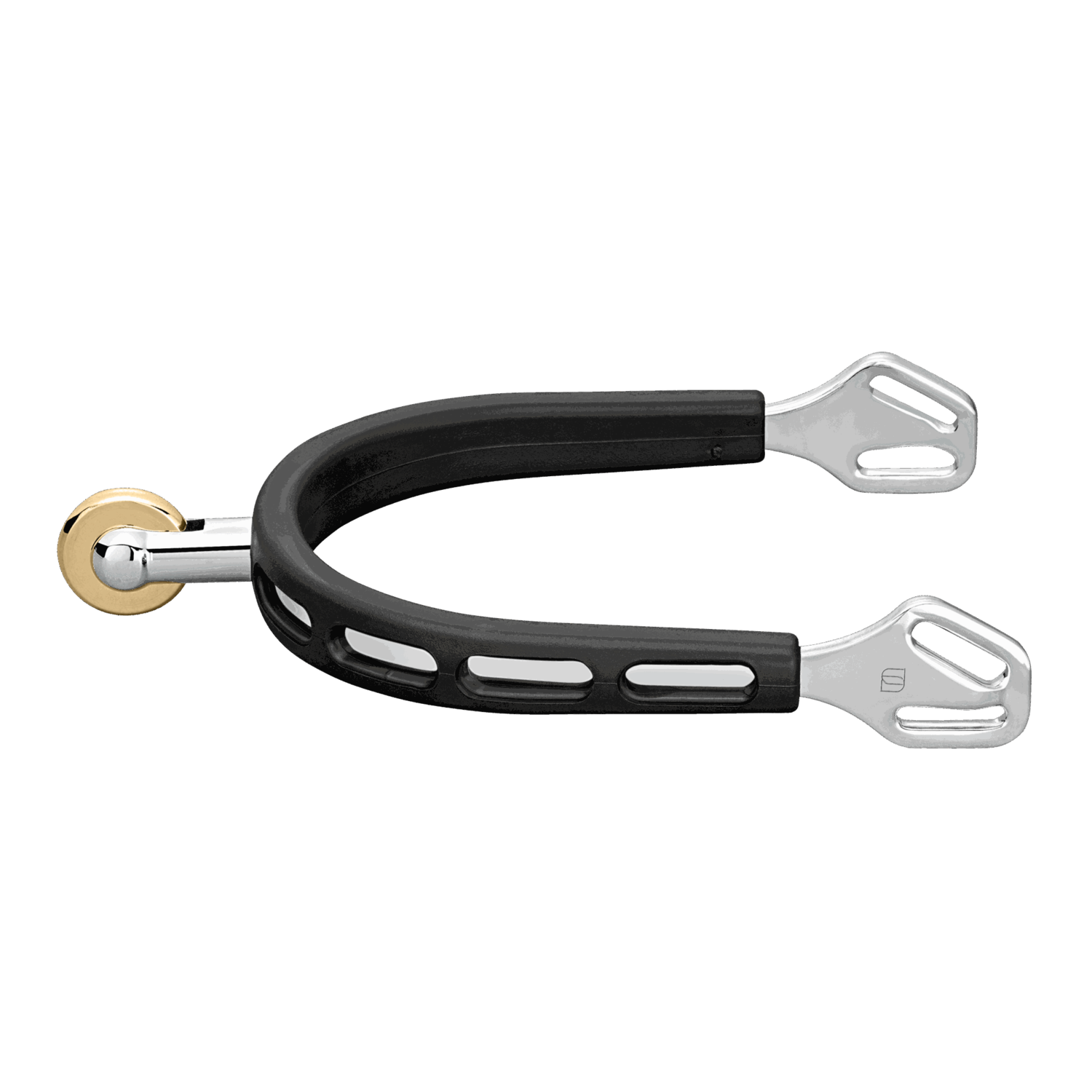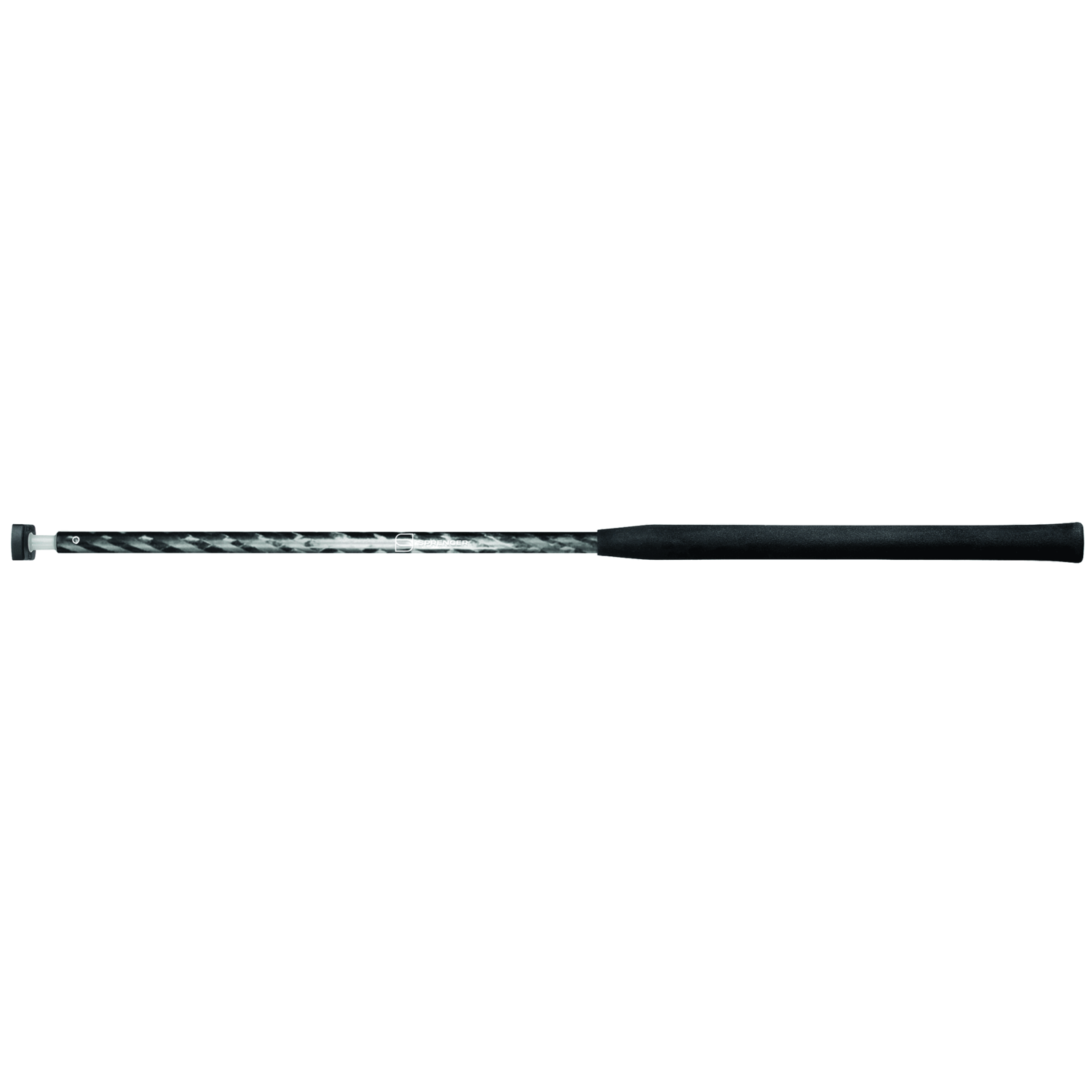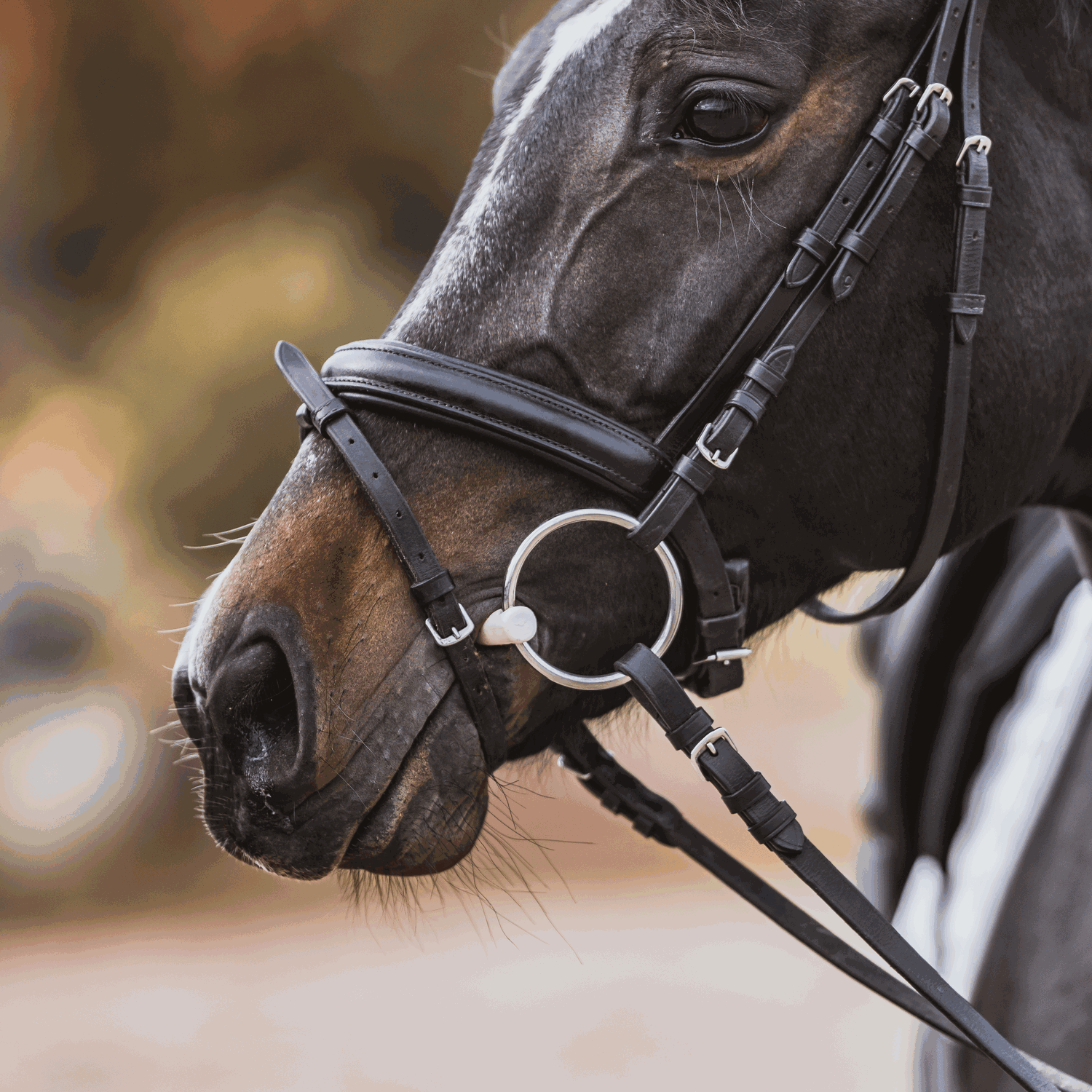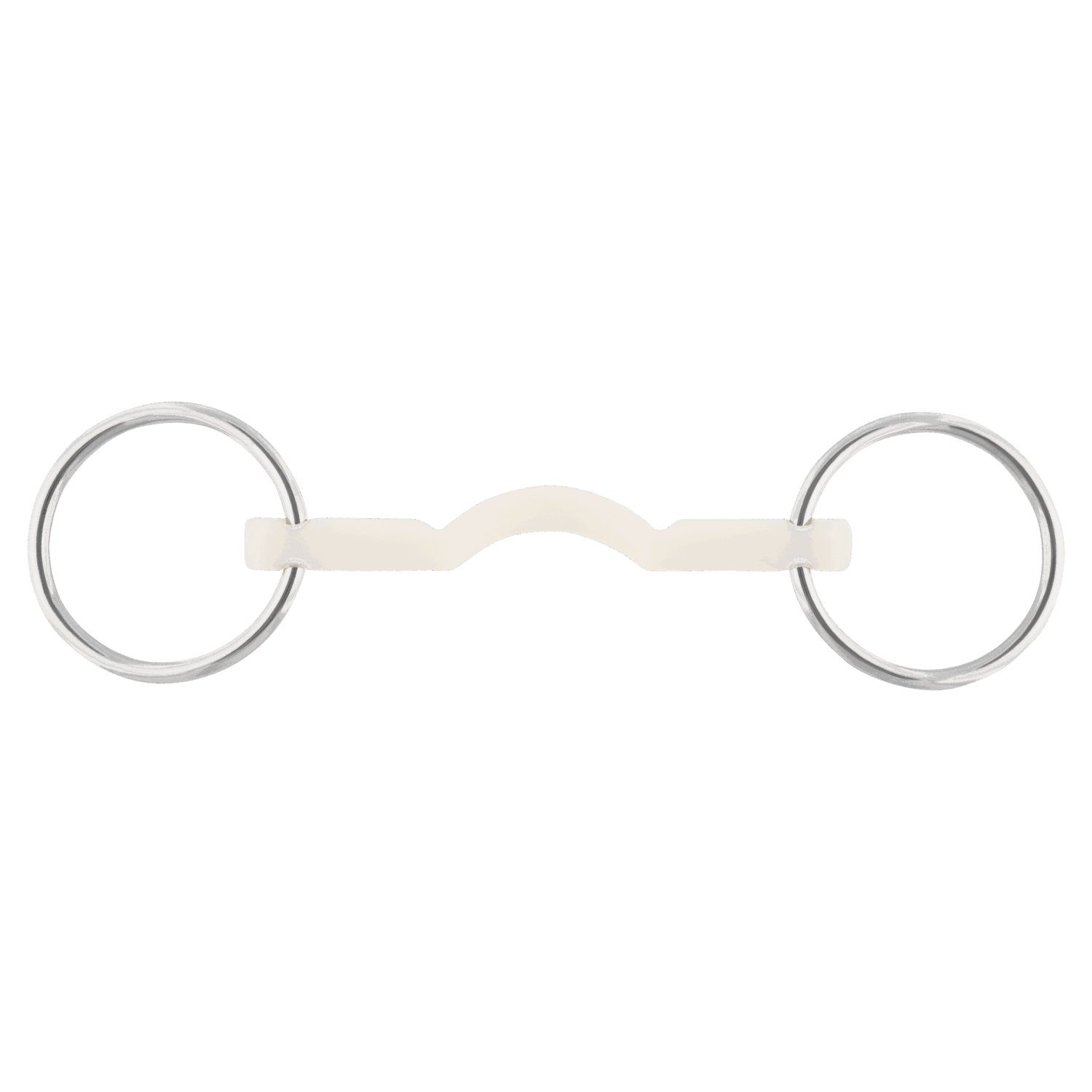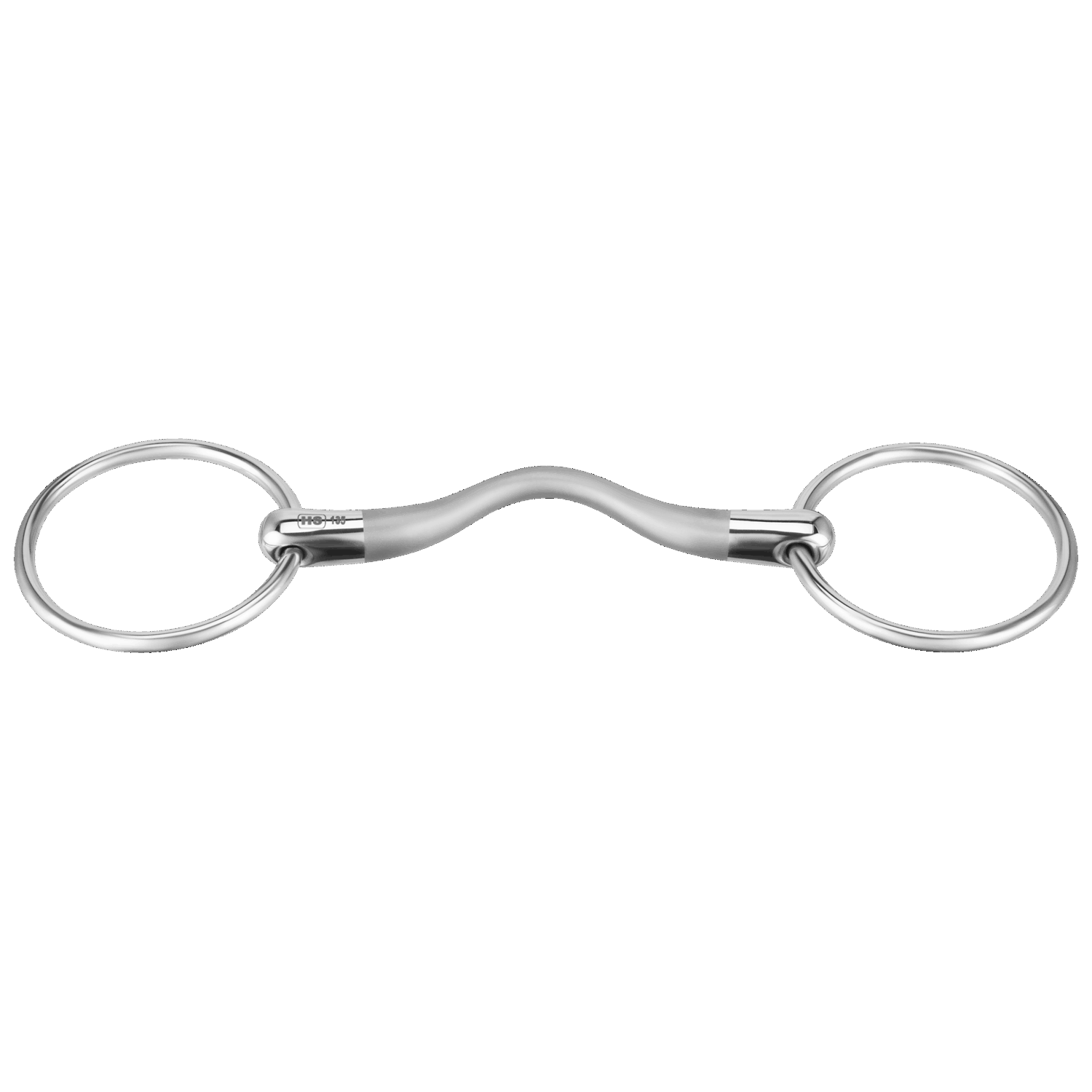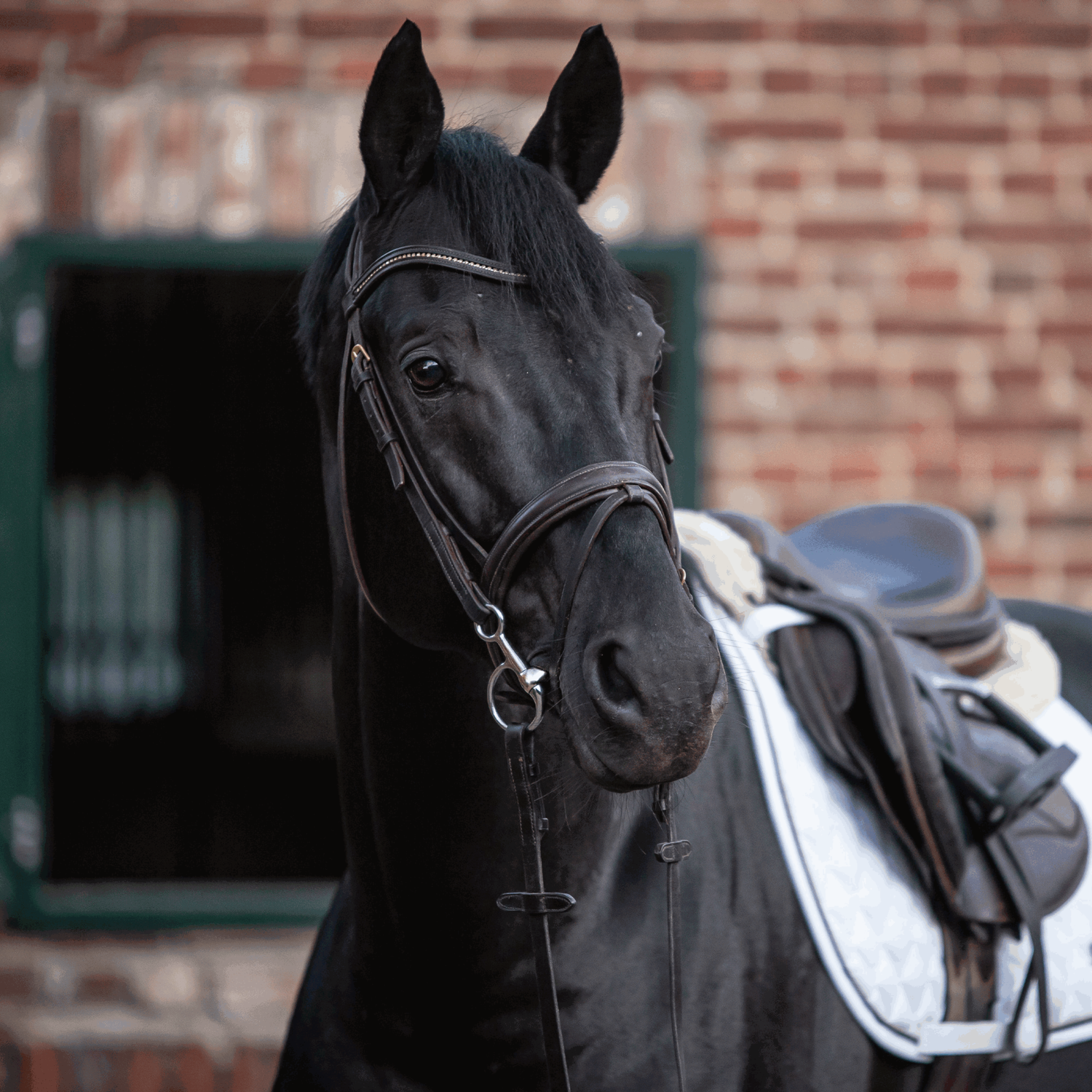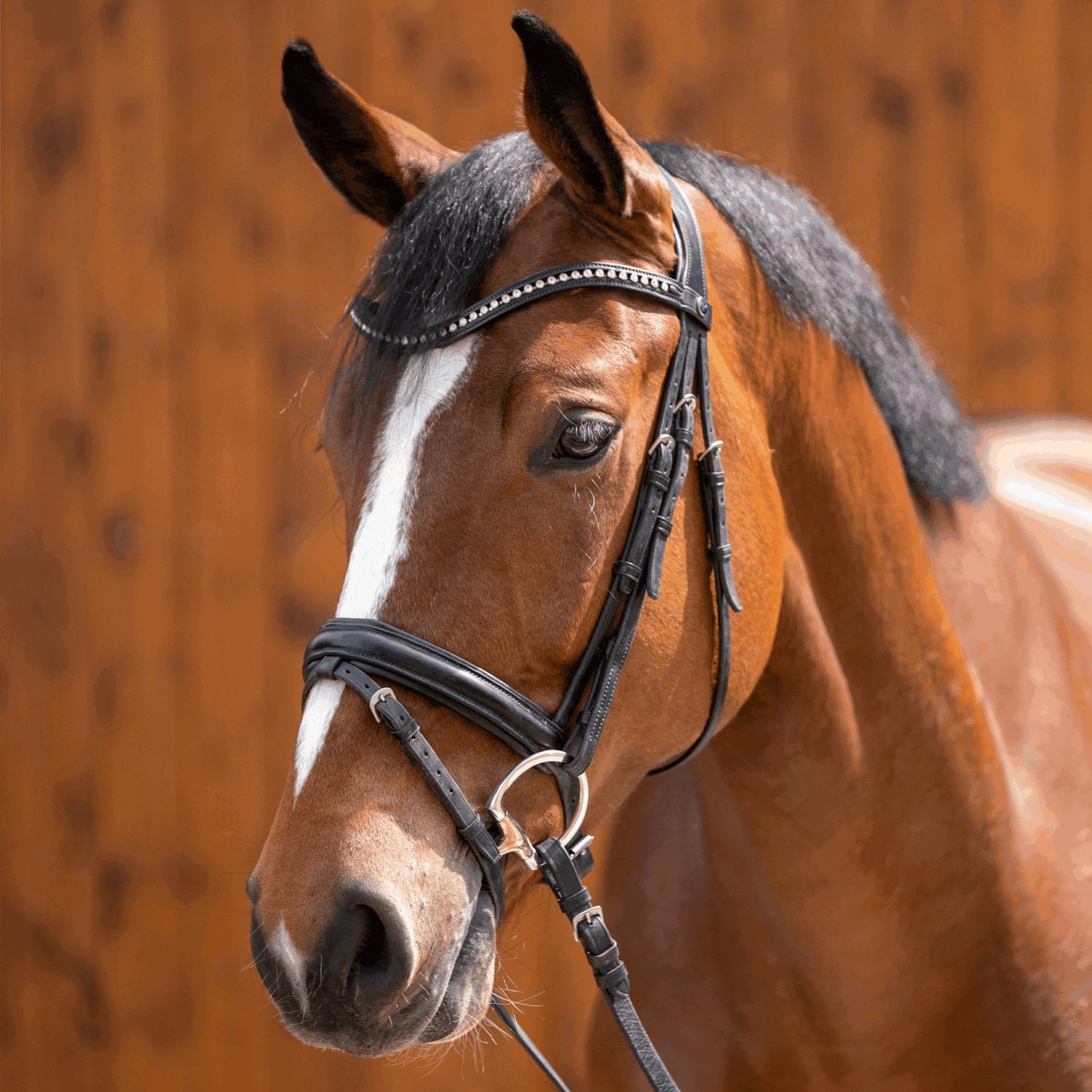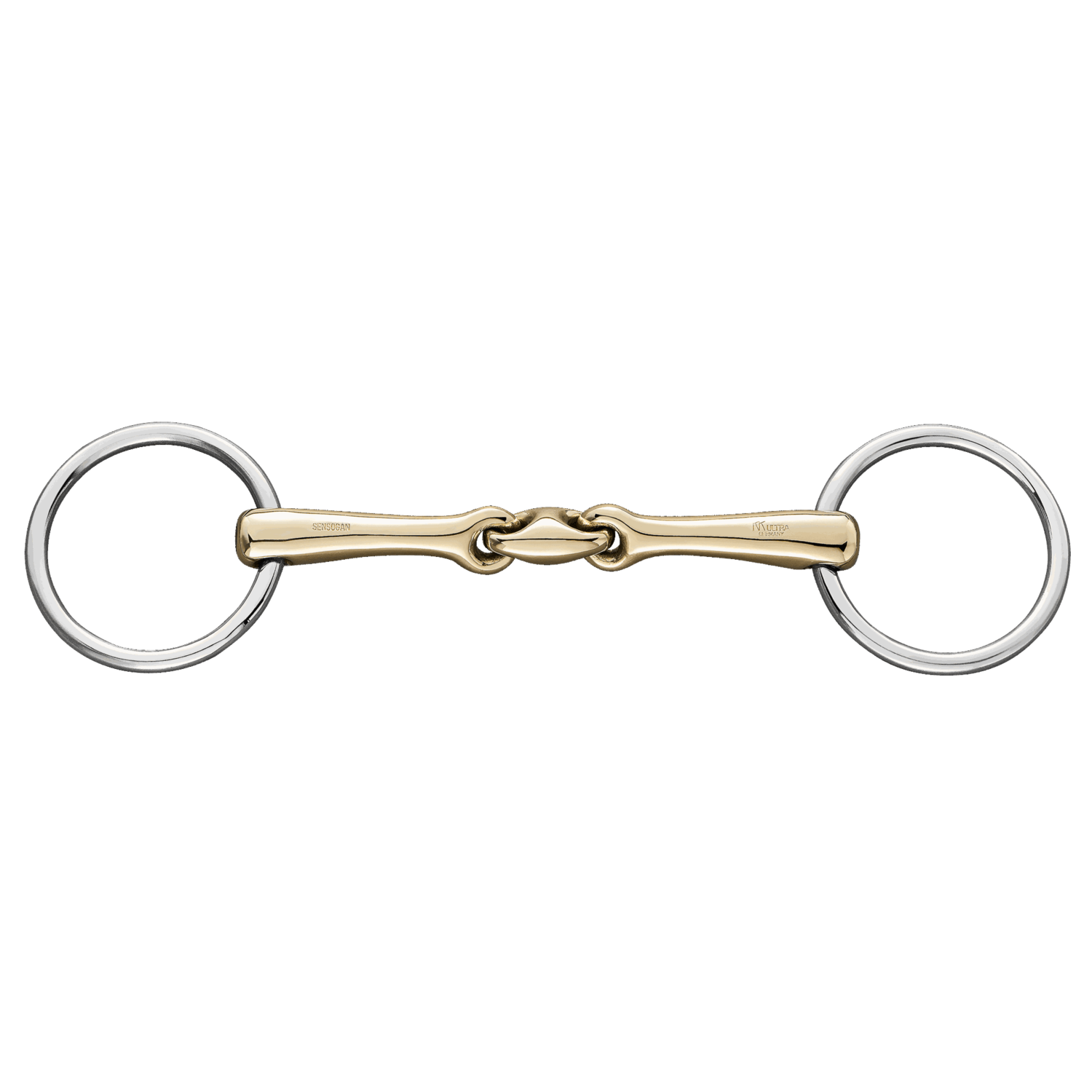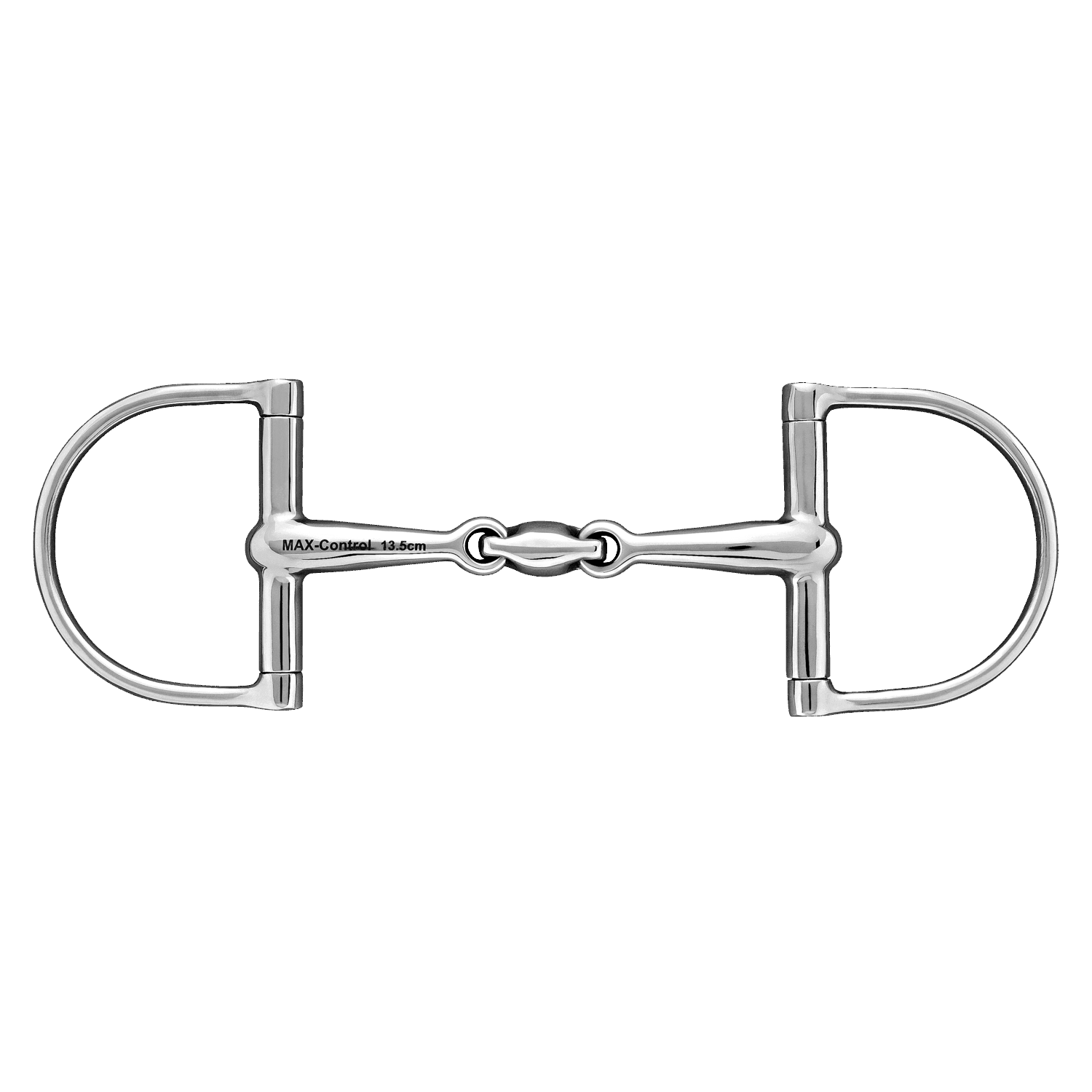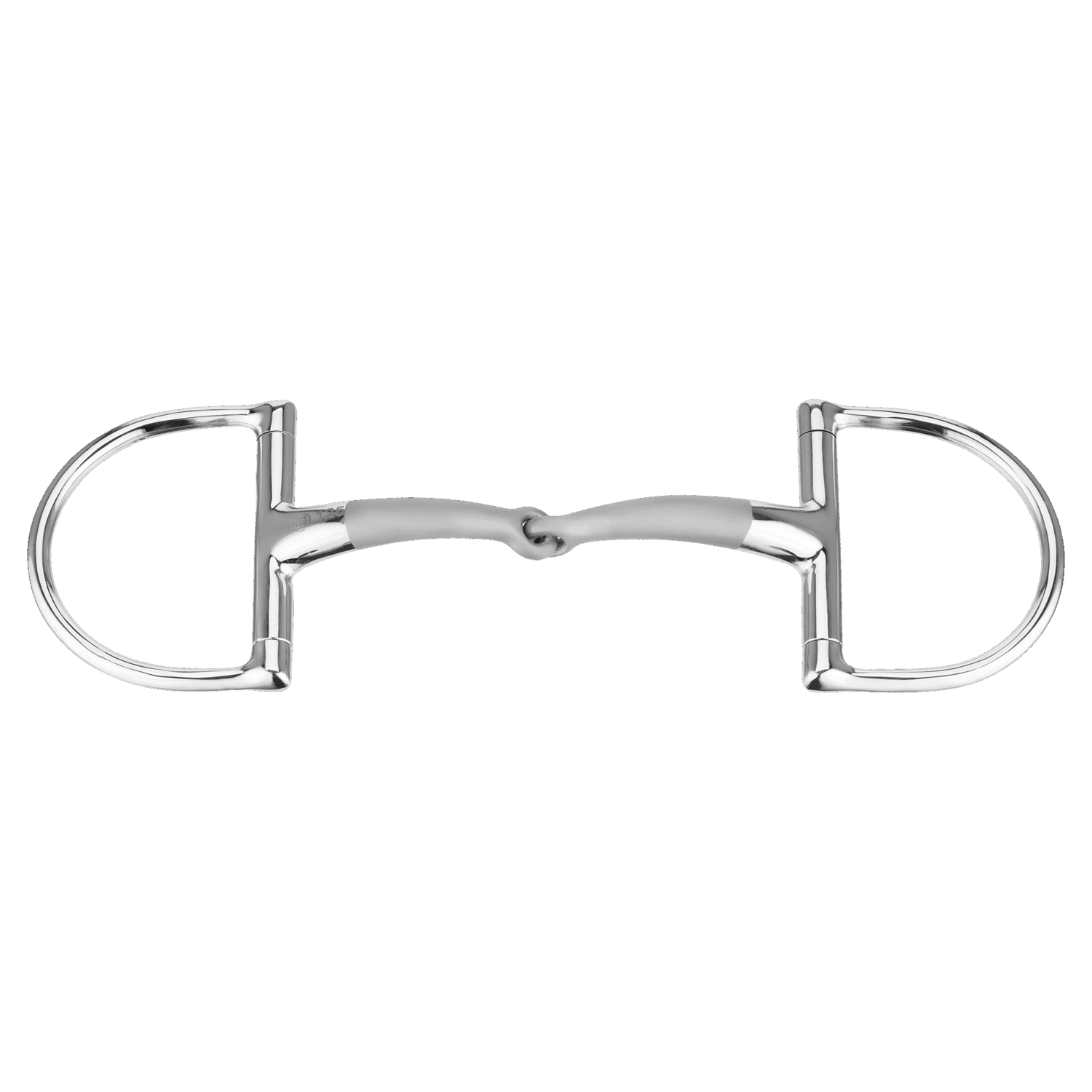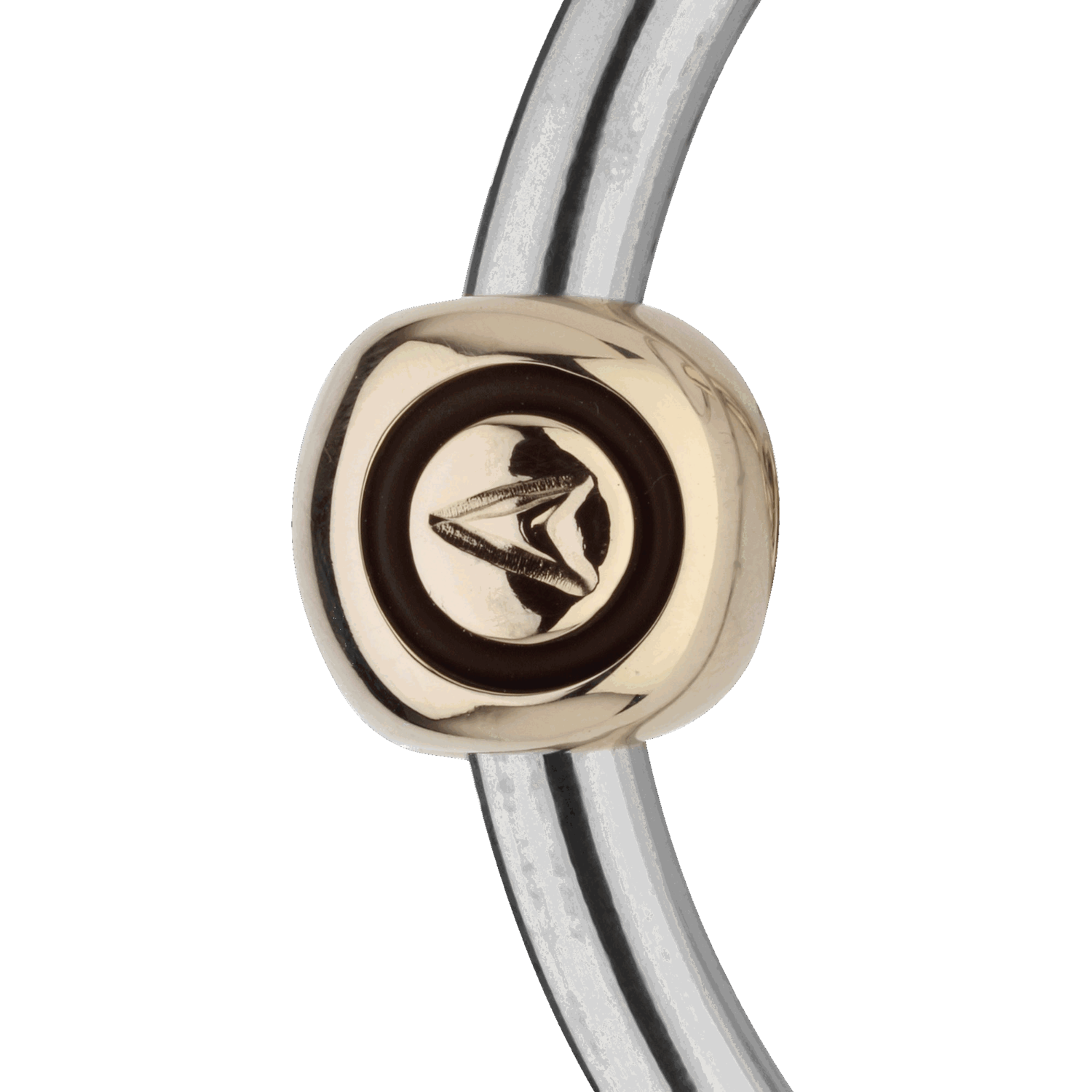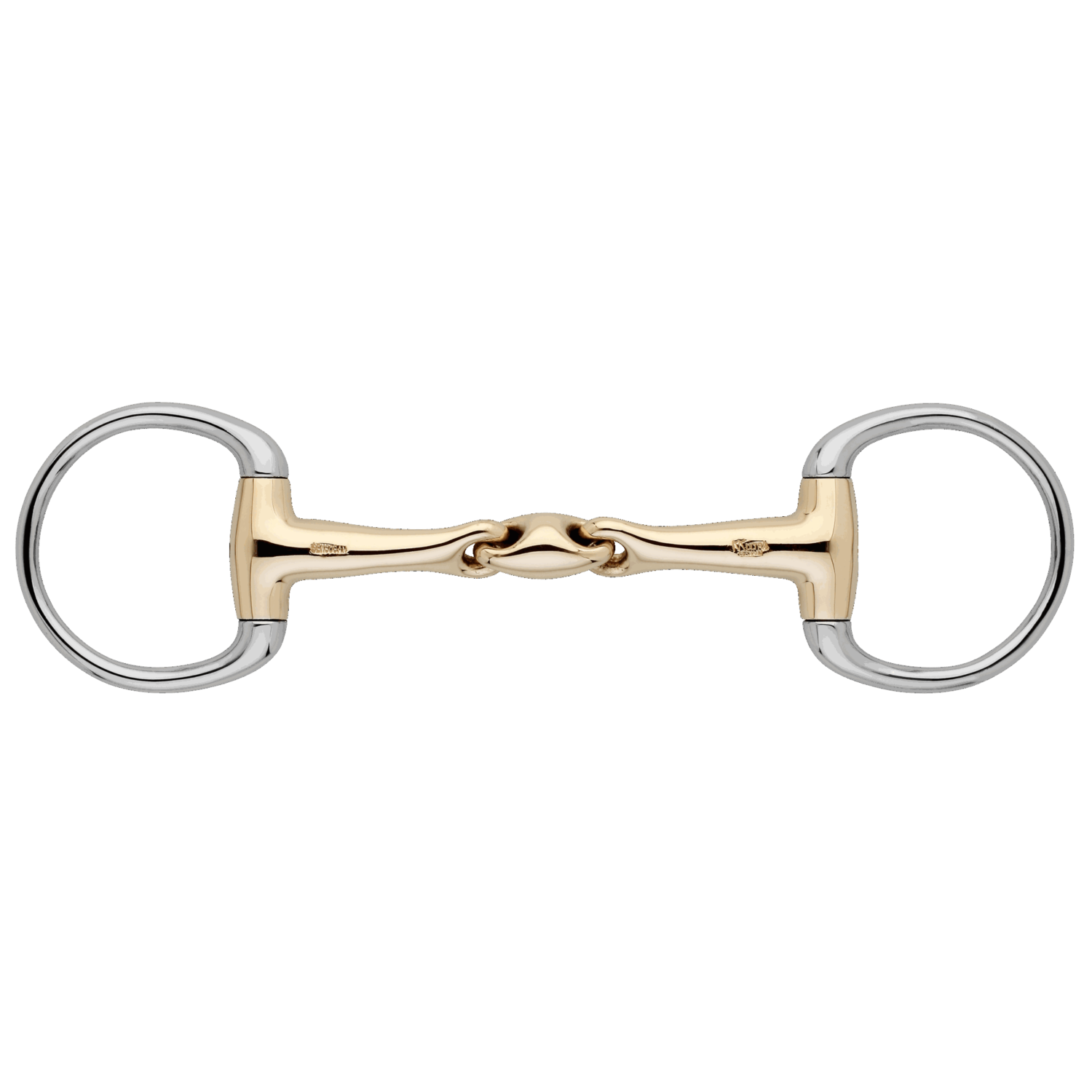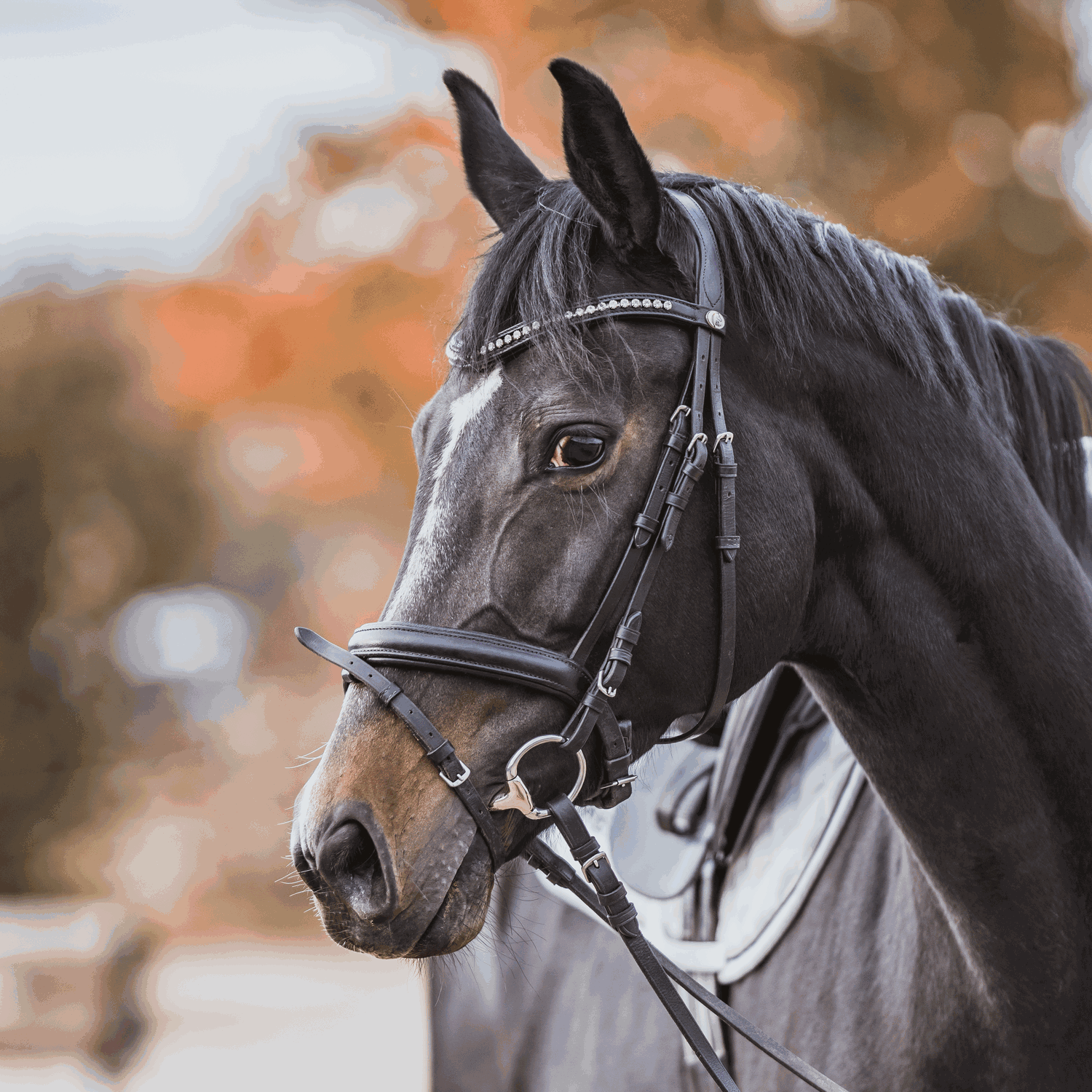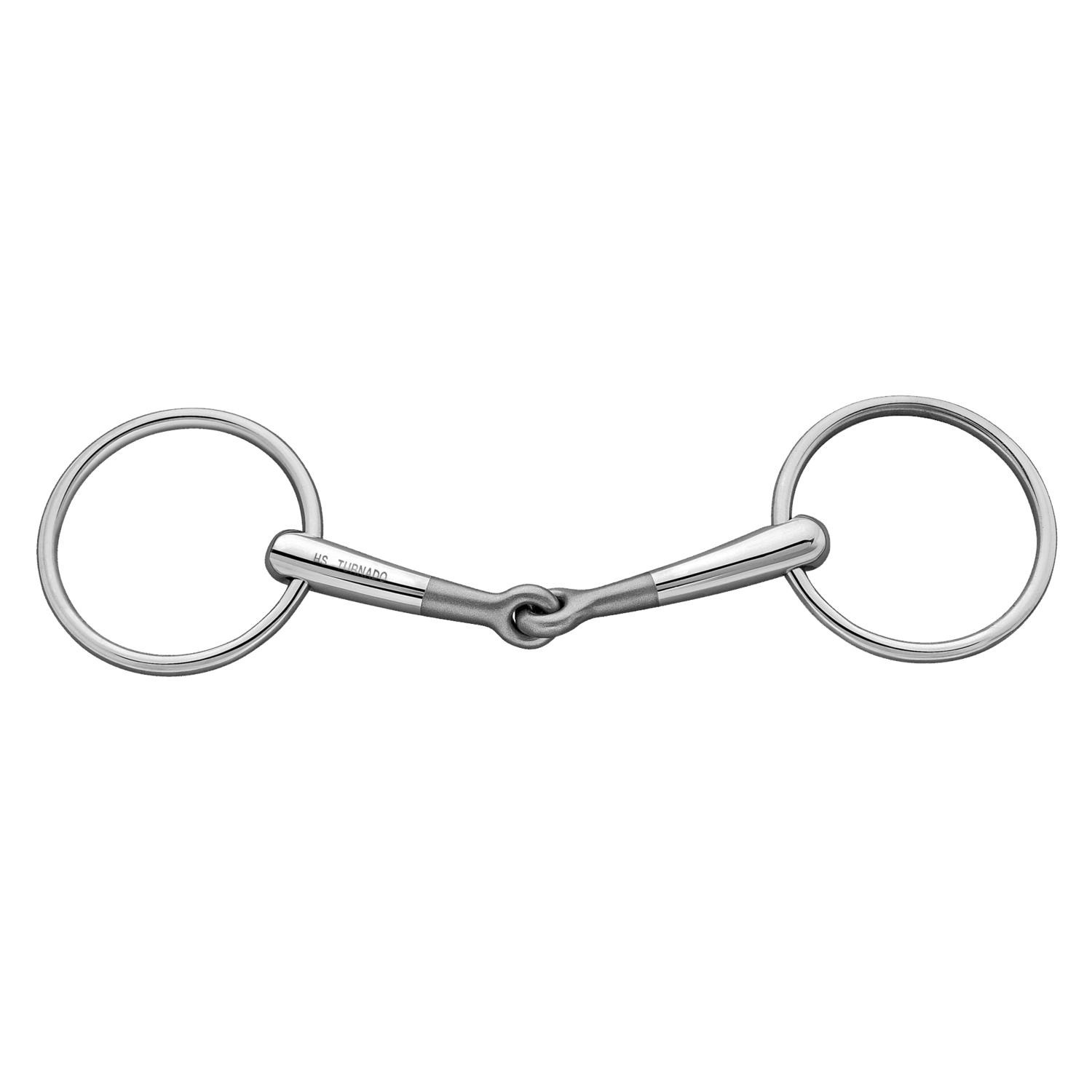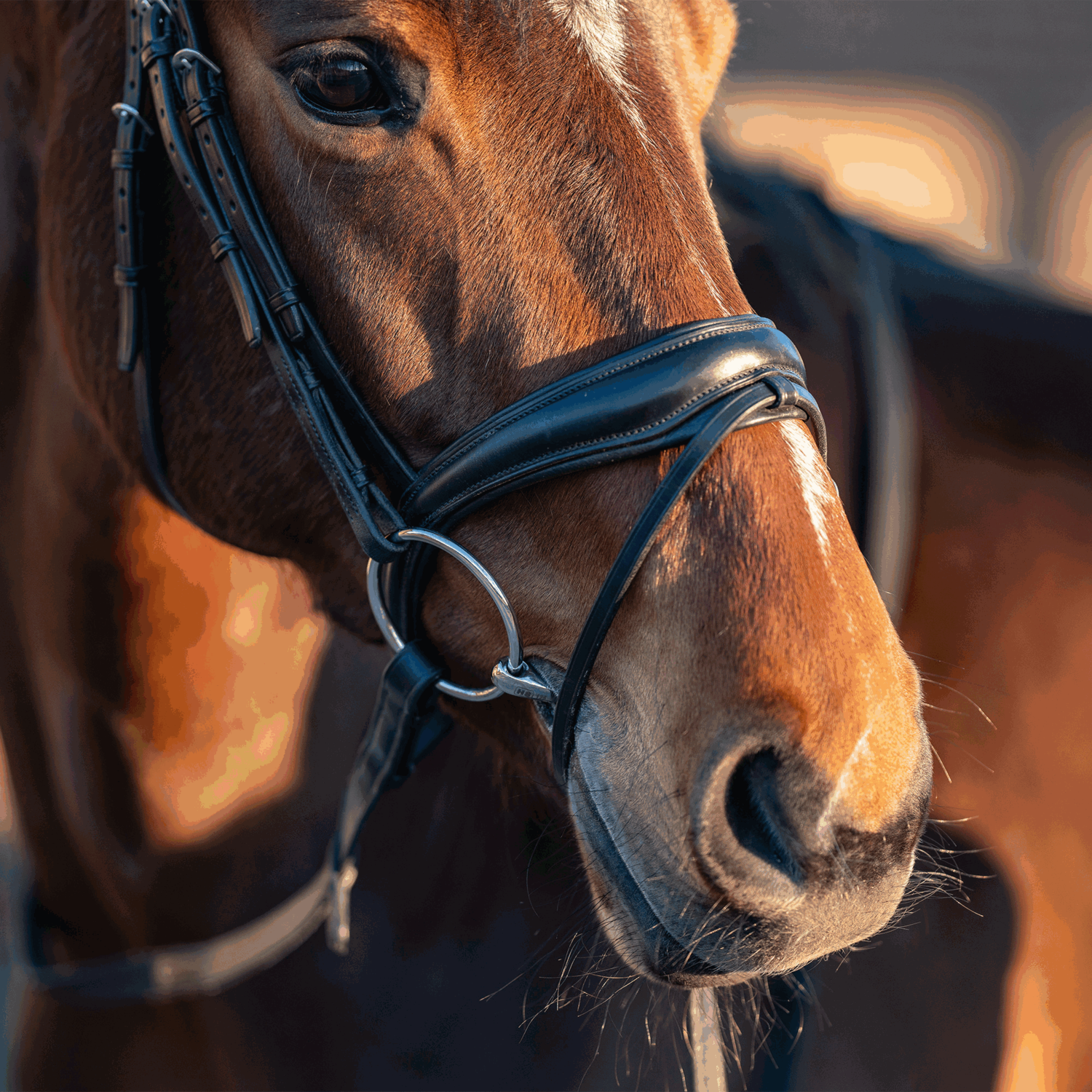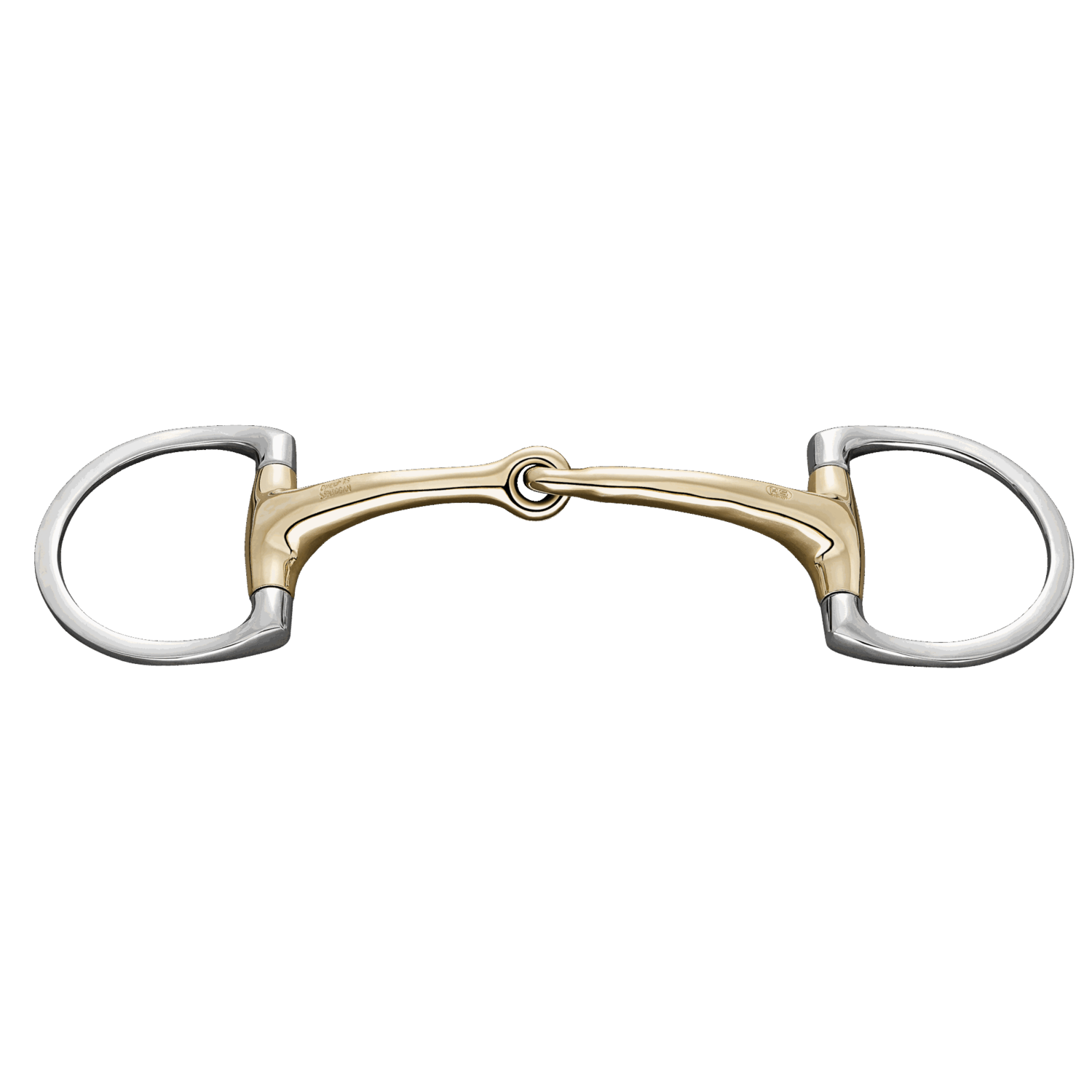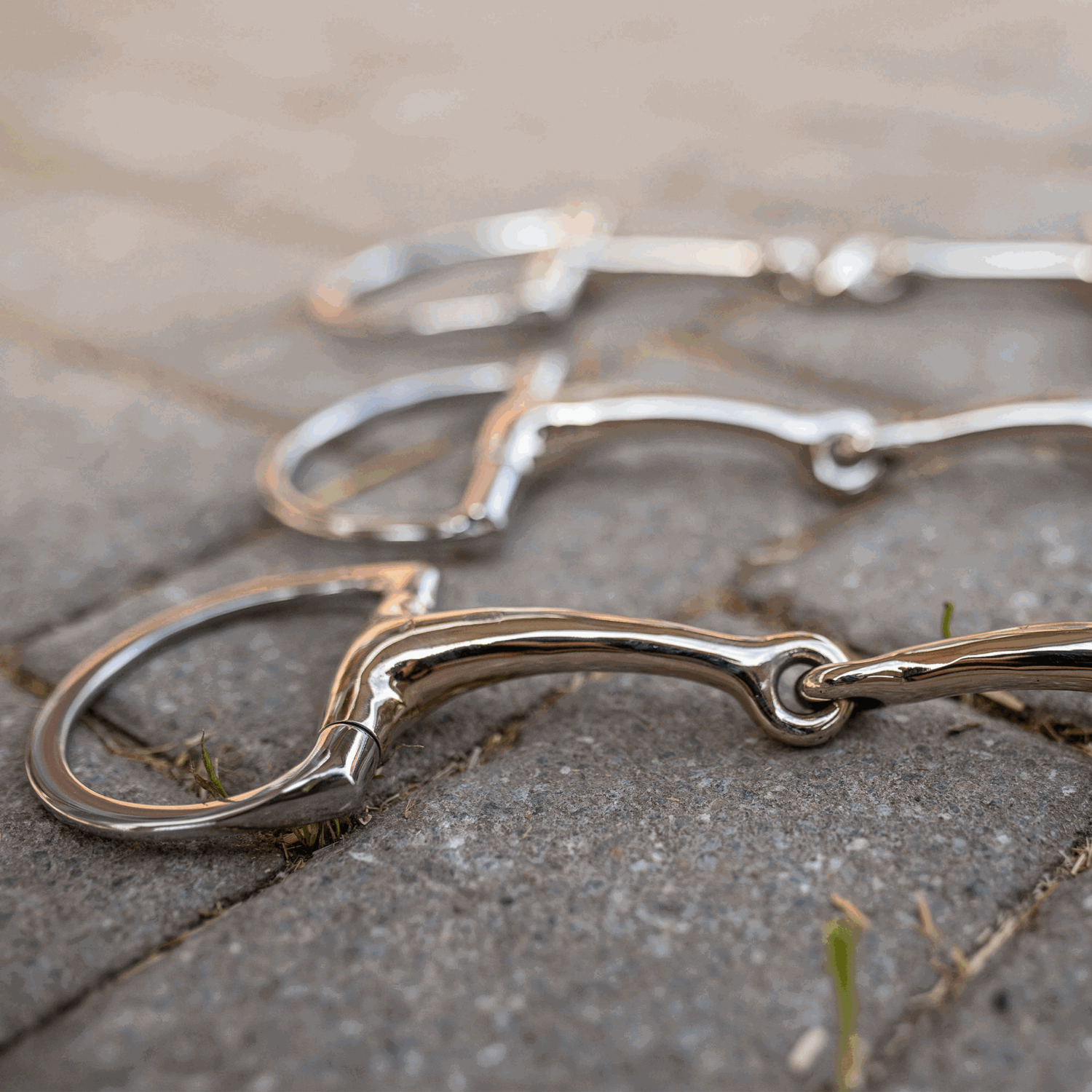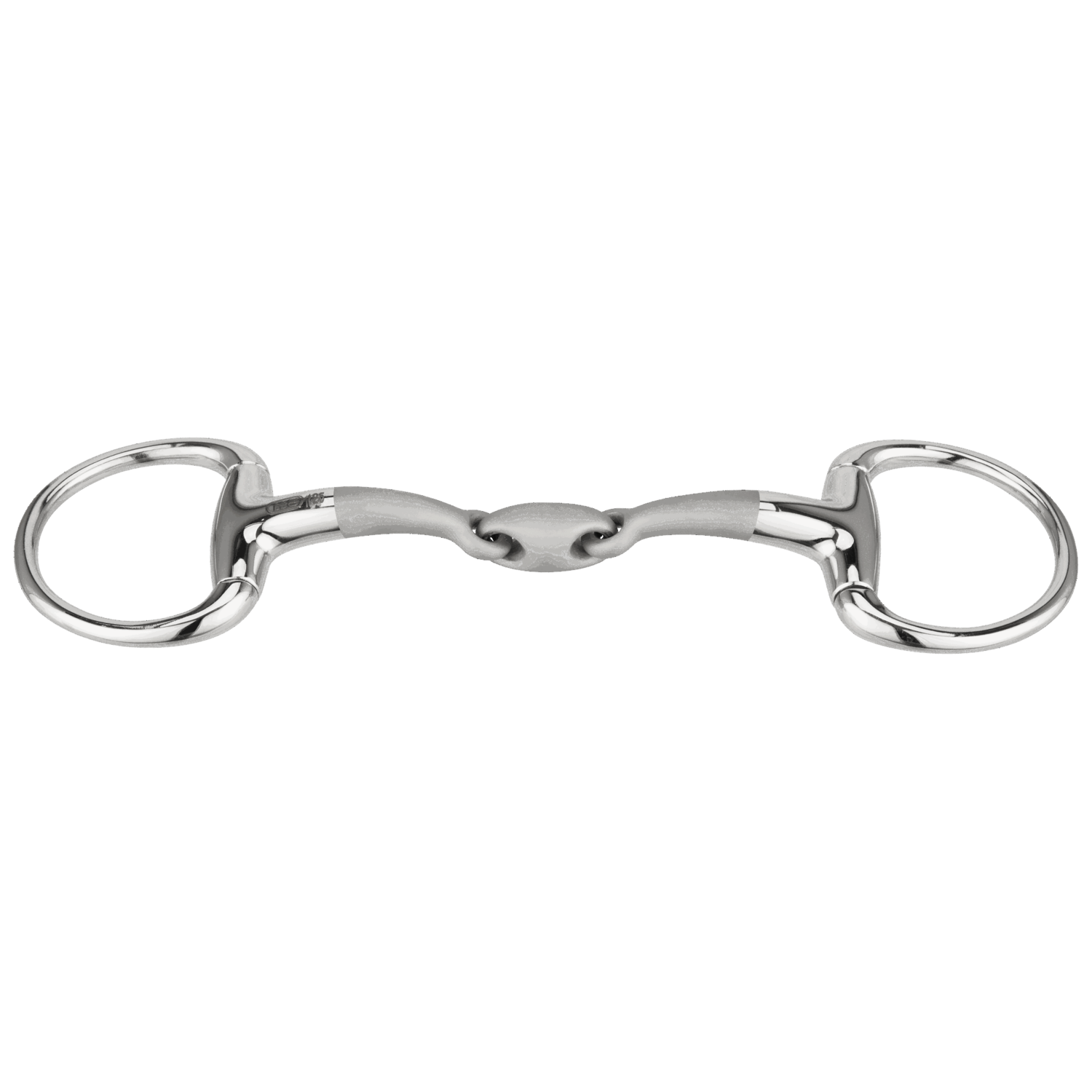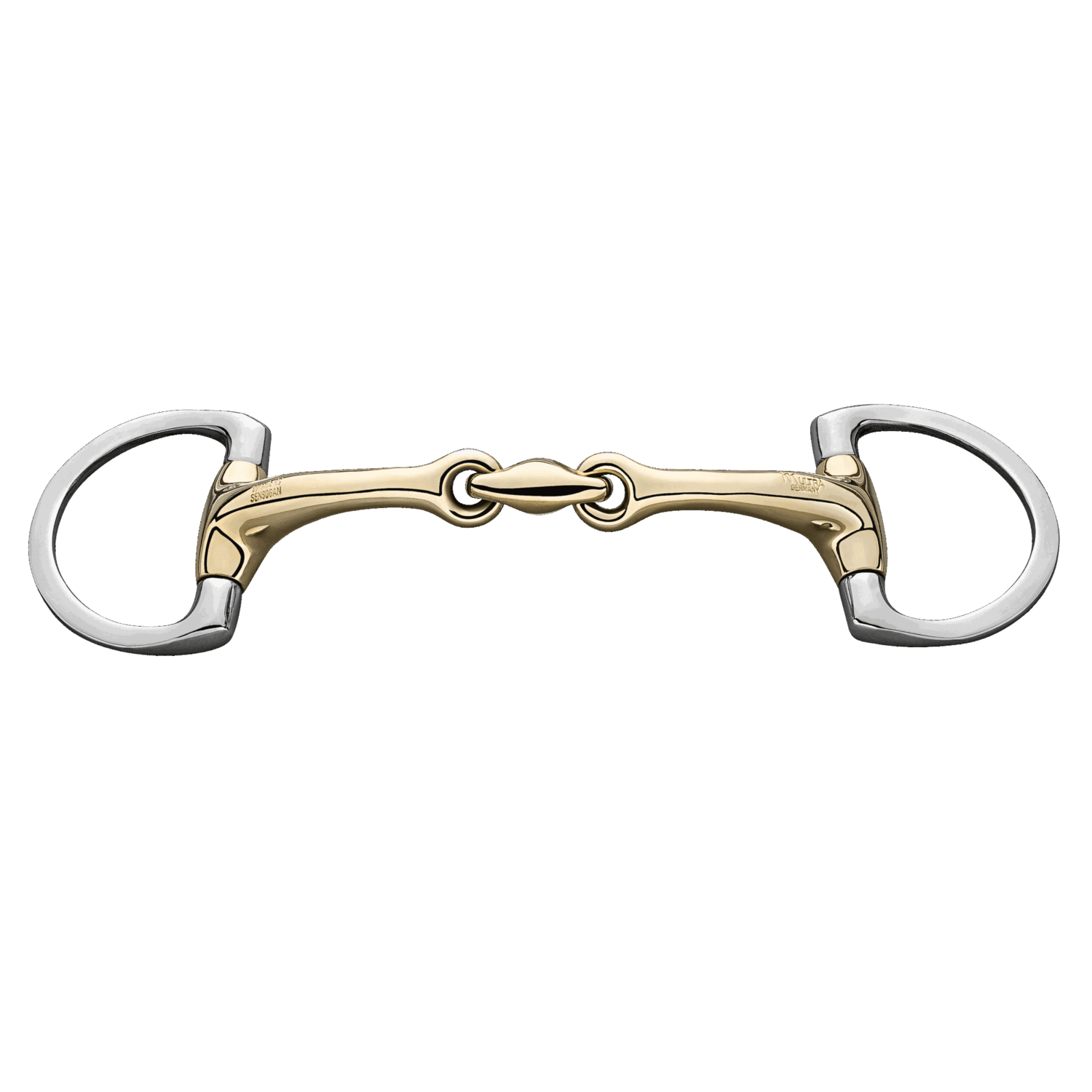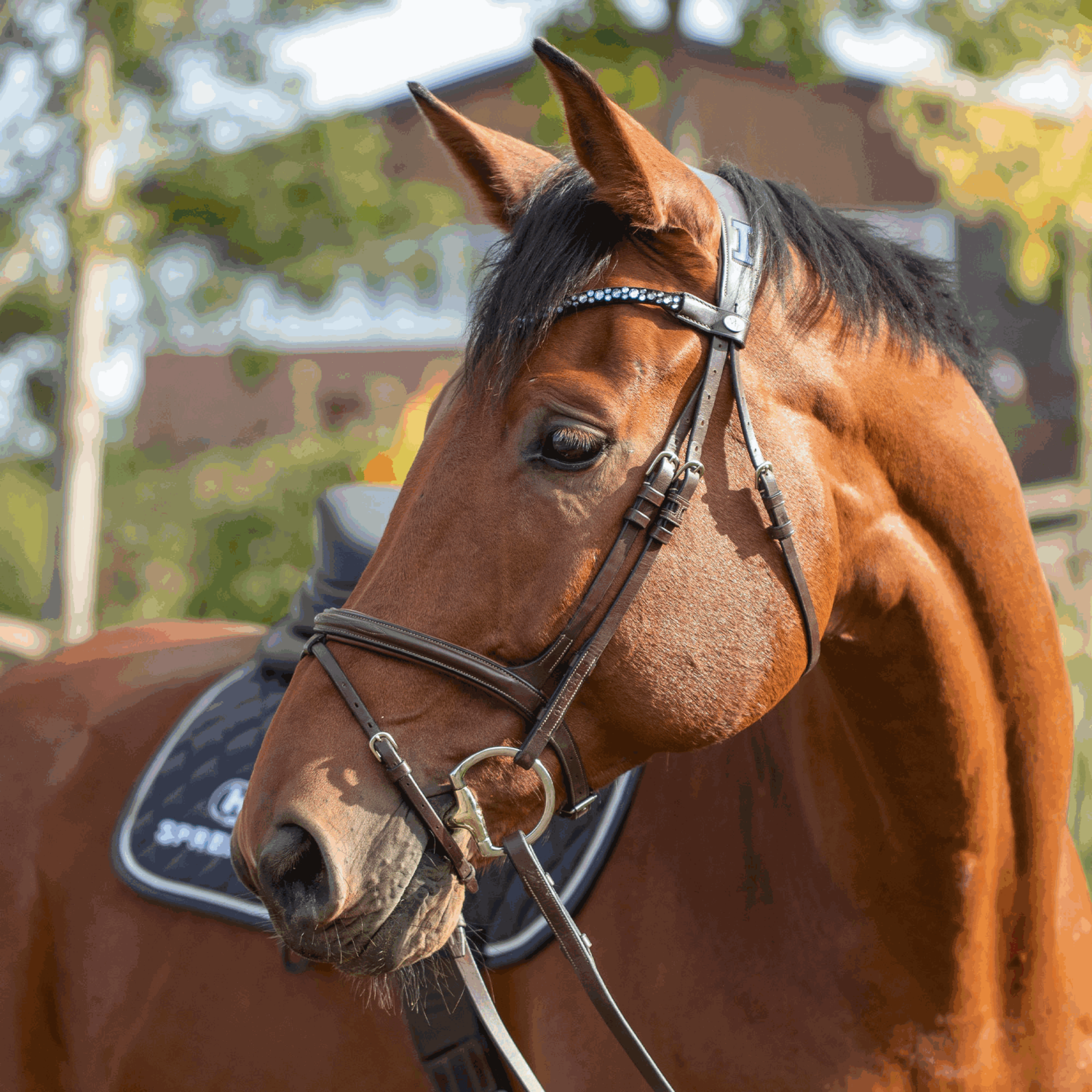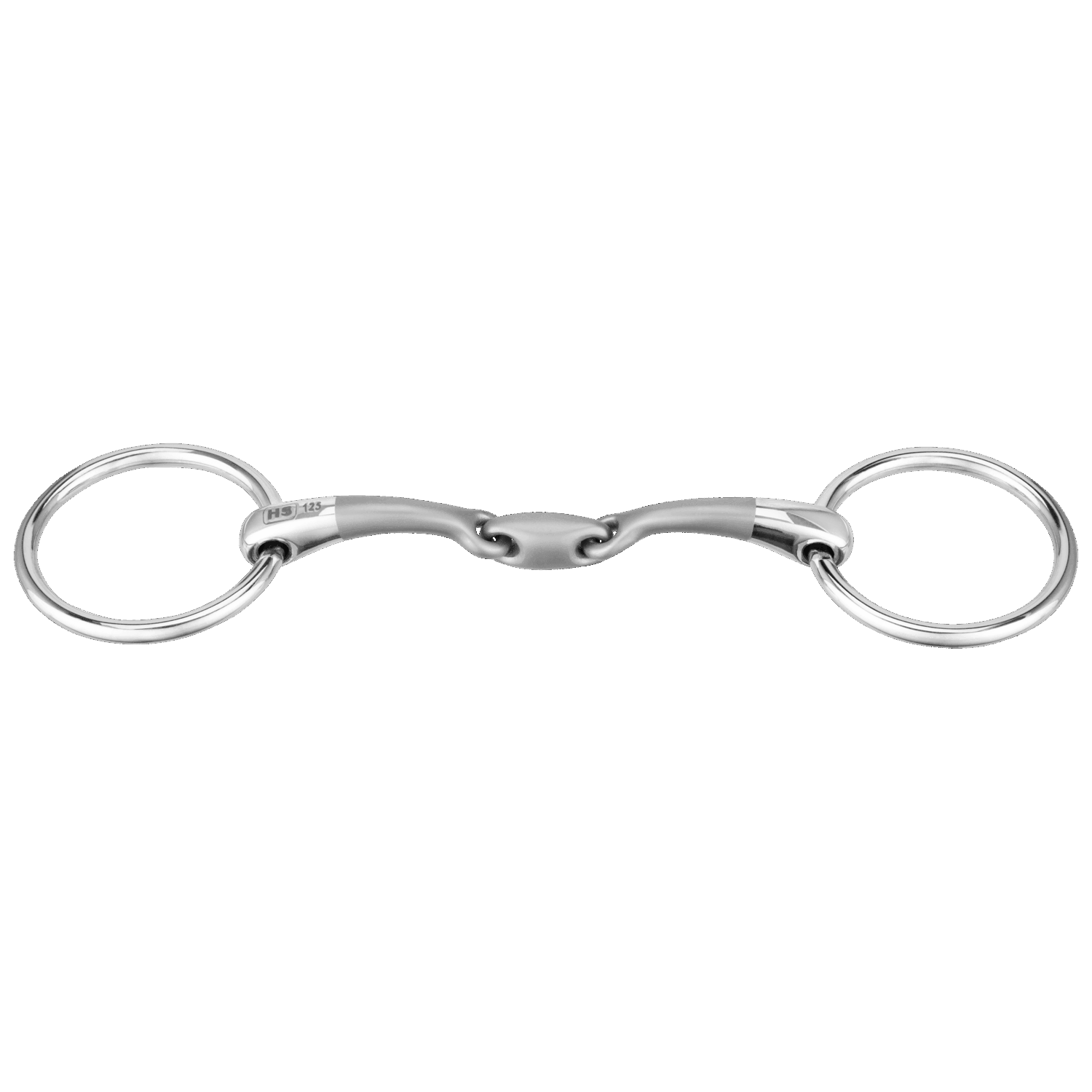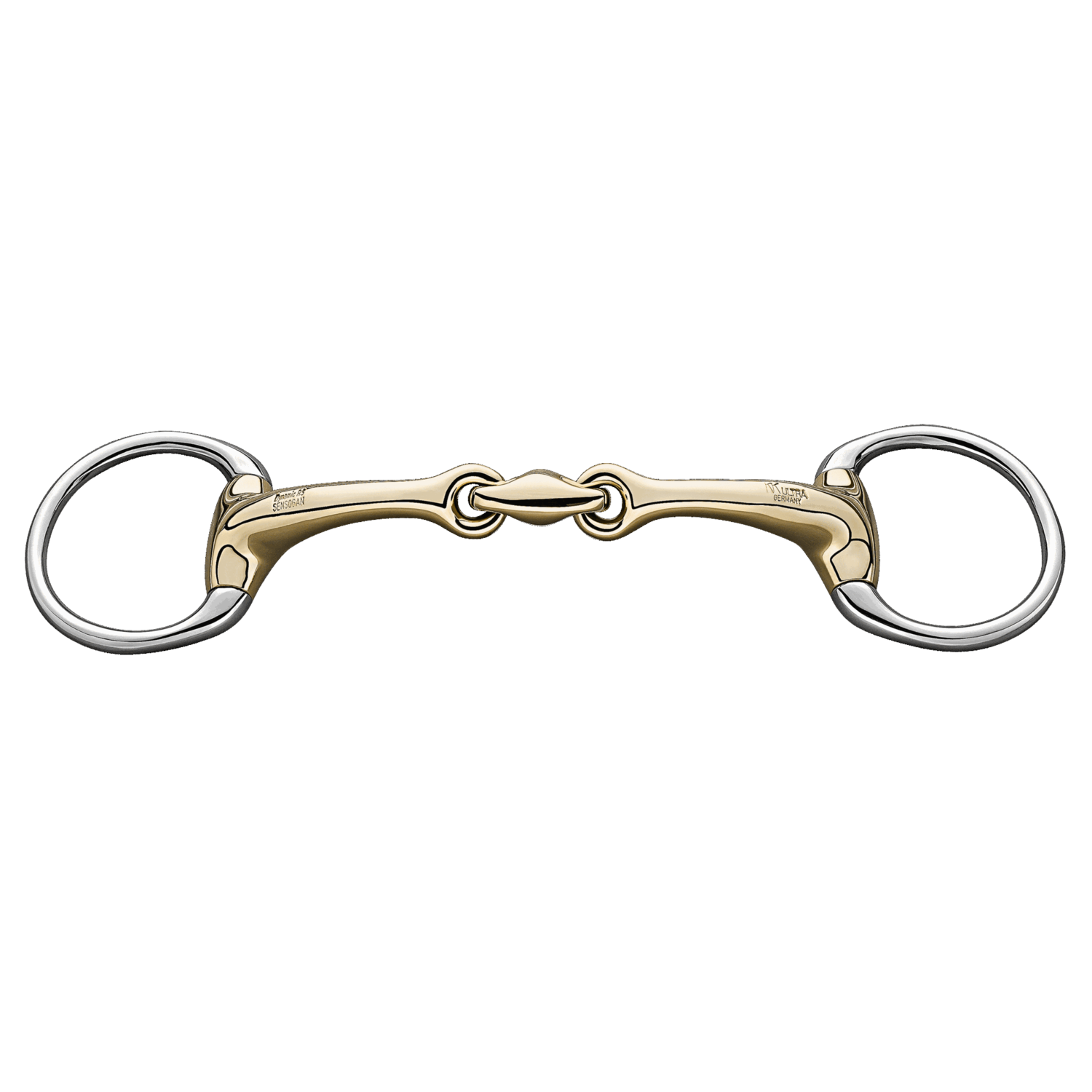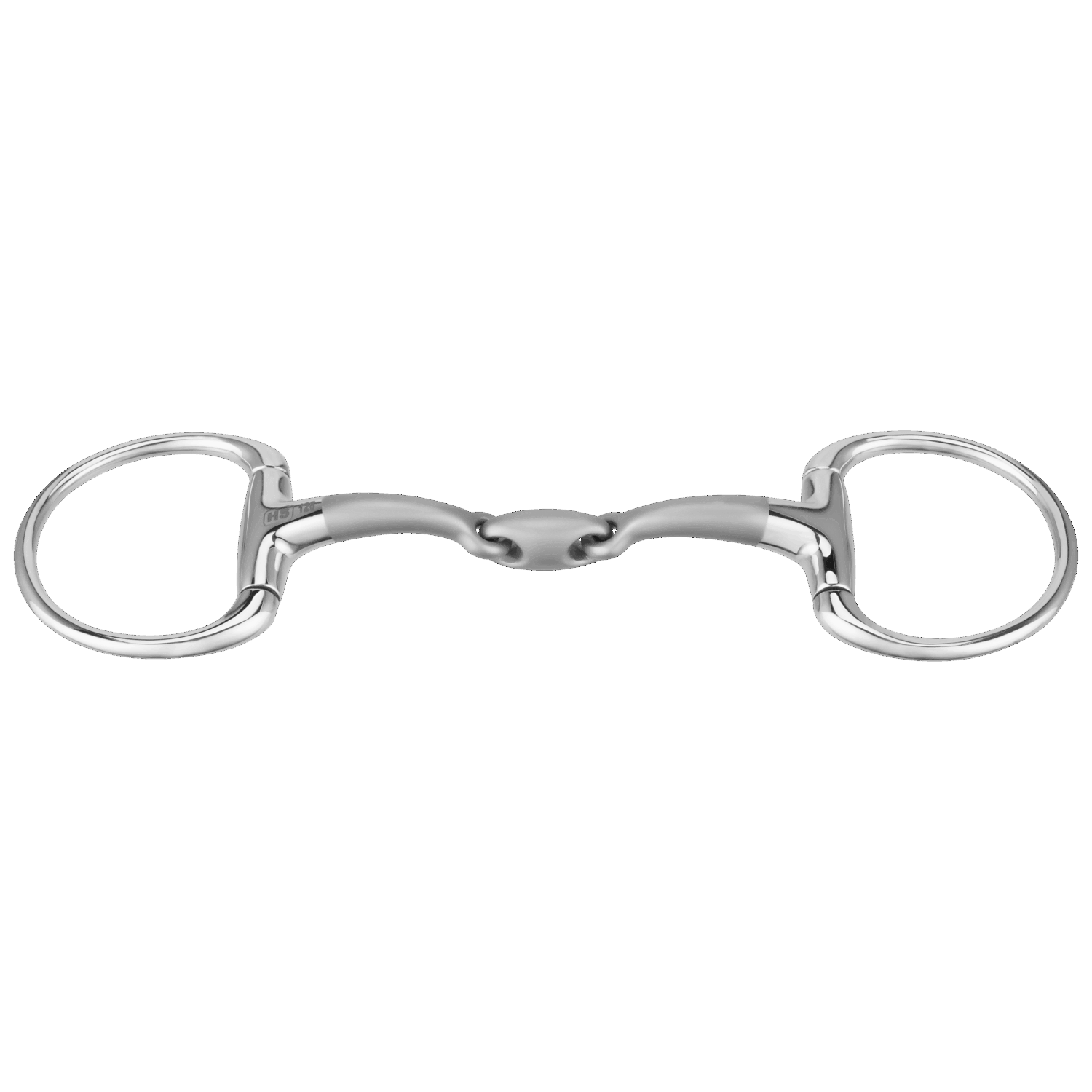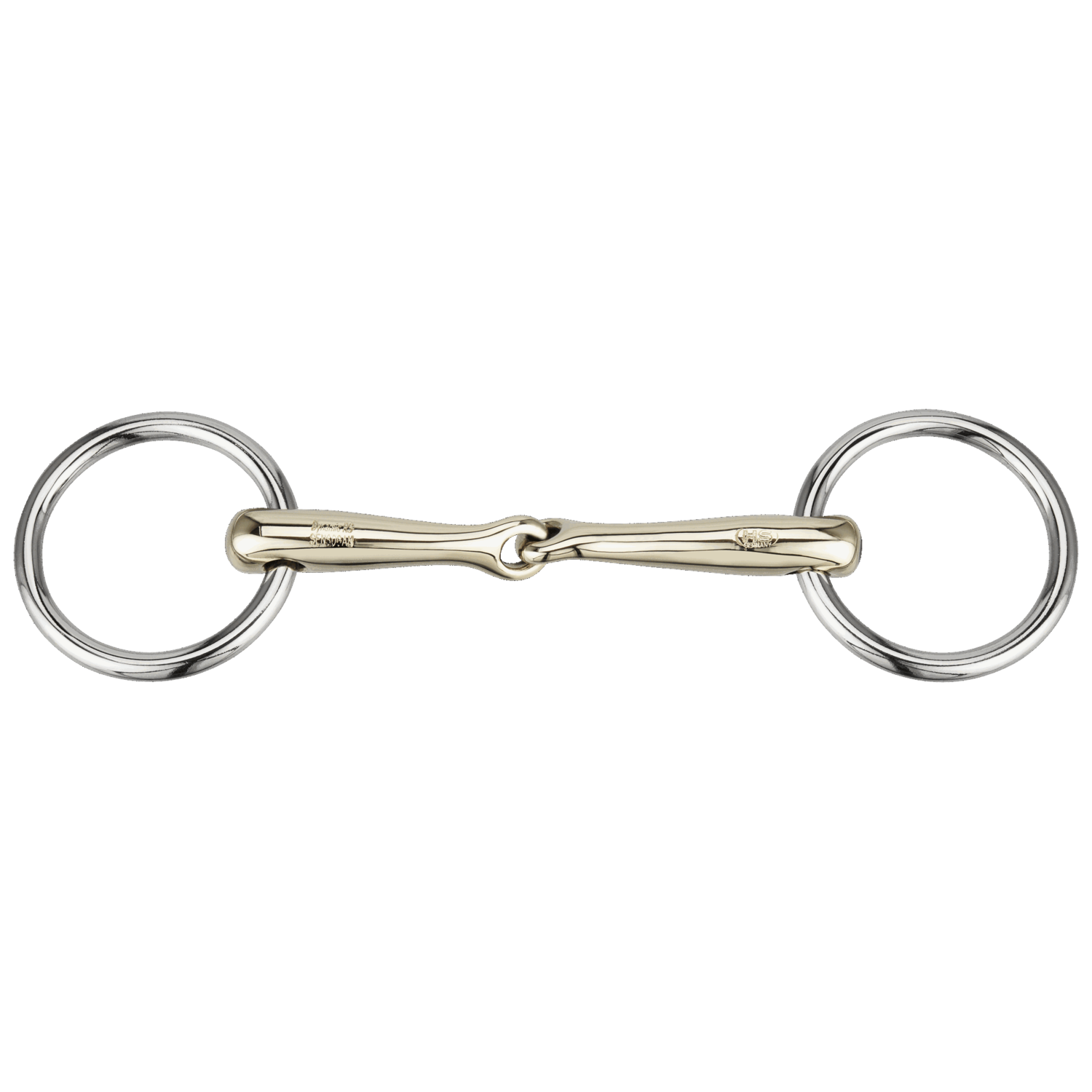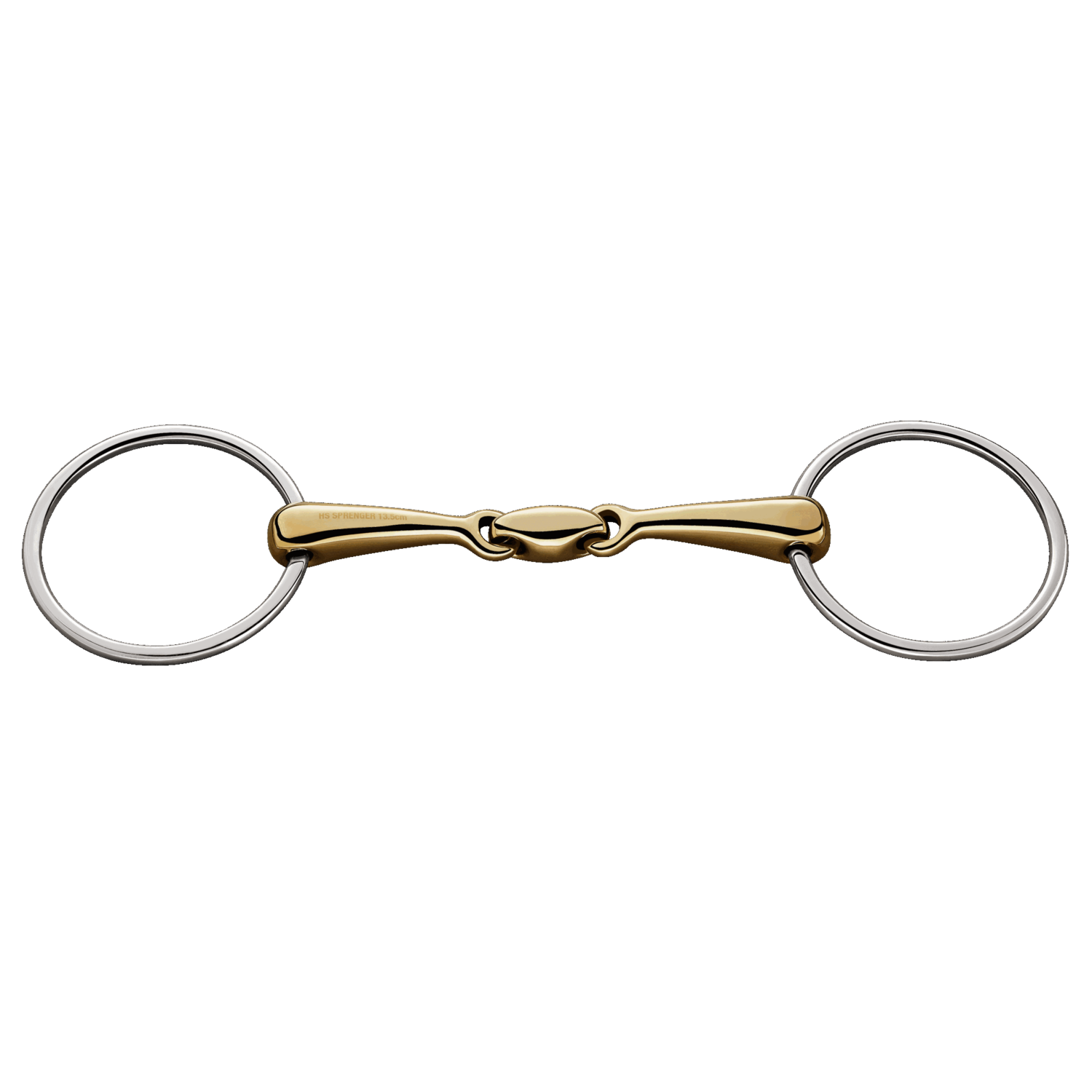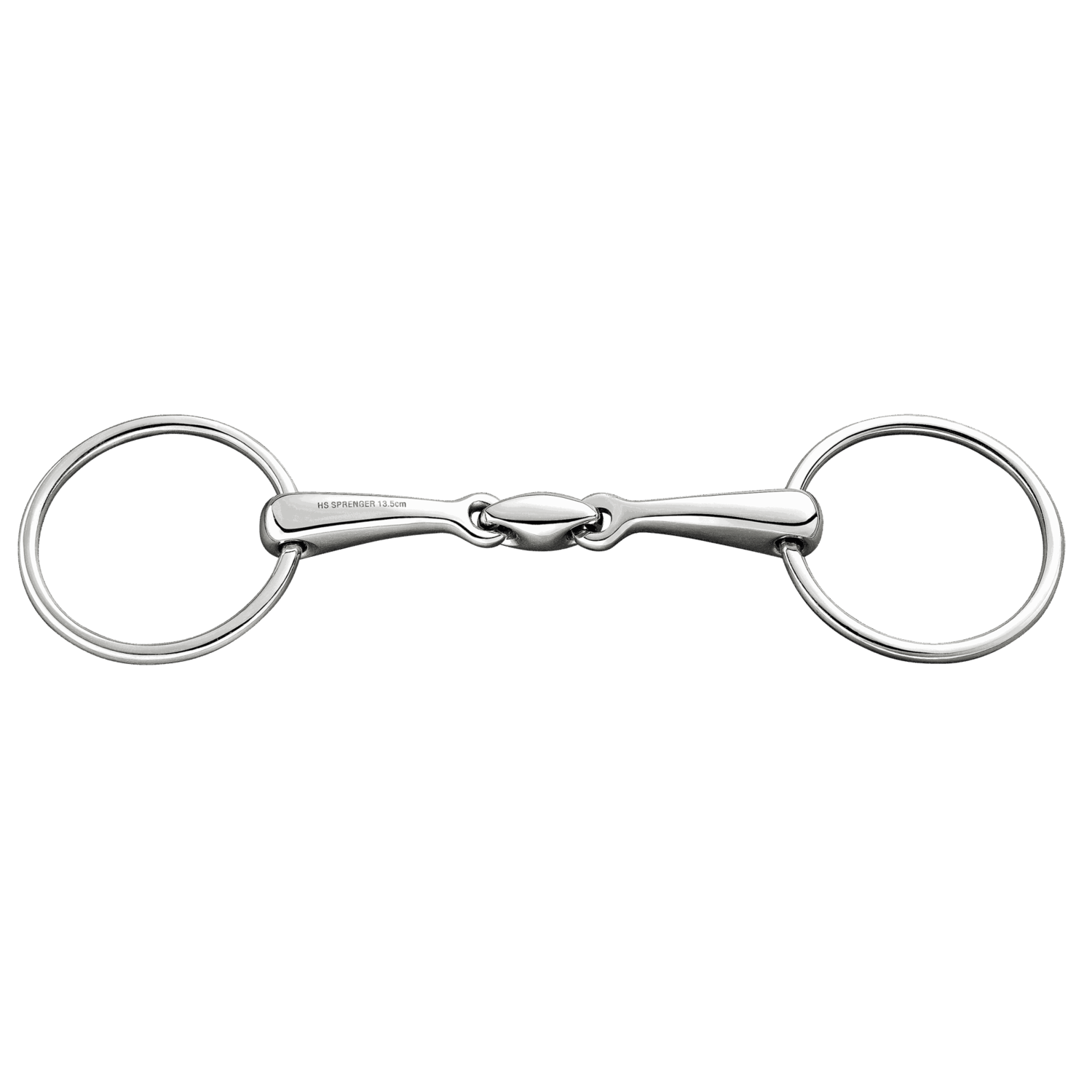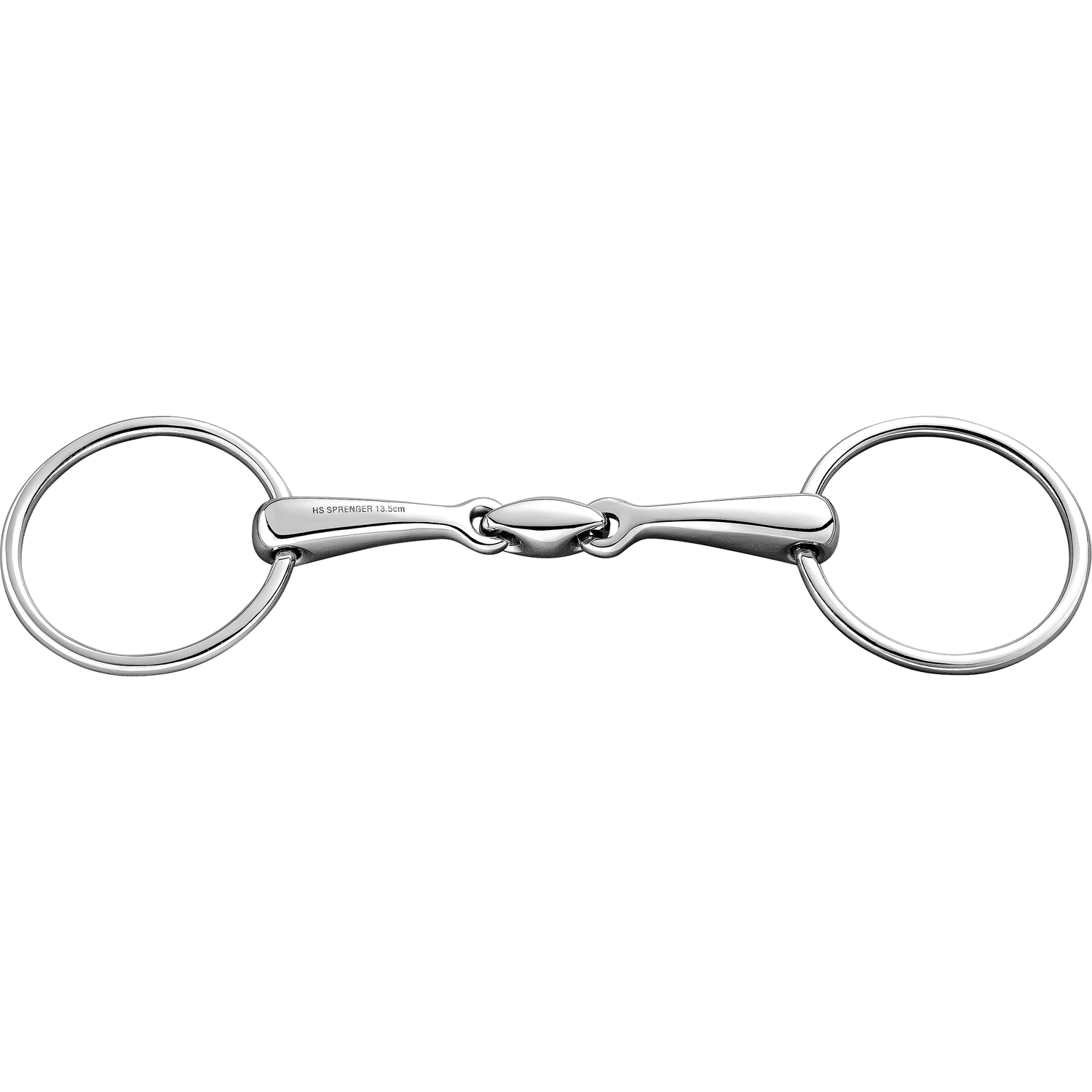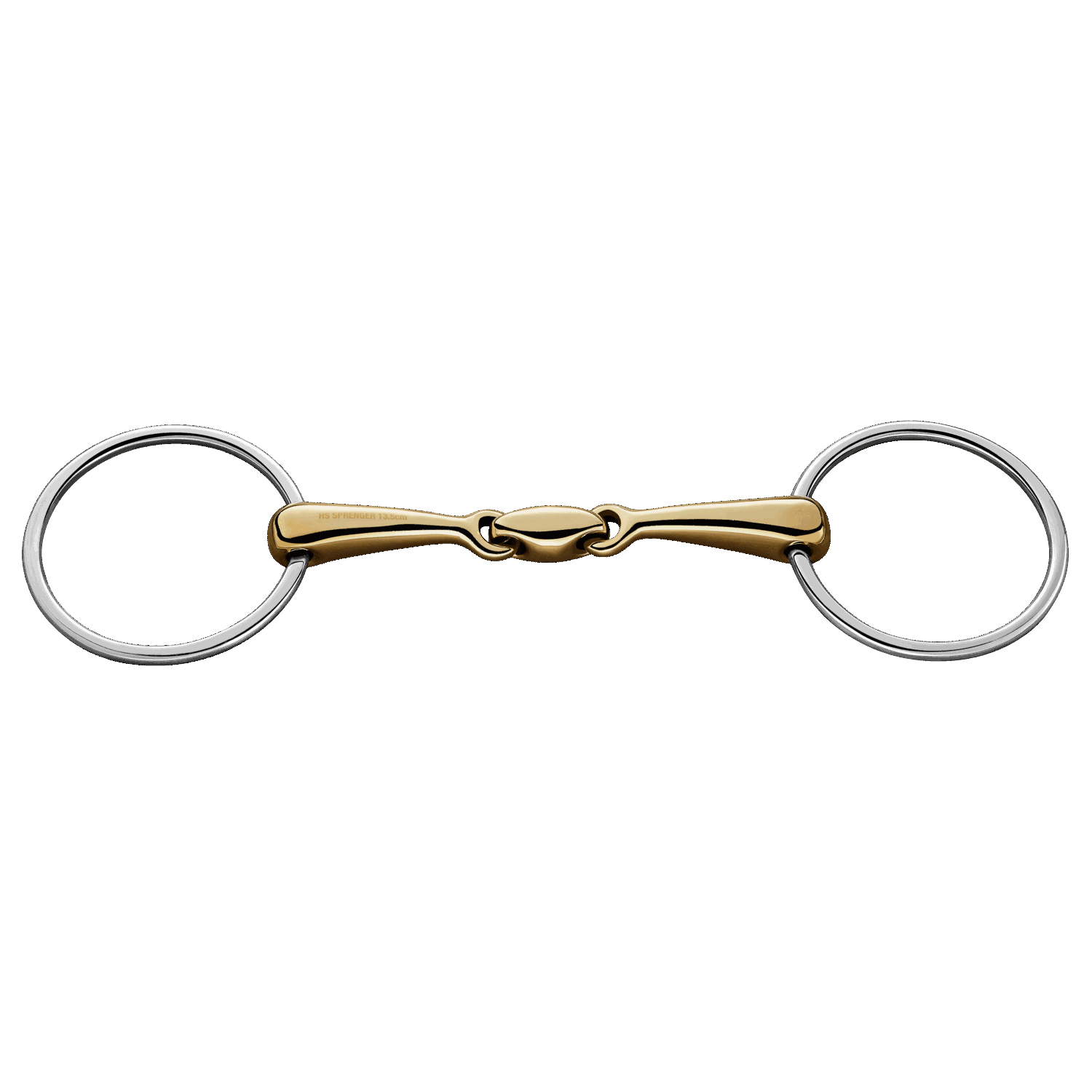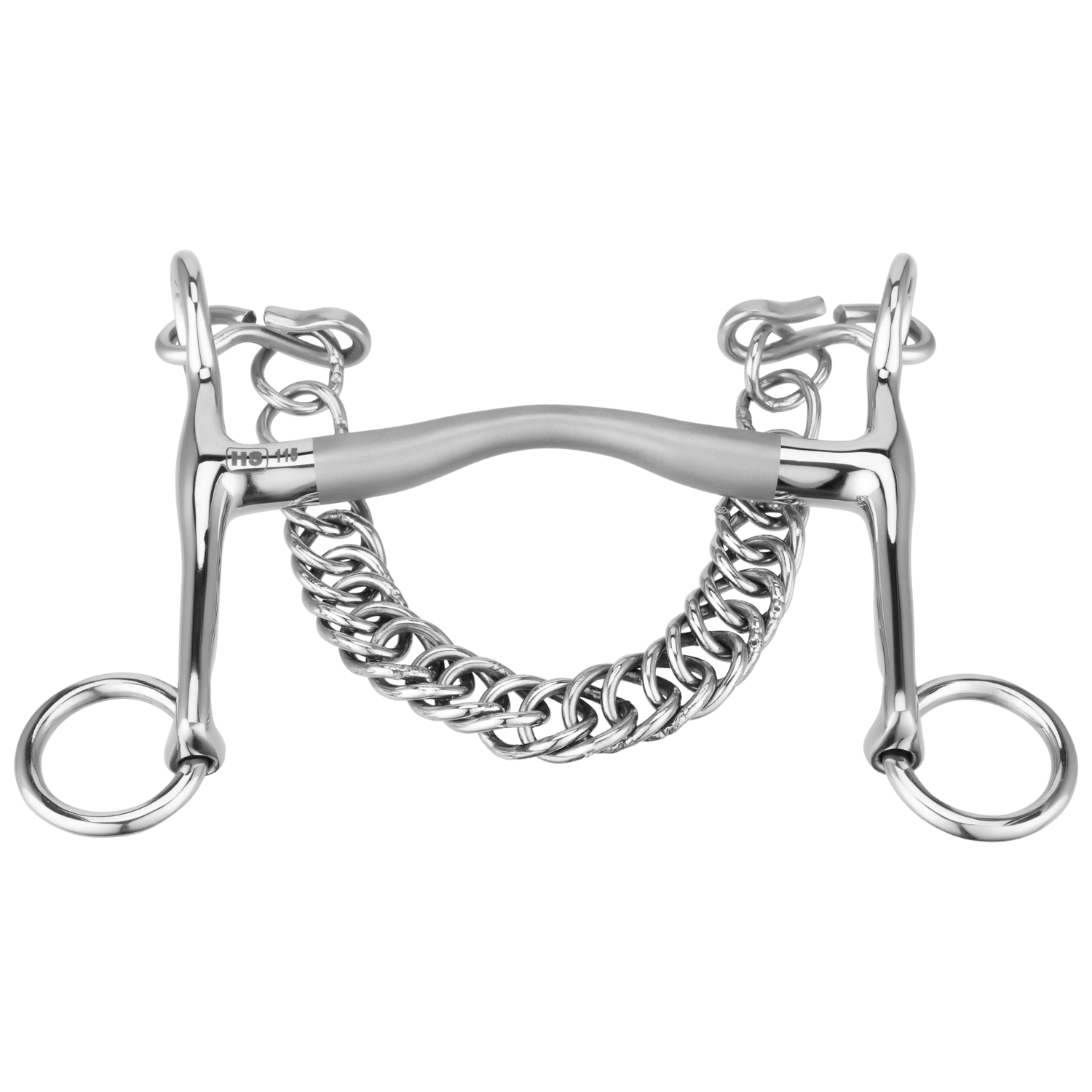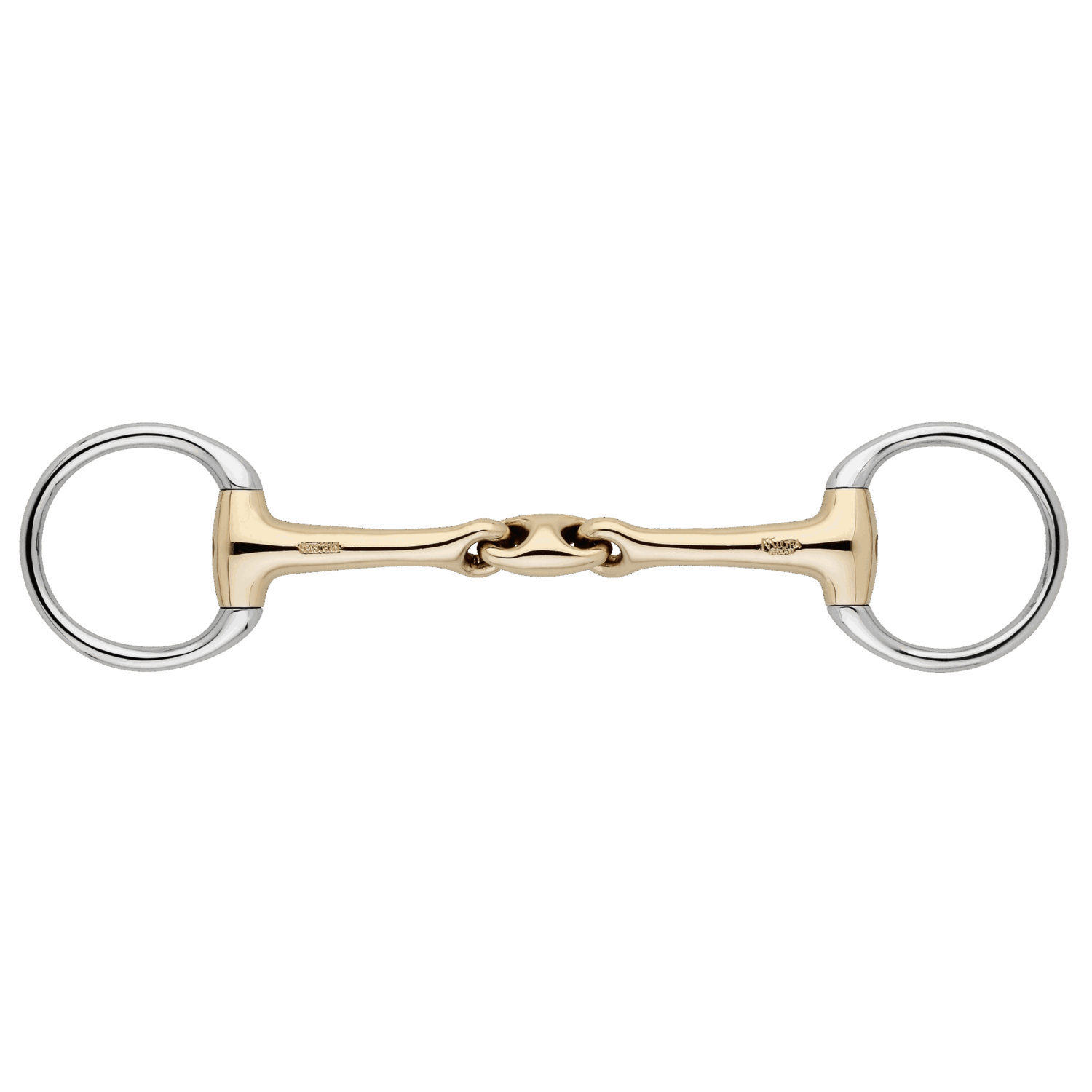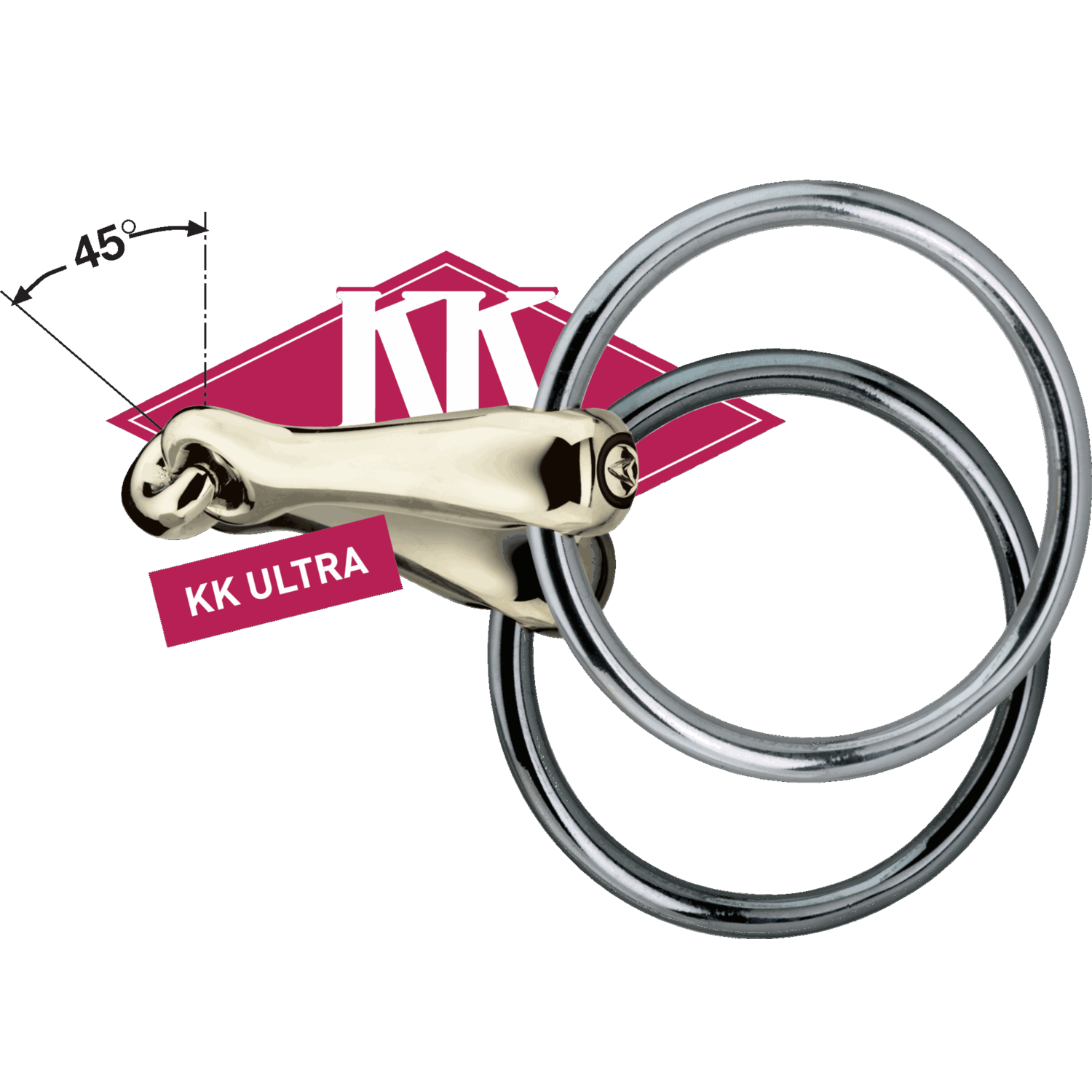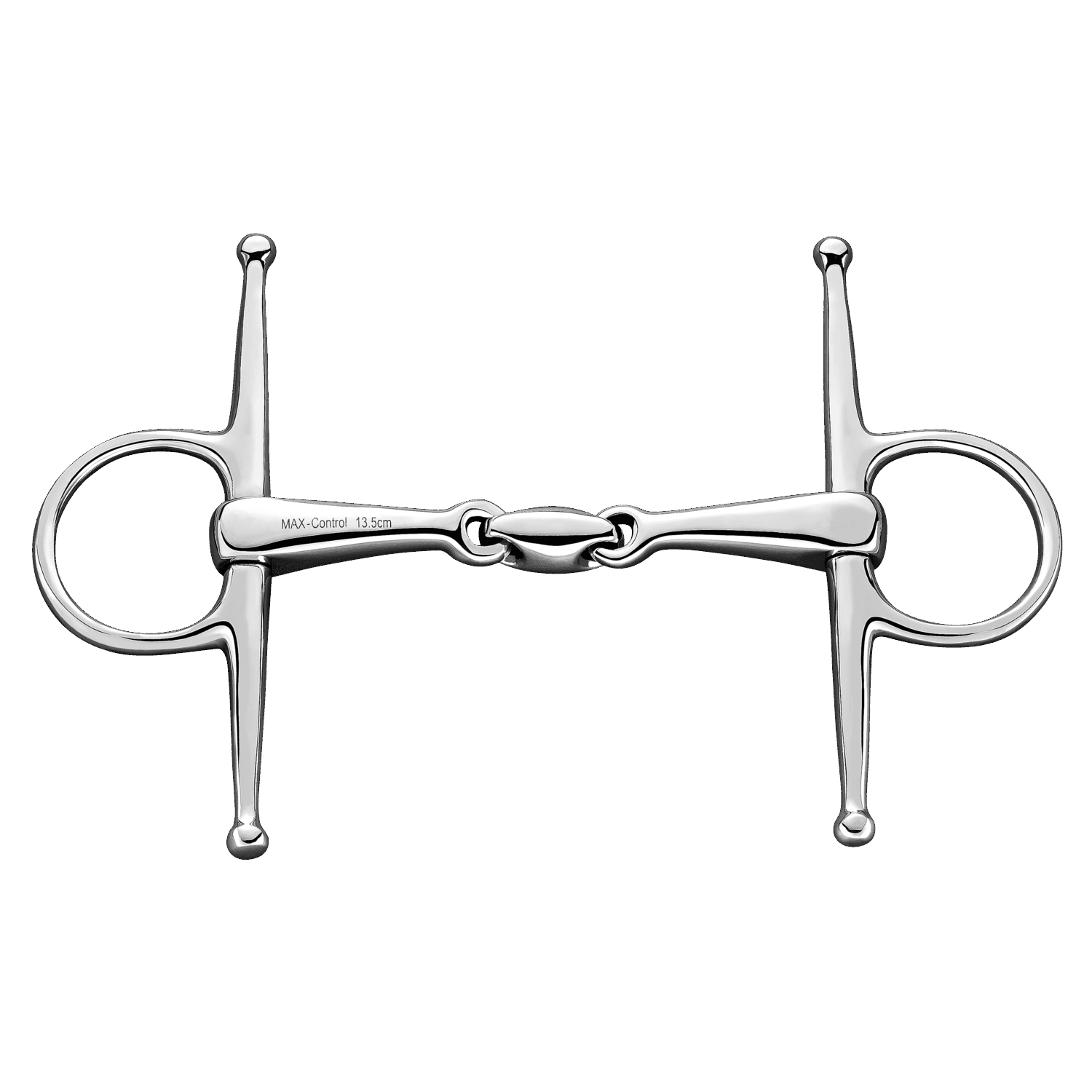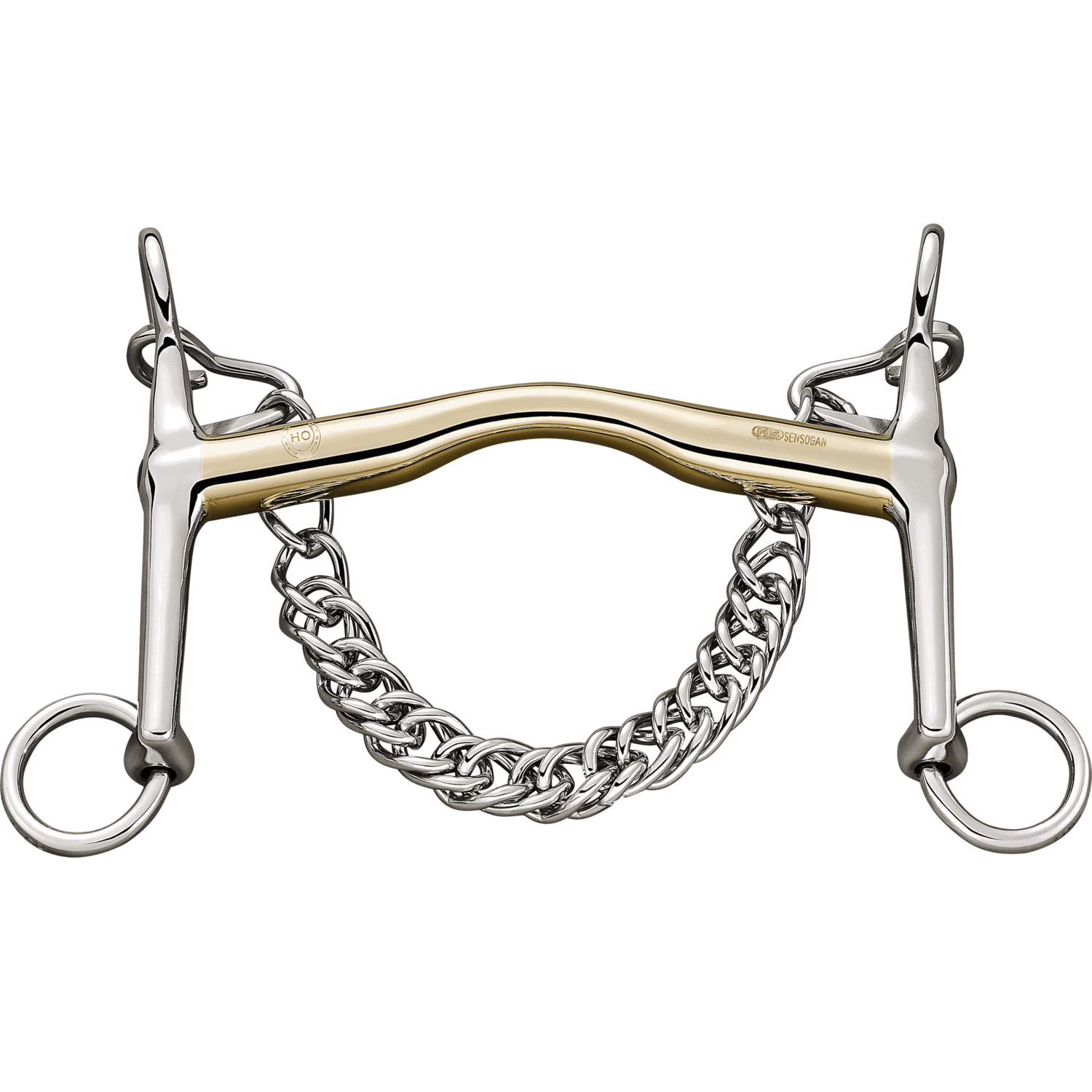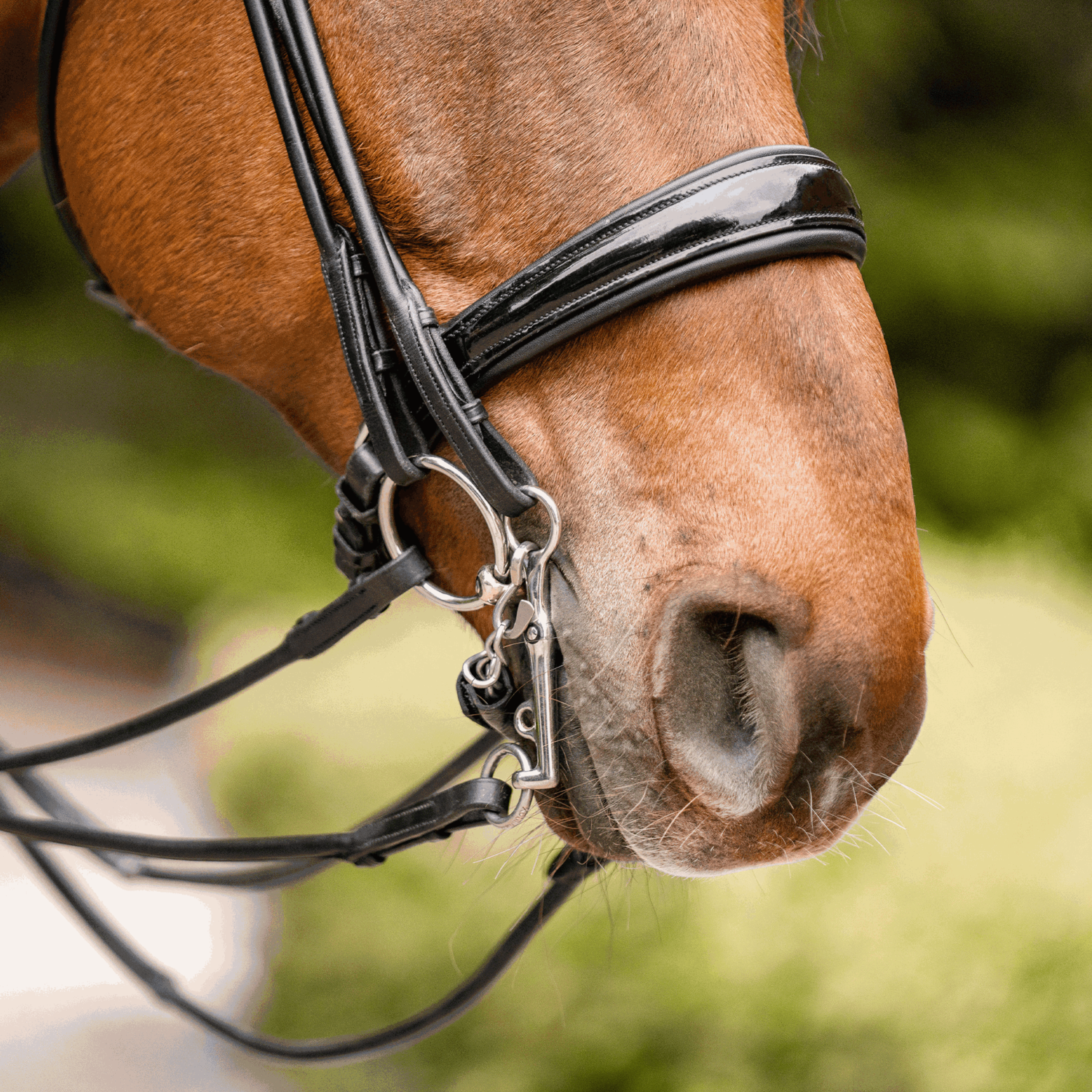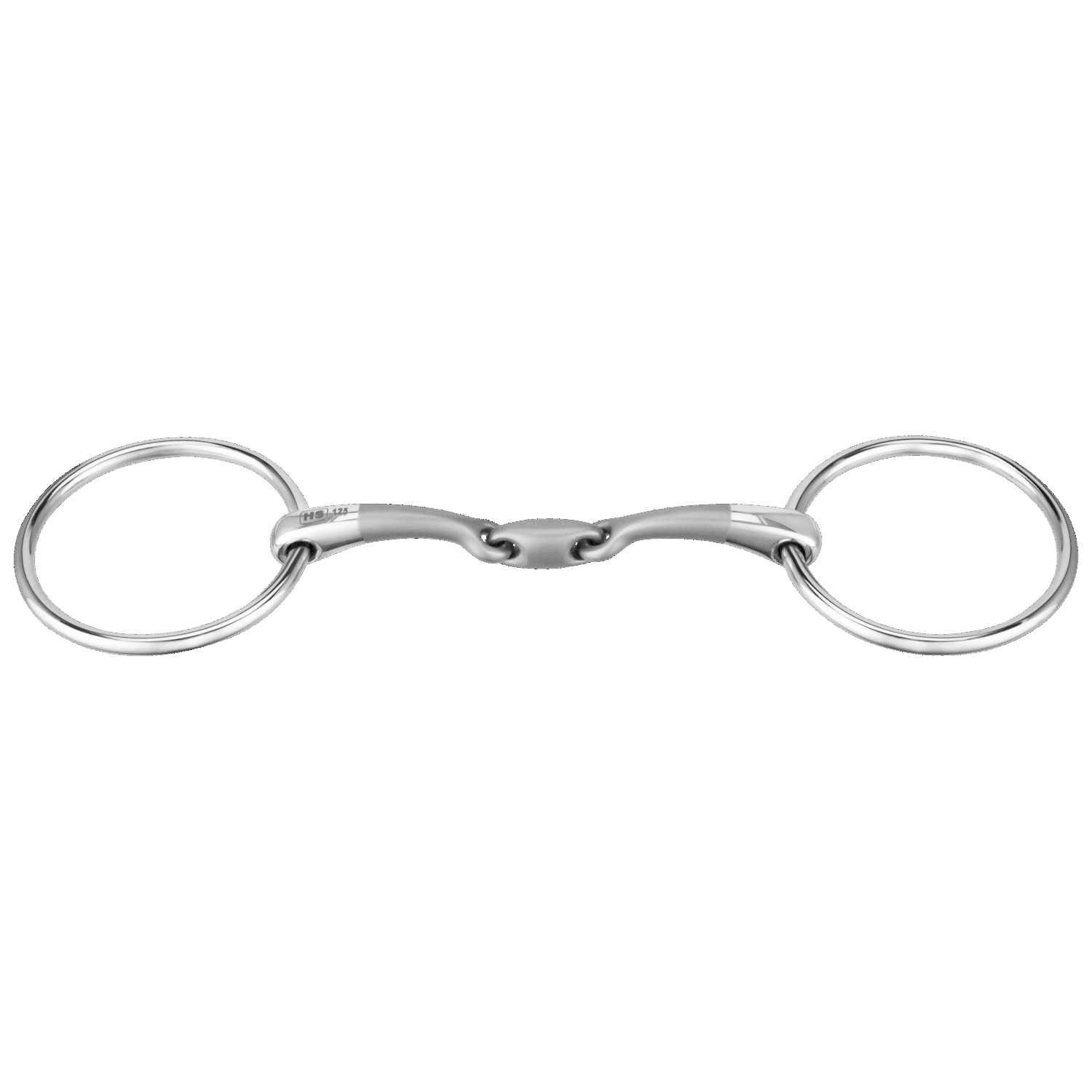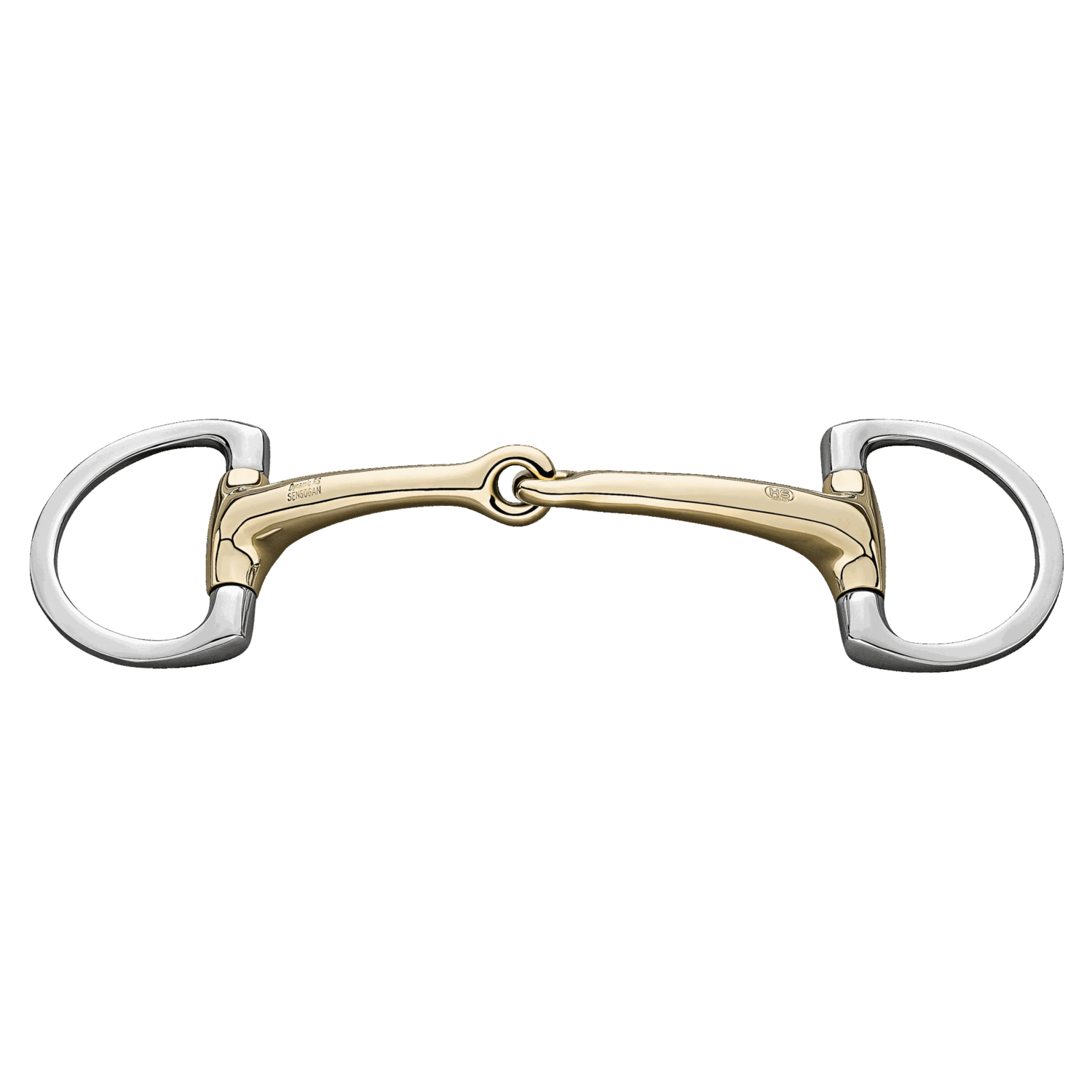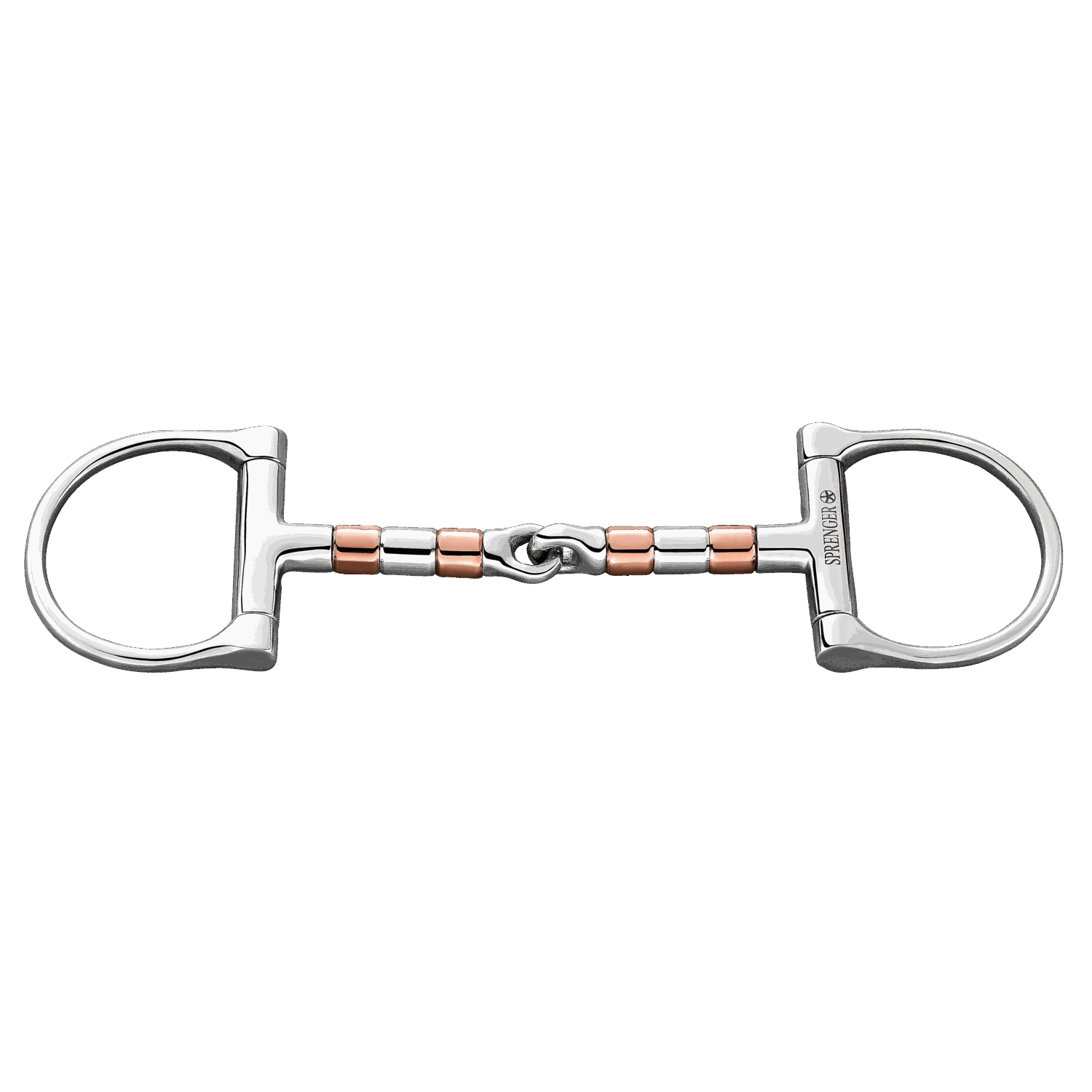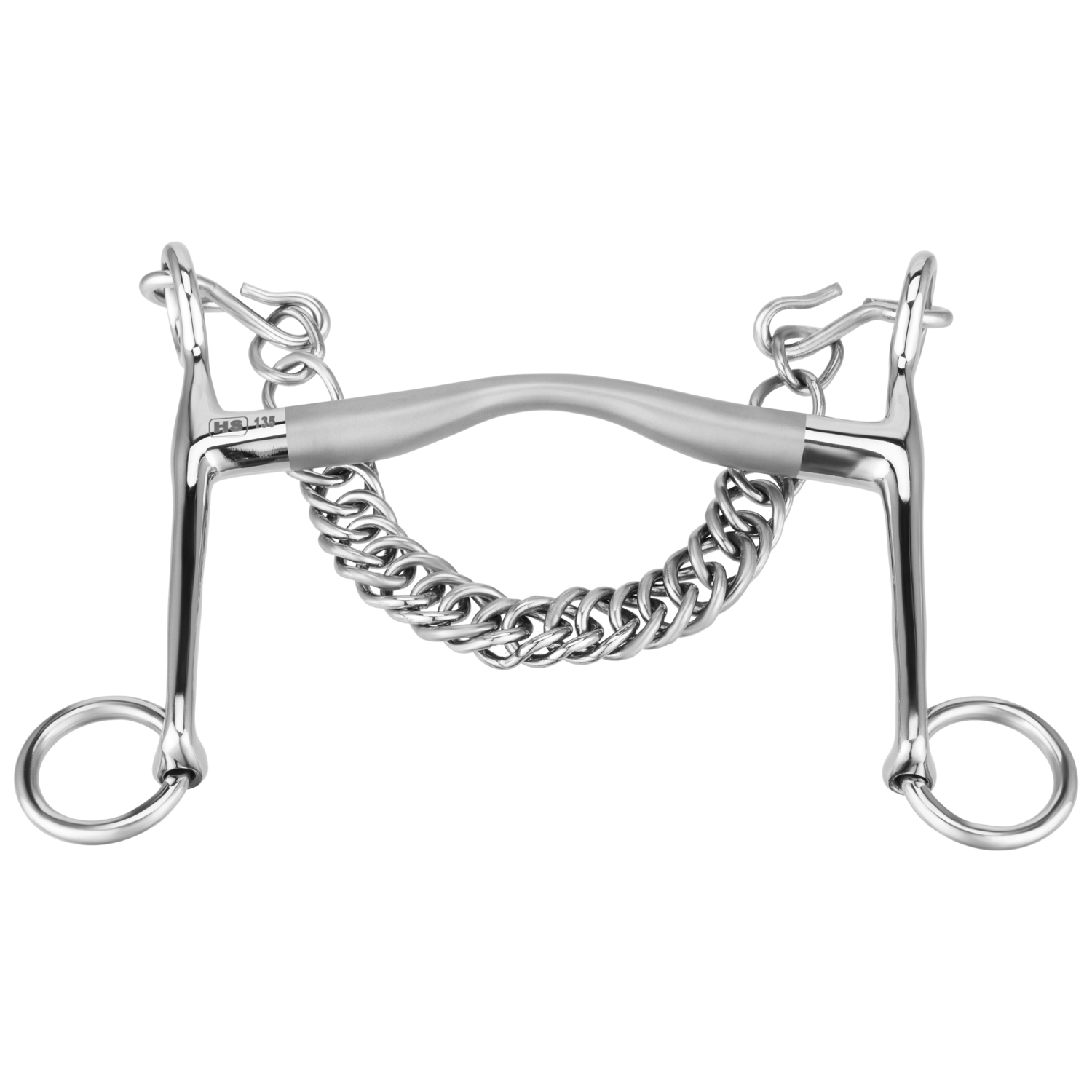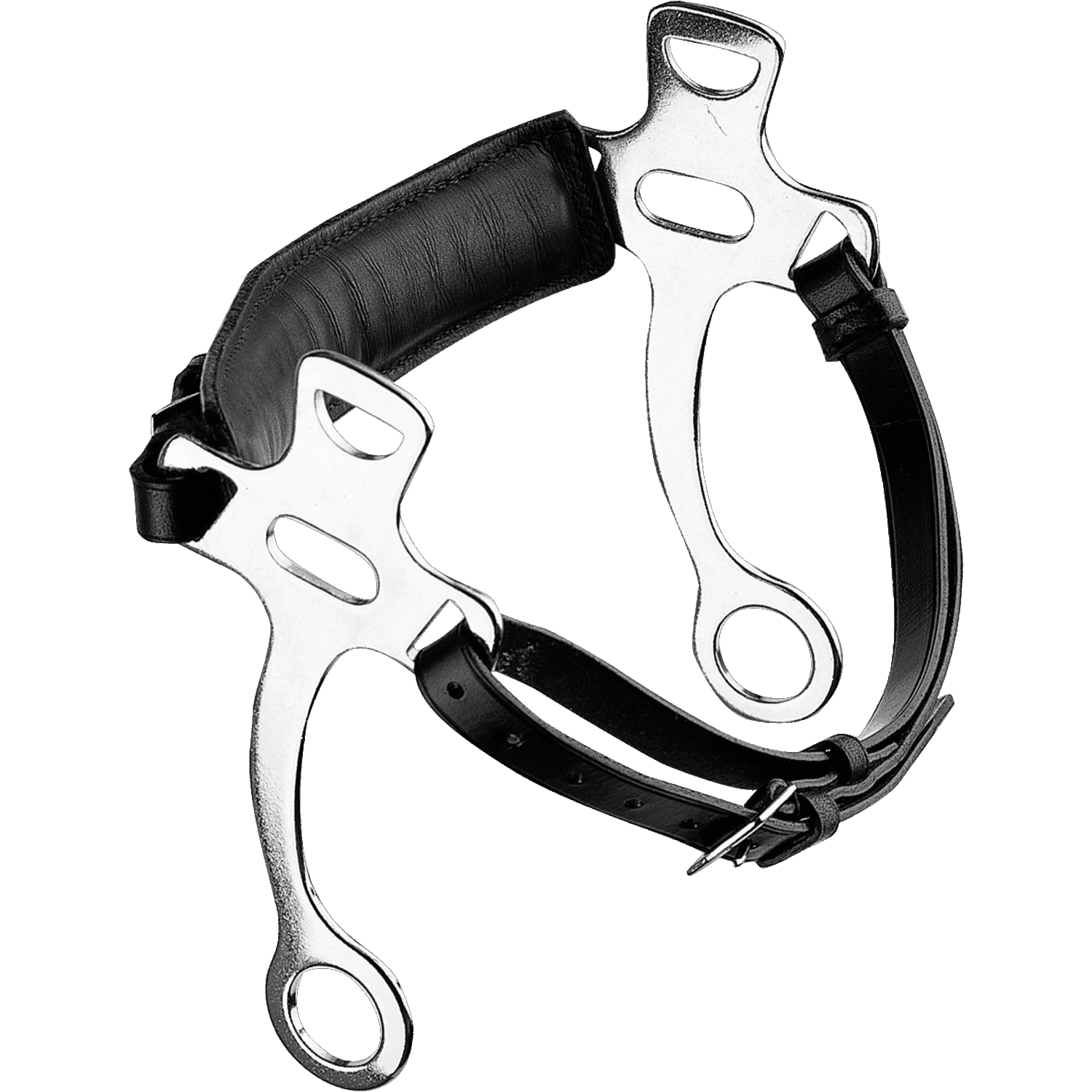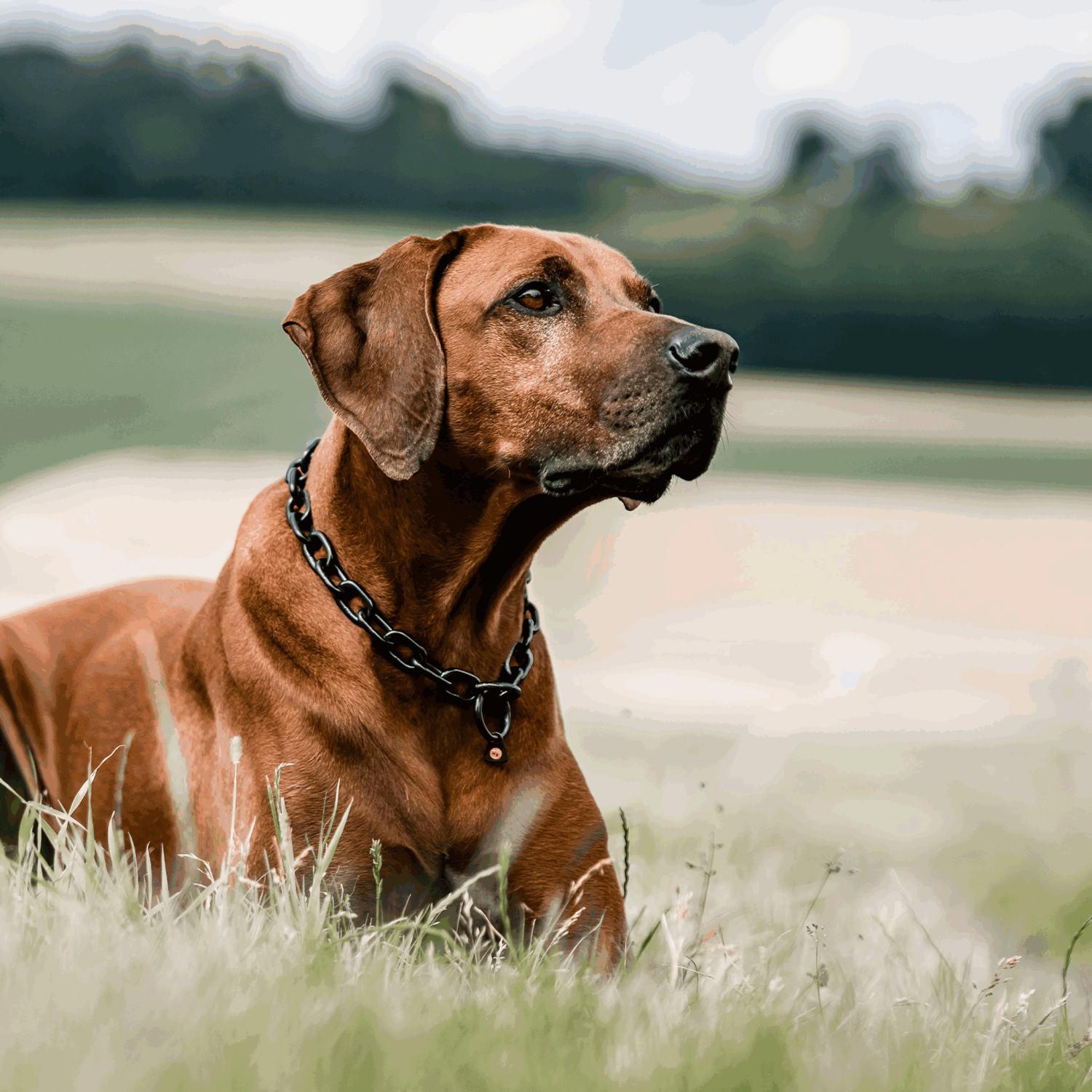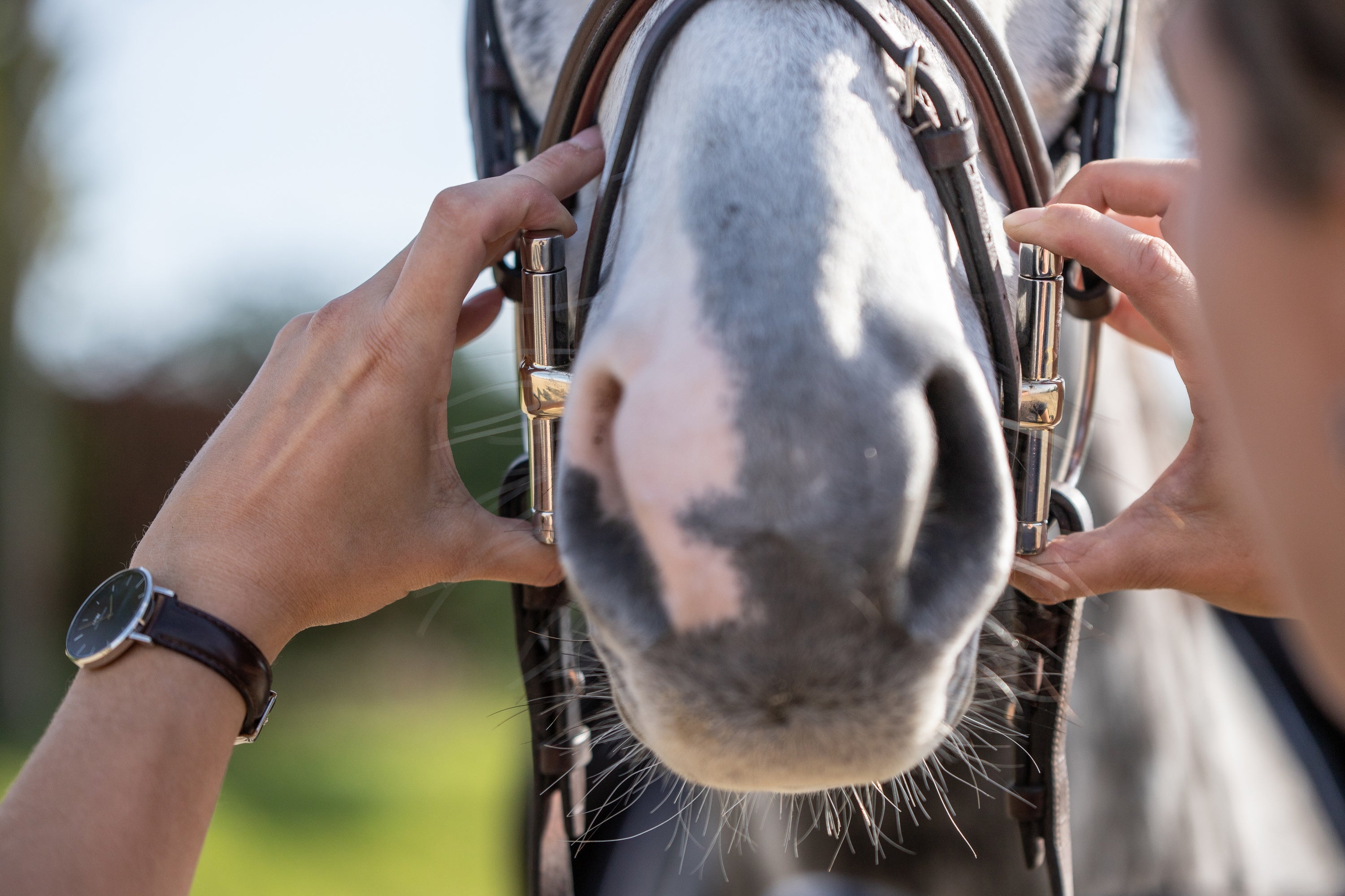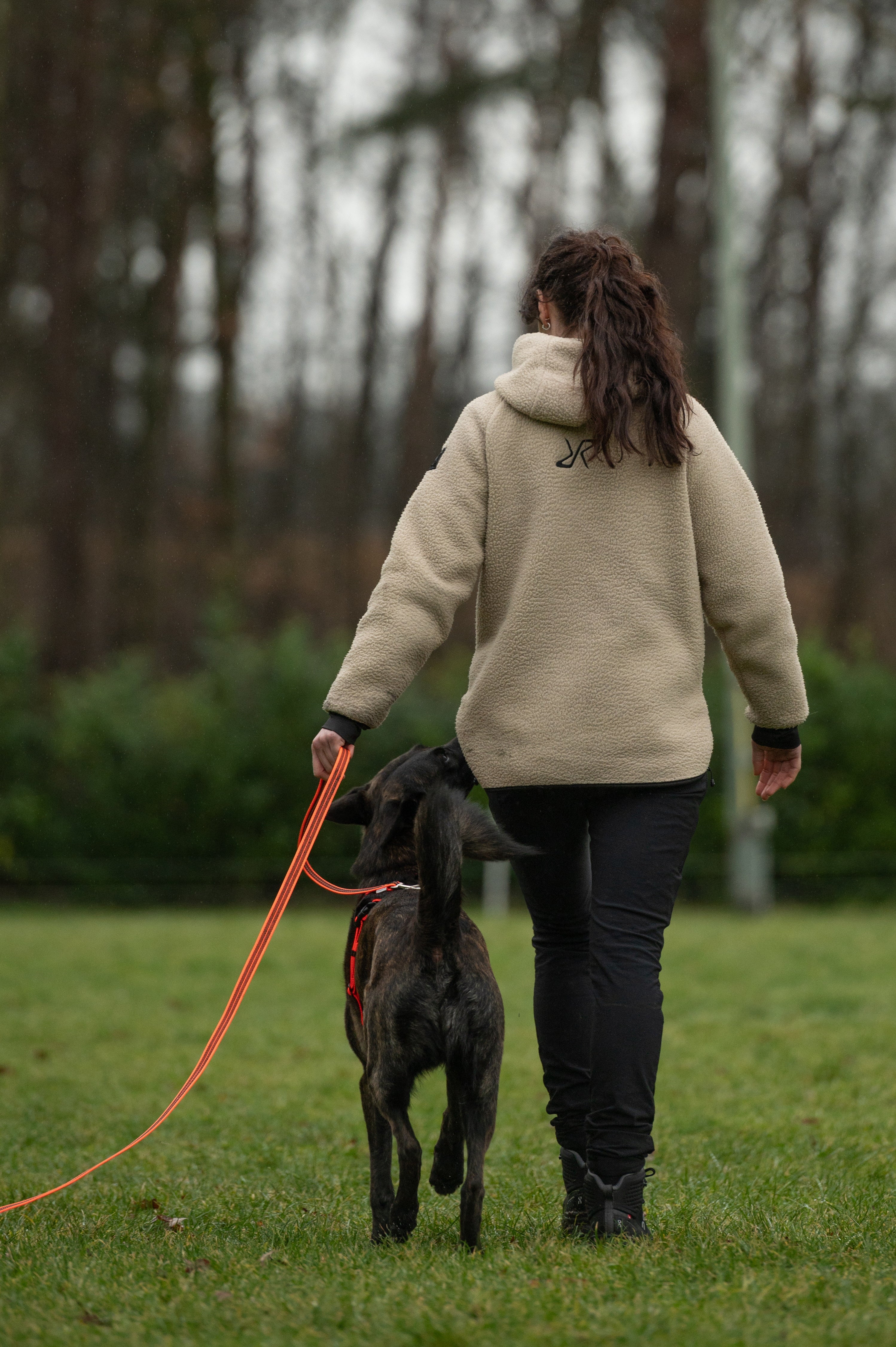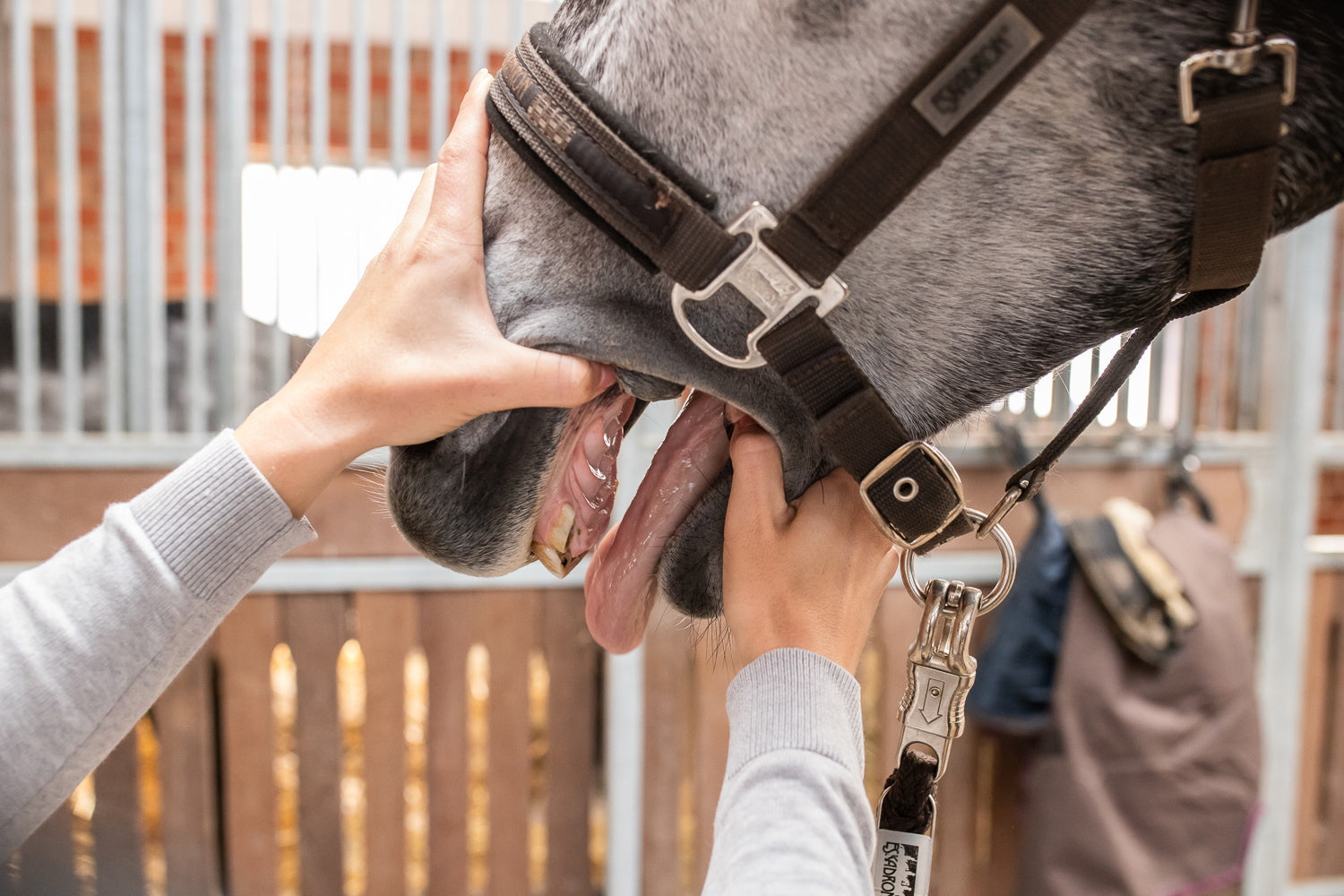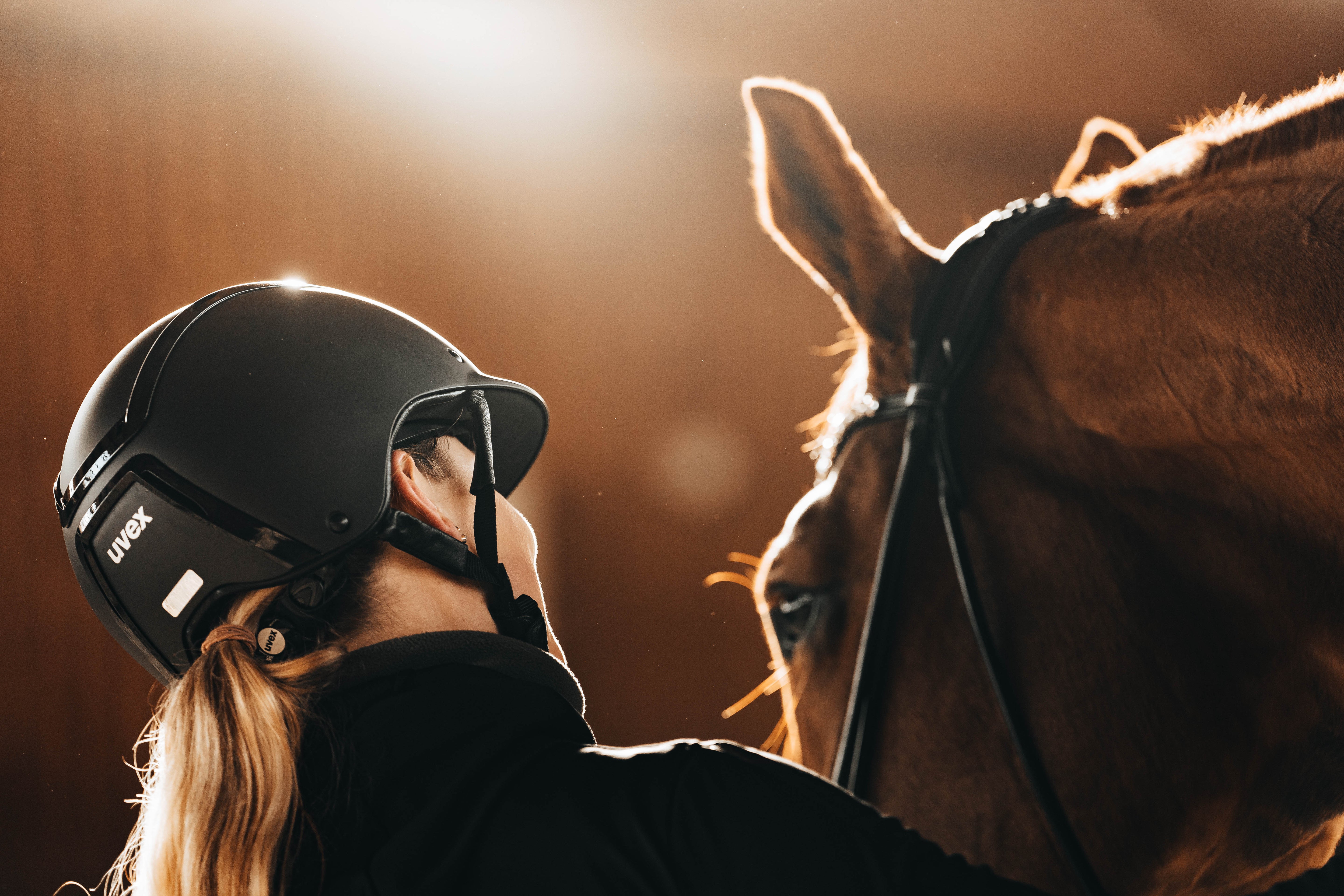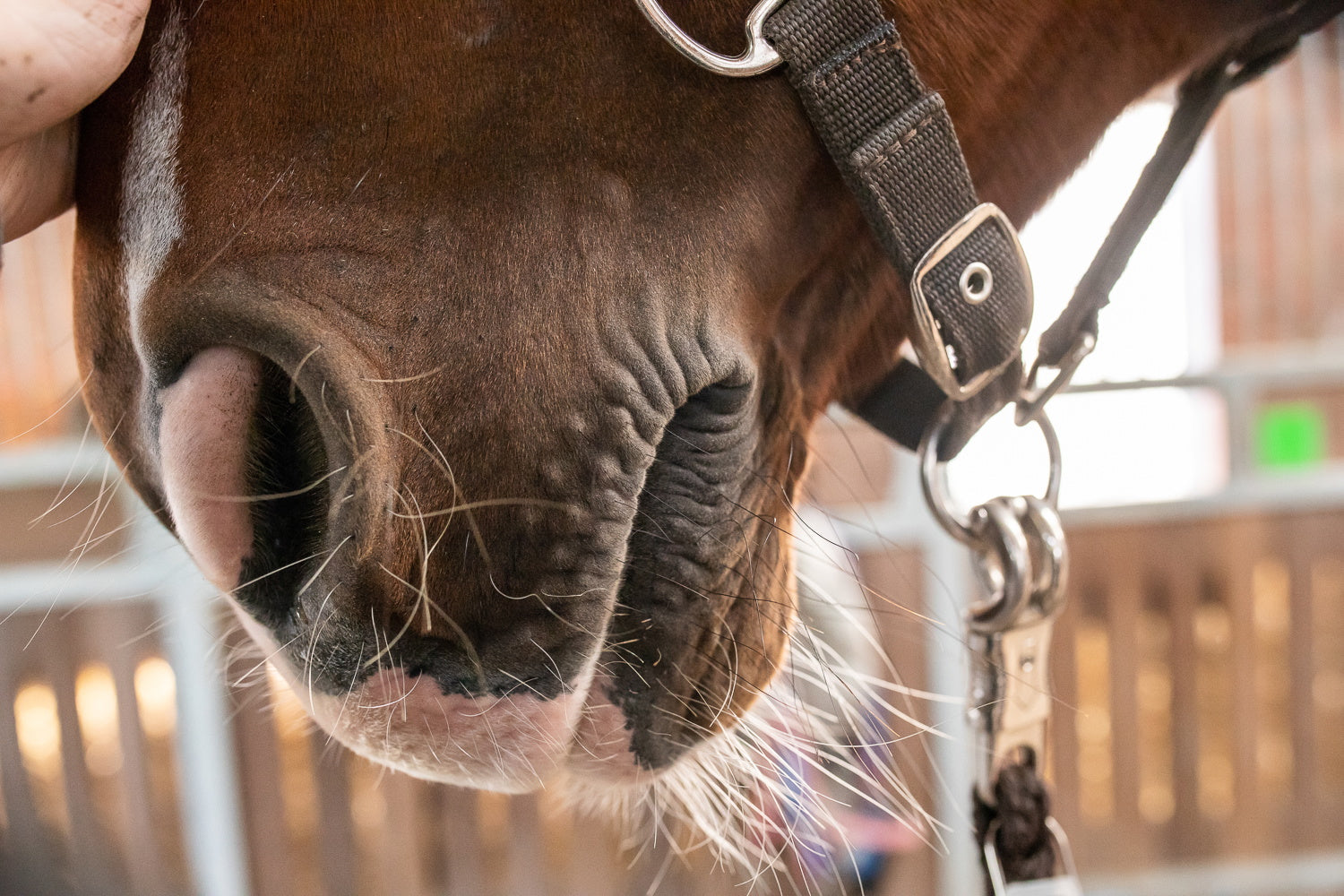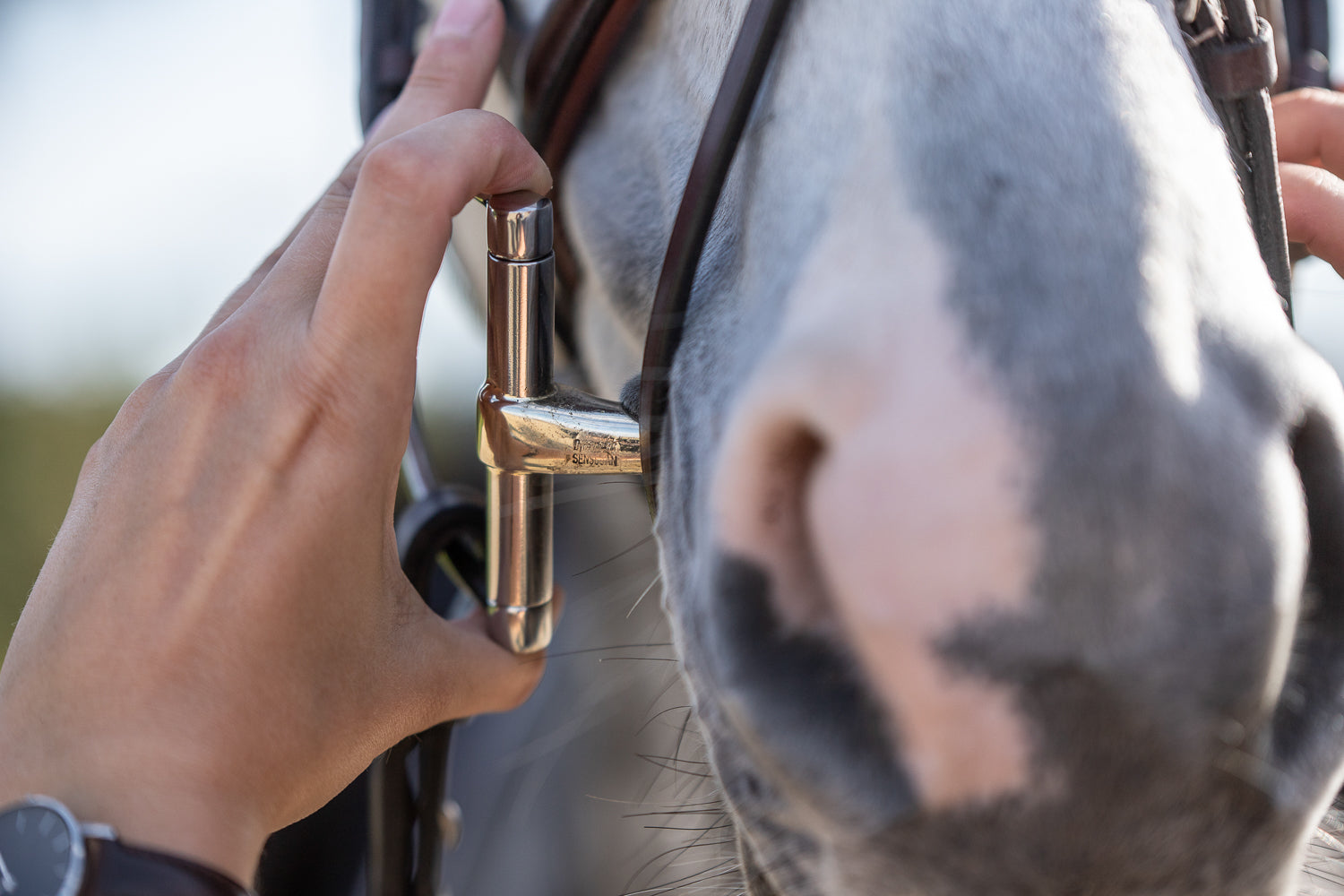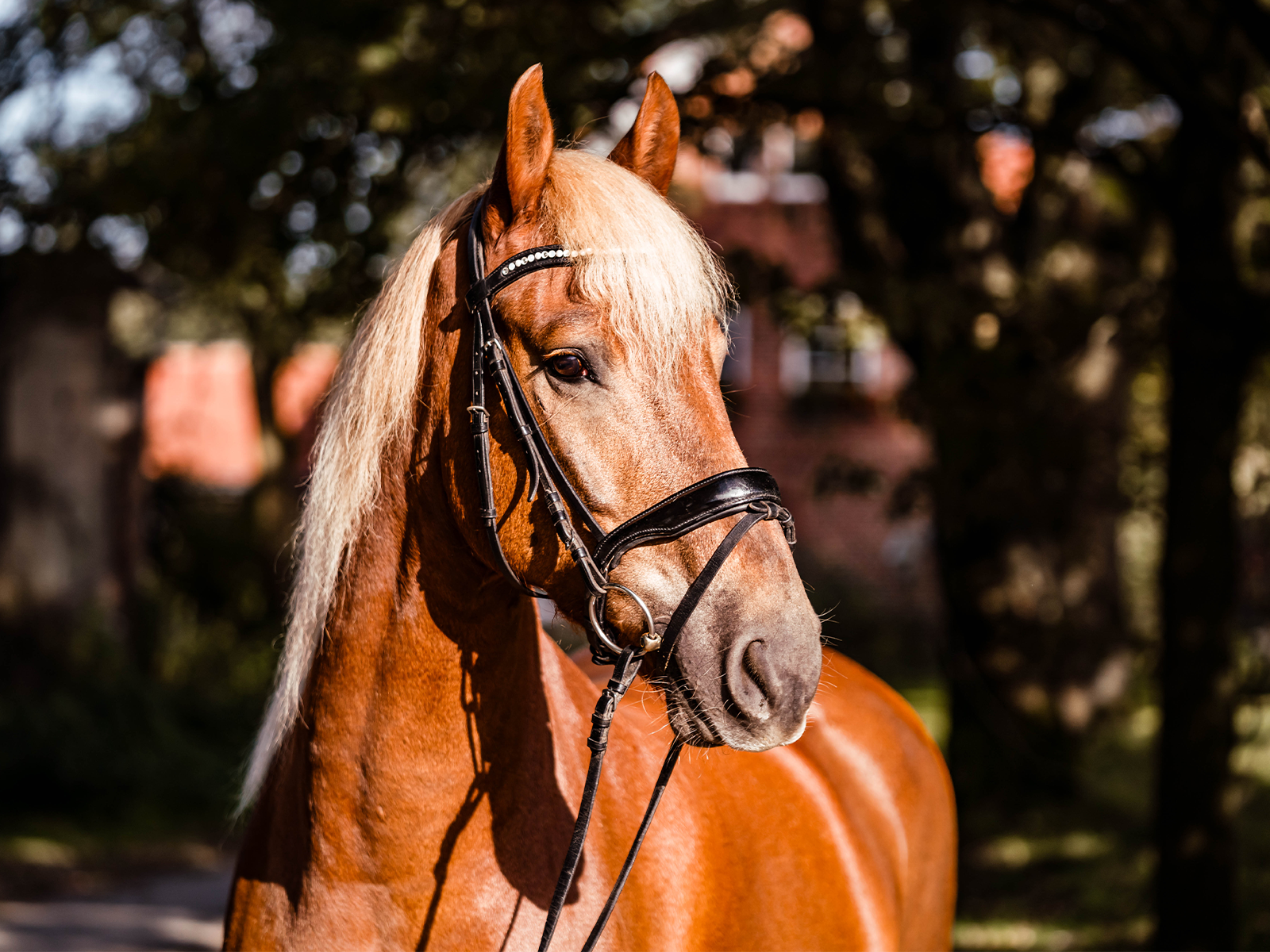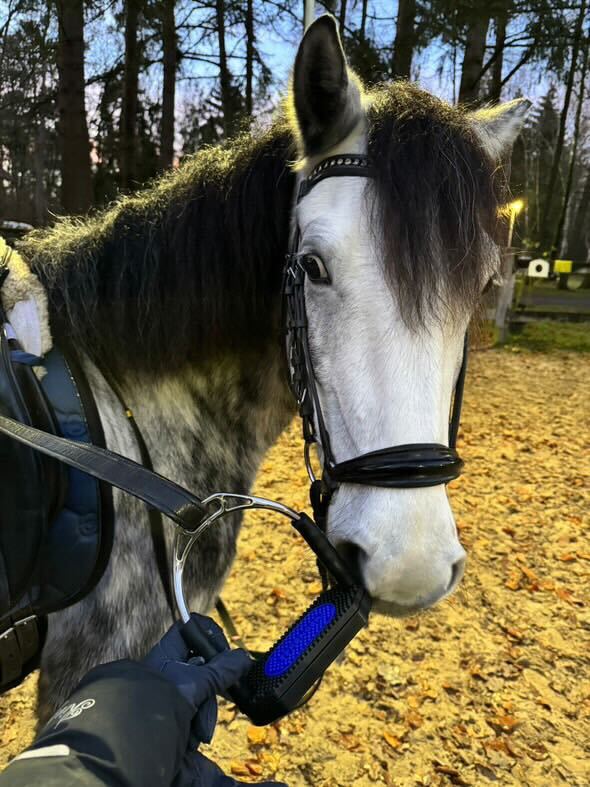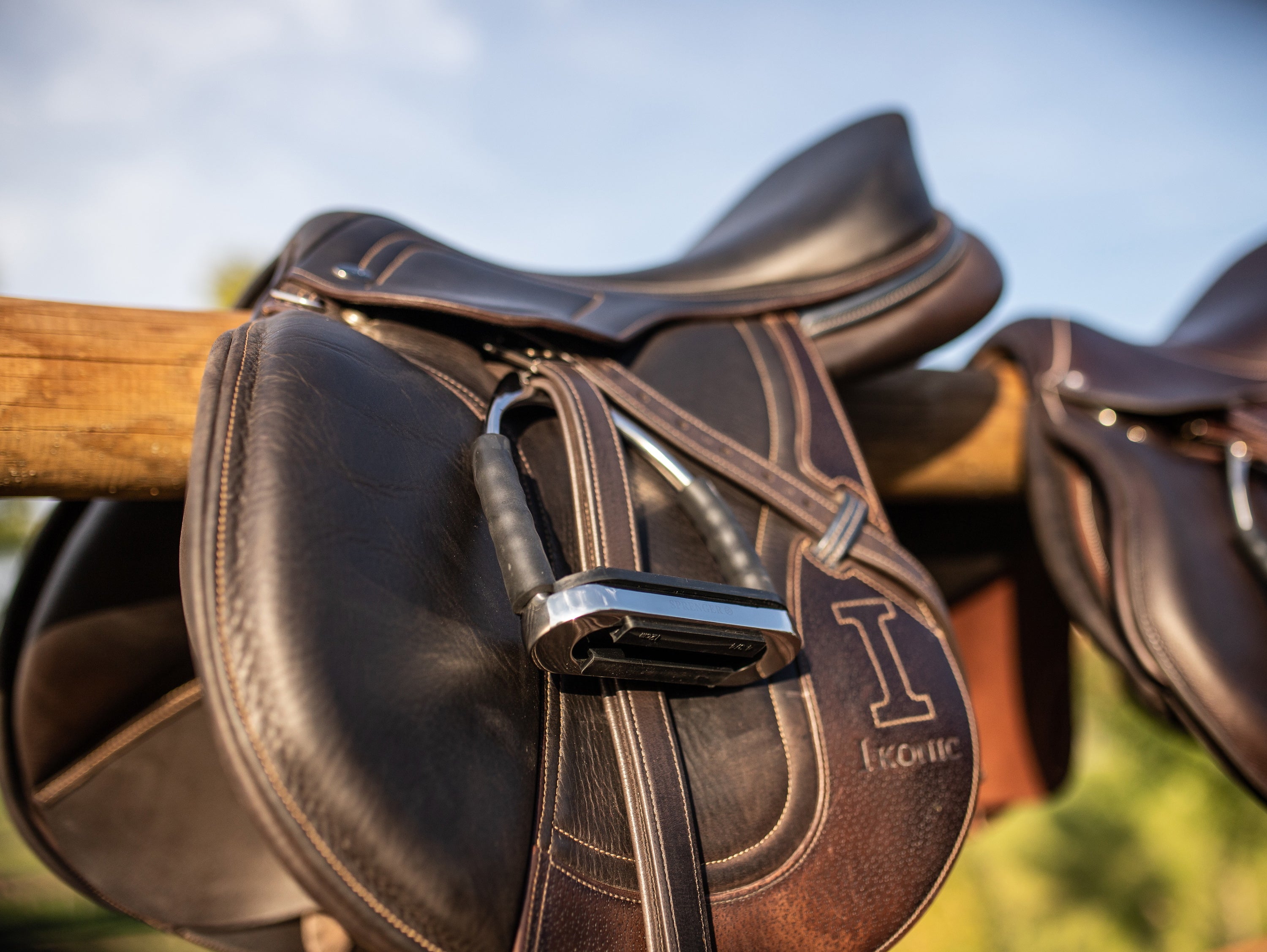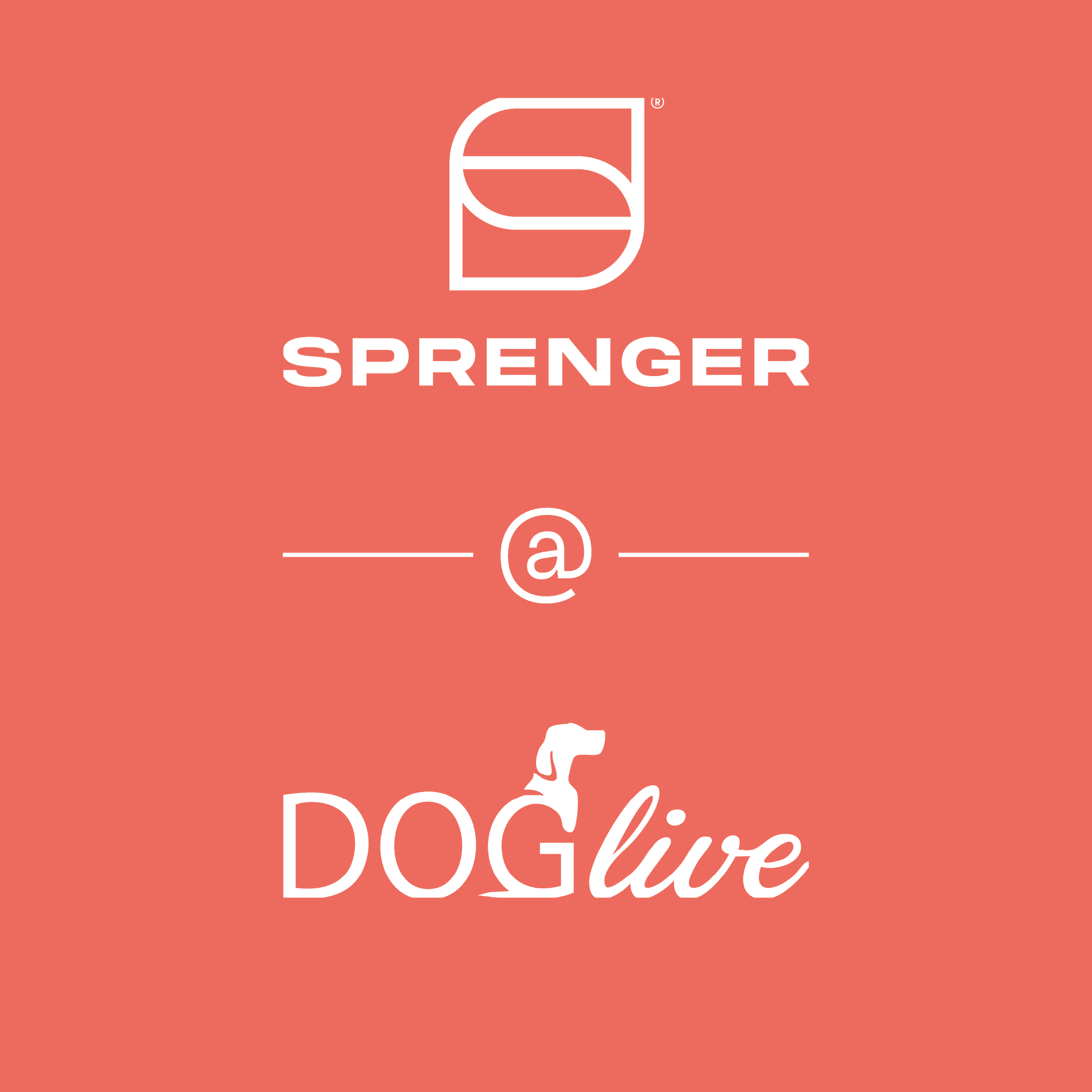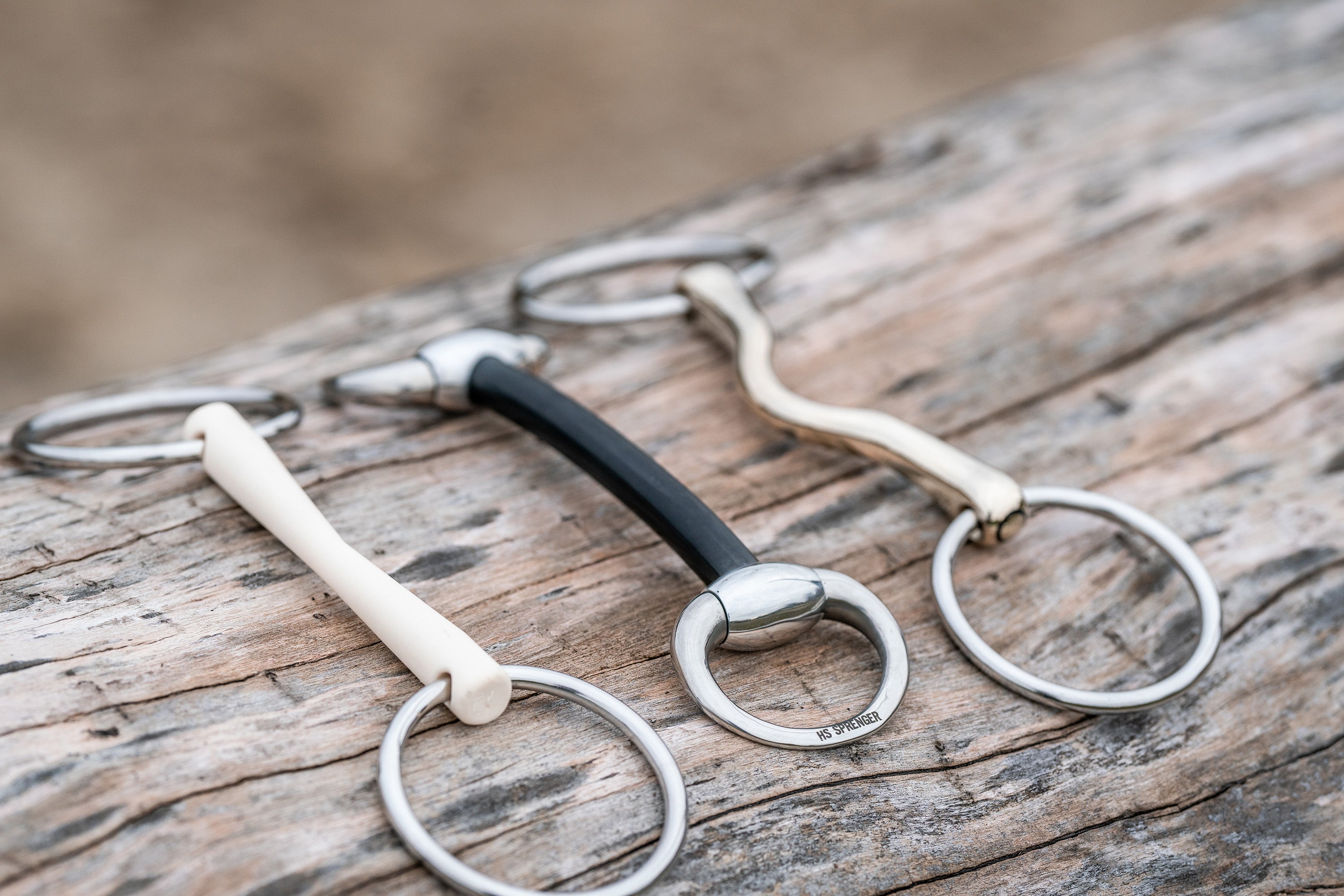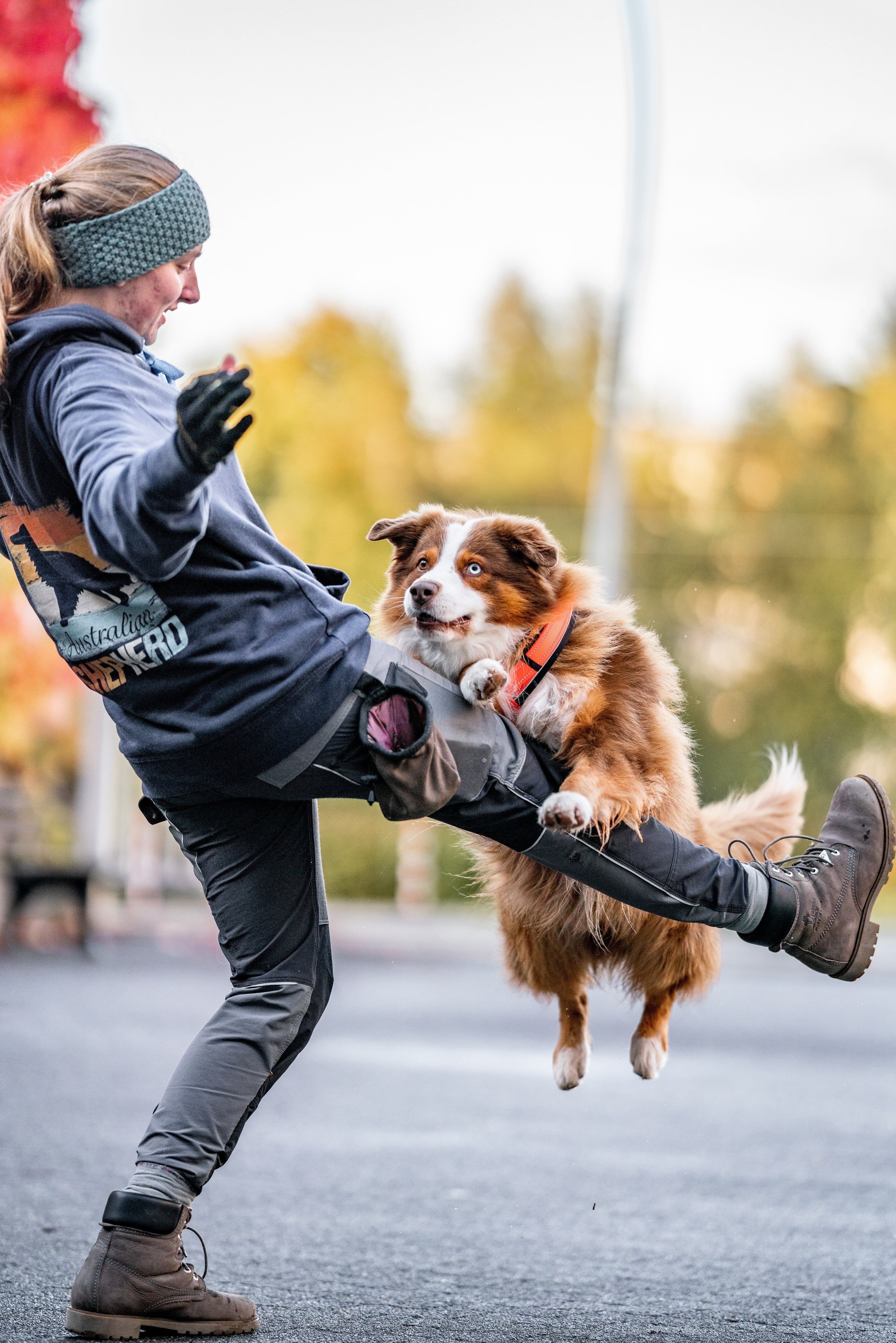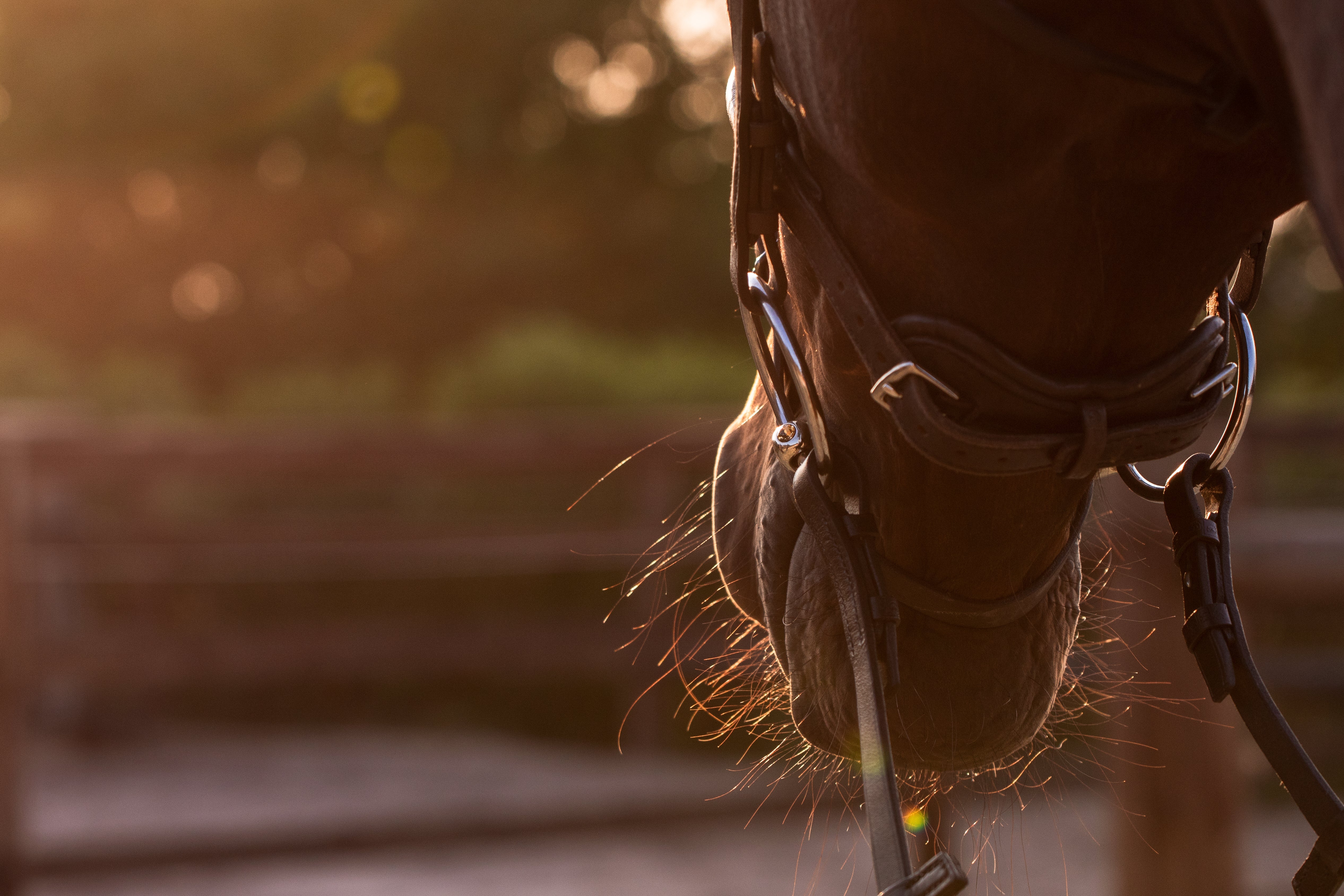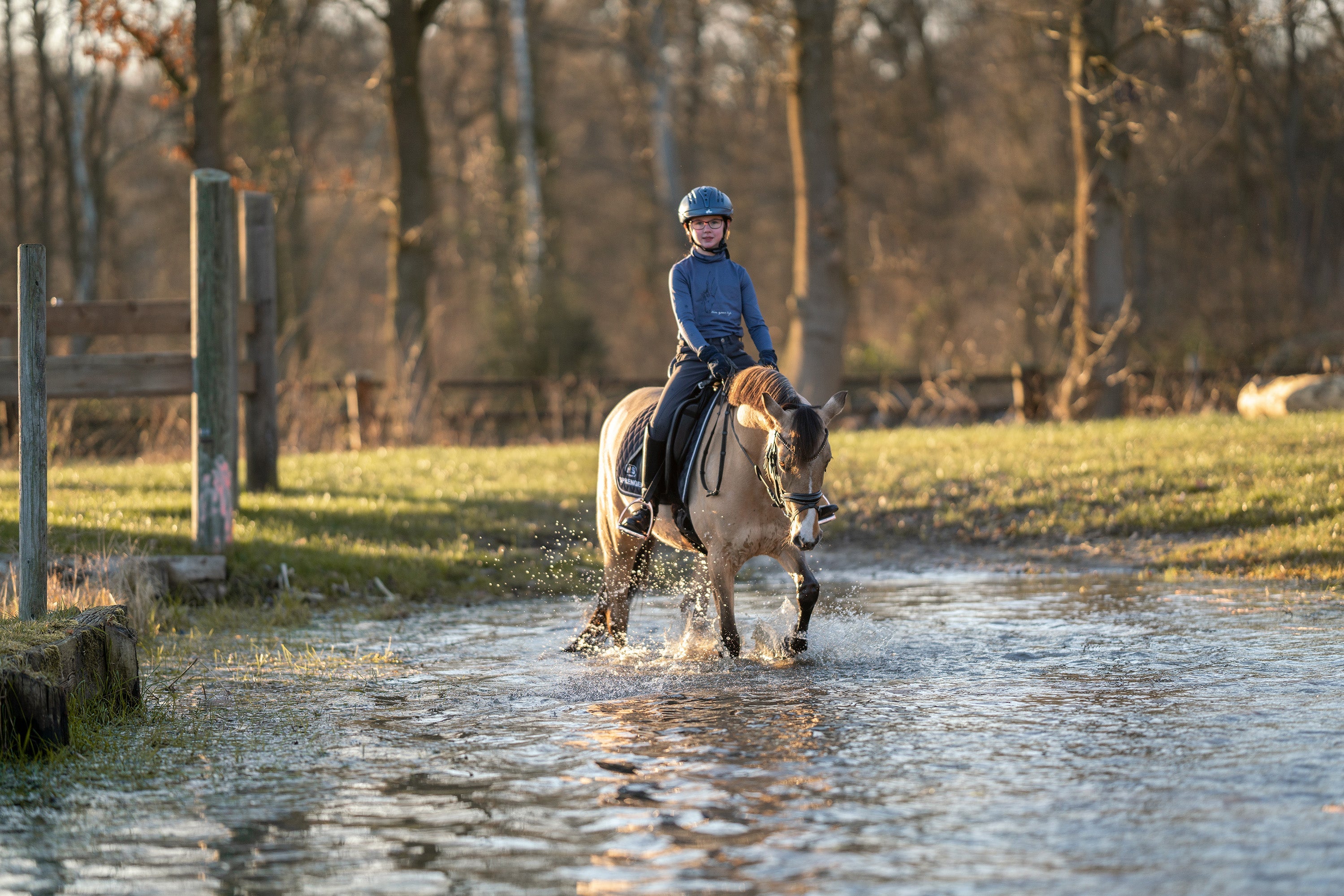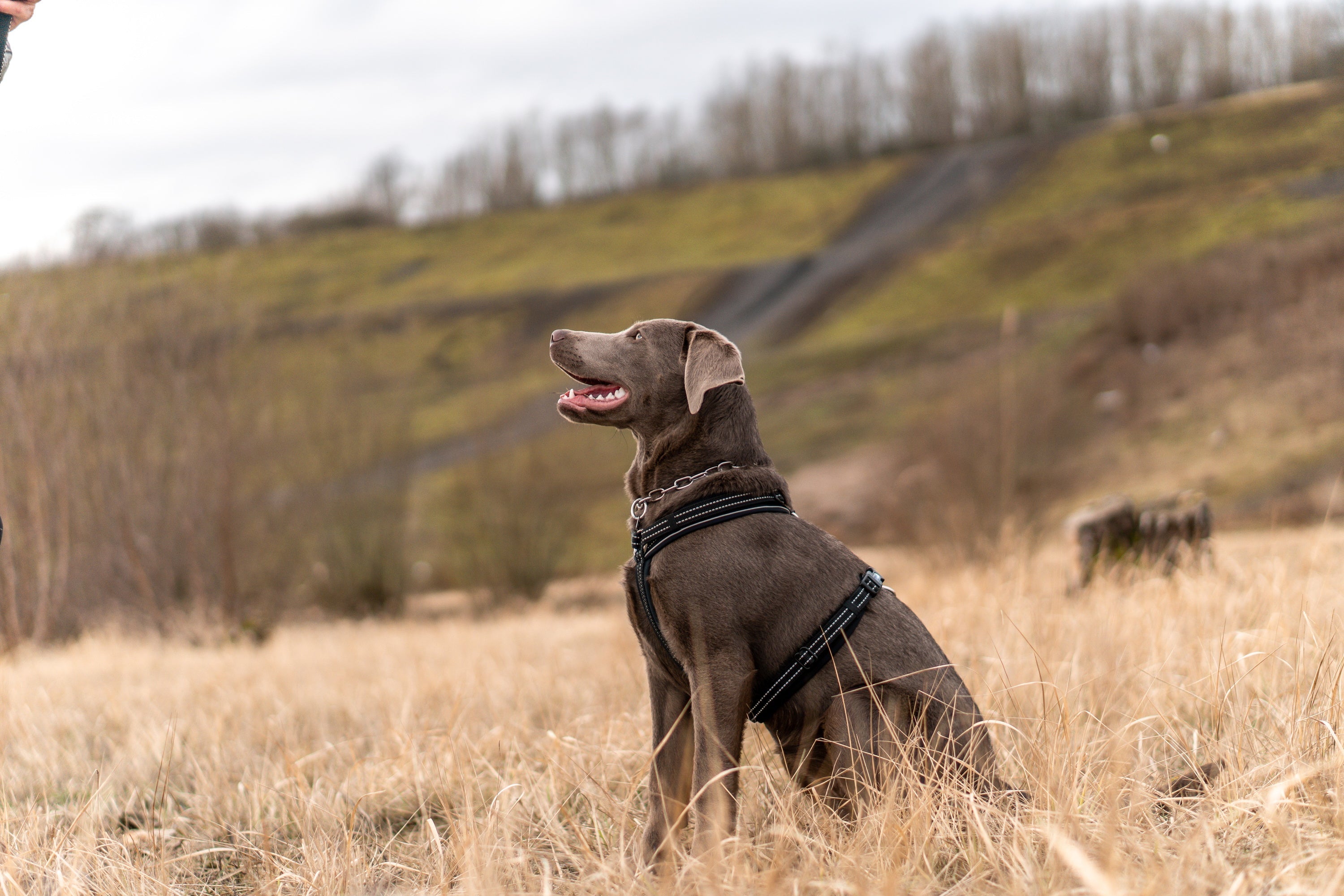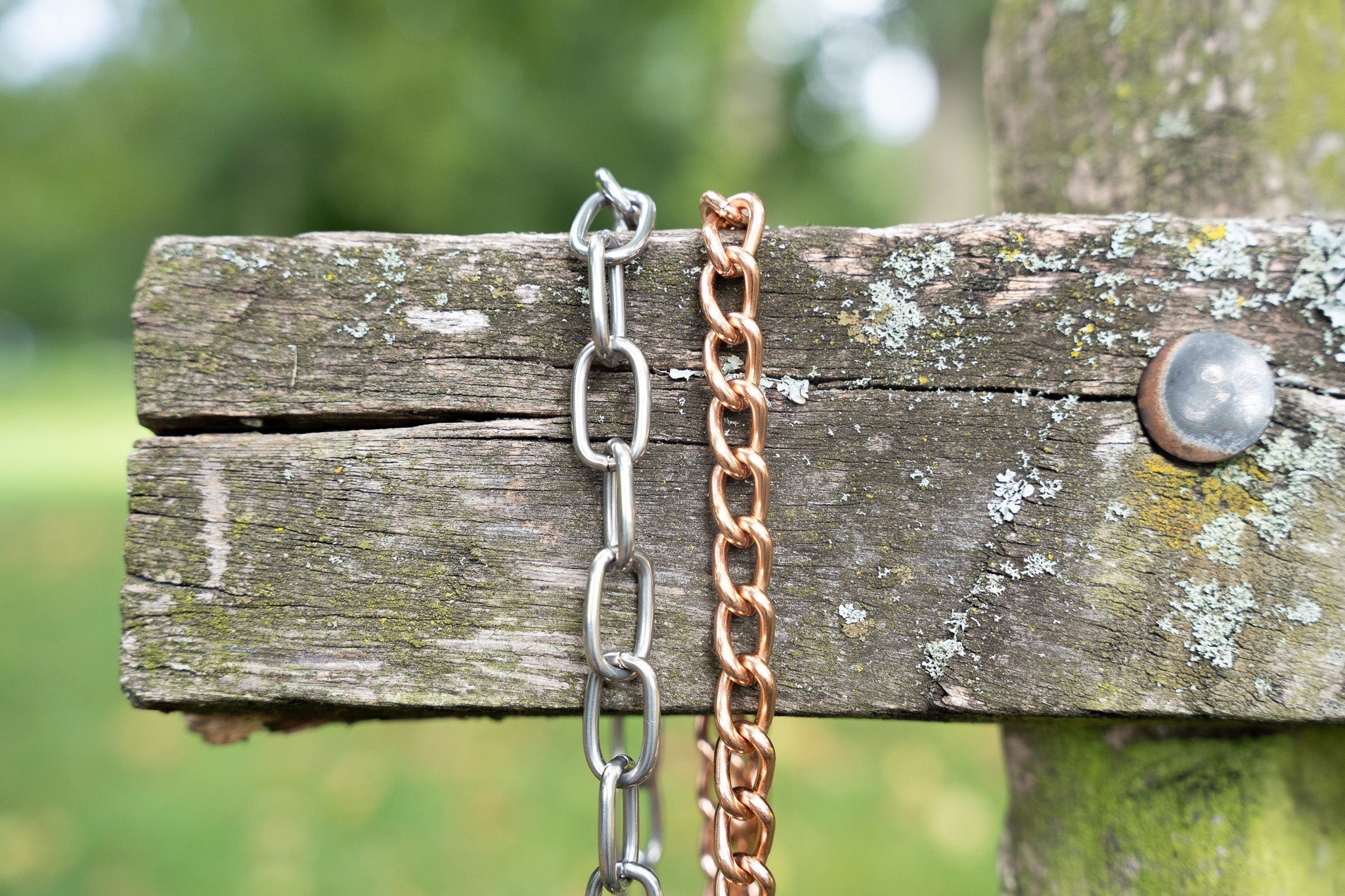Bits play a crucial role in the communication between rider and horse. They should precisely and effectively transmit your fine signals of rein aids to your horse. In order for a bit to have the desired effect, two essential factors are important: the shape and size of the bit must fit your horse's anatomy, and it must be buckled correctly.
There are two factors in particular to consider when choosing the size of a bit:
Let's start in order: If you want to check whether your horse's bit is wide enough, you should take a look at the mouth angles while the reins are not tightened. For bits with loose rings (e.g. a loose ring snaffle), the following applies when the bit is buckled correctly: There should be no more than half a centimetre of space between the mouth angle and the bit ring on the right and left. Also make sure that the ring is always free to move and does not pinch the mouth angle.
What many people do not know: In order for bits with fixed side pieces (e.g. Eggbutt, D-ring bits and Full Cheeks) to develop their framing effect optimally, the side piece should sit relatively close to the corner of the mouth. This also allows the bit to lie steadily in the horse's mouth. Because of their special fit, these bits should always be chosen one size smaller than classic loose ring snaffles.
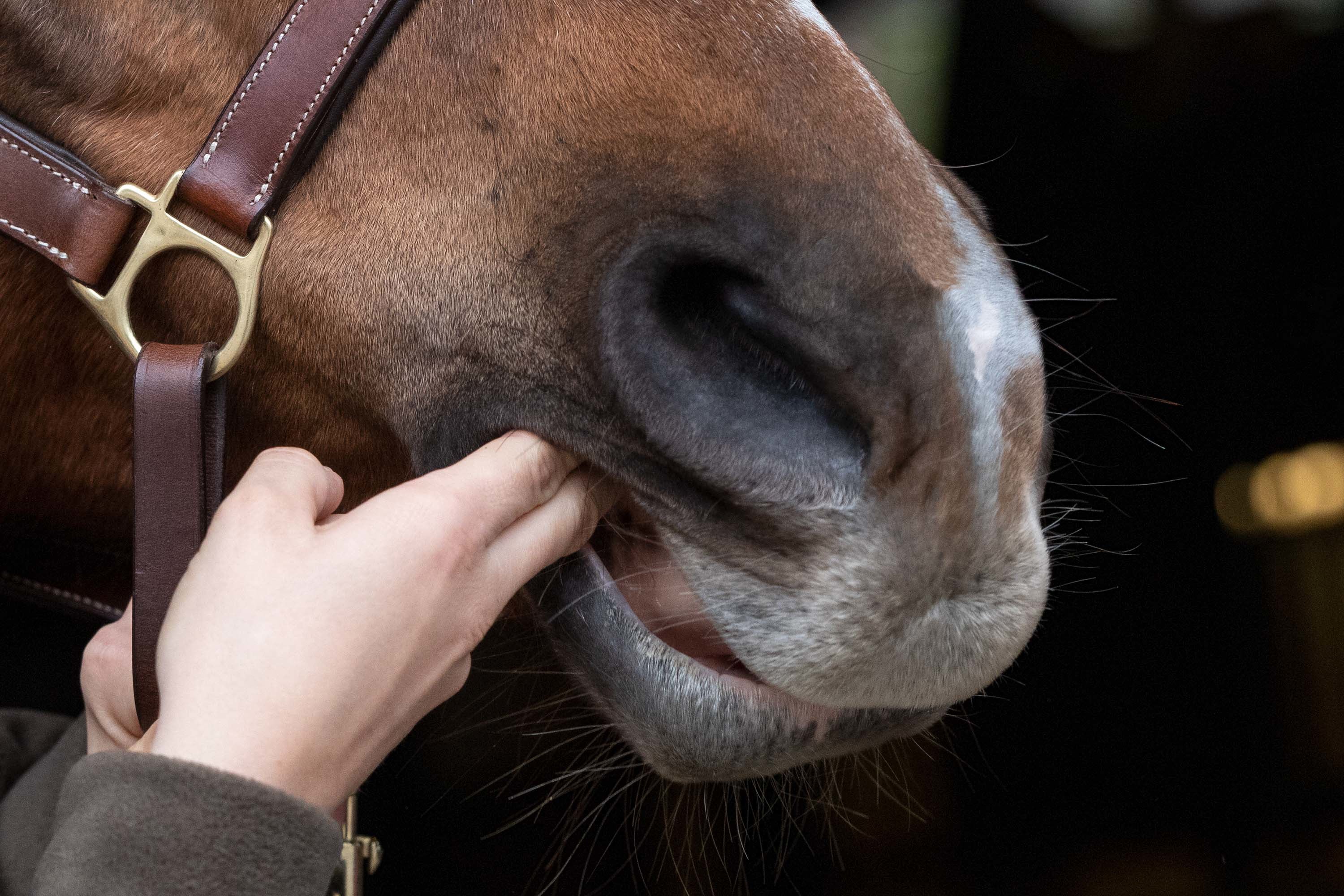
Every horse's mouth is unique and the size of your horse's body does not necessarily say anything about its mouth. A study in cooperation with the University of Veterinary Medicine Hanover has shown that horse mouths are often smaller and flatter than previously thought.
With the help of a horse dentist or the so-called "2-finger test", it is easy to find out how much space is available in your horse's mouth and which bit strength is therefore recommended.
To do this, put your index and middle finger together and insert them into your horse's mouth where the bit would normally be. Then gently push your horse’s tongue to the side and wait for your horse to start chewing or for the incisors to come together.
Do you feel pressure on both fingers? If so, the distance between the upper and lower arches is little and a bit thickness of 14-16mm is probably ideal.
If the distance is greater and you hardly feel any pressure on your fingers, then you should choose a bit thickness of 16-18mm.
What Can Happen if I Choose the Wrong Size?
If you choose a bit that is too thick, there is a risk that pressure will be exerted on the sensitive palate. This can lead to painful pressure points and injuries - but is definitely unpleasant for your horse. This can show itself in head shaking, opening of the mouth or pulling against the hand.
Does this mean that a thinner bit is always the solution? Not necessarily. A thinner bit leads to a more localised pressure distribution in the mouth, which requires particularly sensitive aids.
Despite the sheer number of bit models and shapes available on the market, with a little basic knowledge of how the most common bit styles work, it is no longer that difficult to make a choice.

We know how difficult it can be to find the right bit size - especially if you haven't dealt with it before. In addition to our blog posts, social media posts and info videos, we would like to support you with our bit measure.
Because in the end, all that matters is the welfare of our horses. You can easily download the bit measure and print it out at home. How exactly to assemble and use it is explained step by step in our instructions.
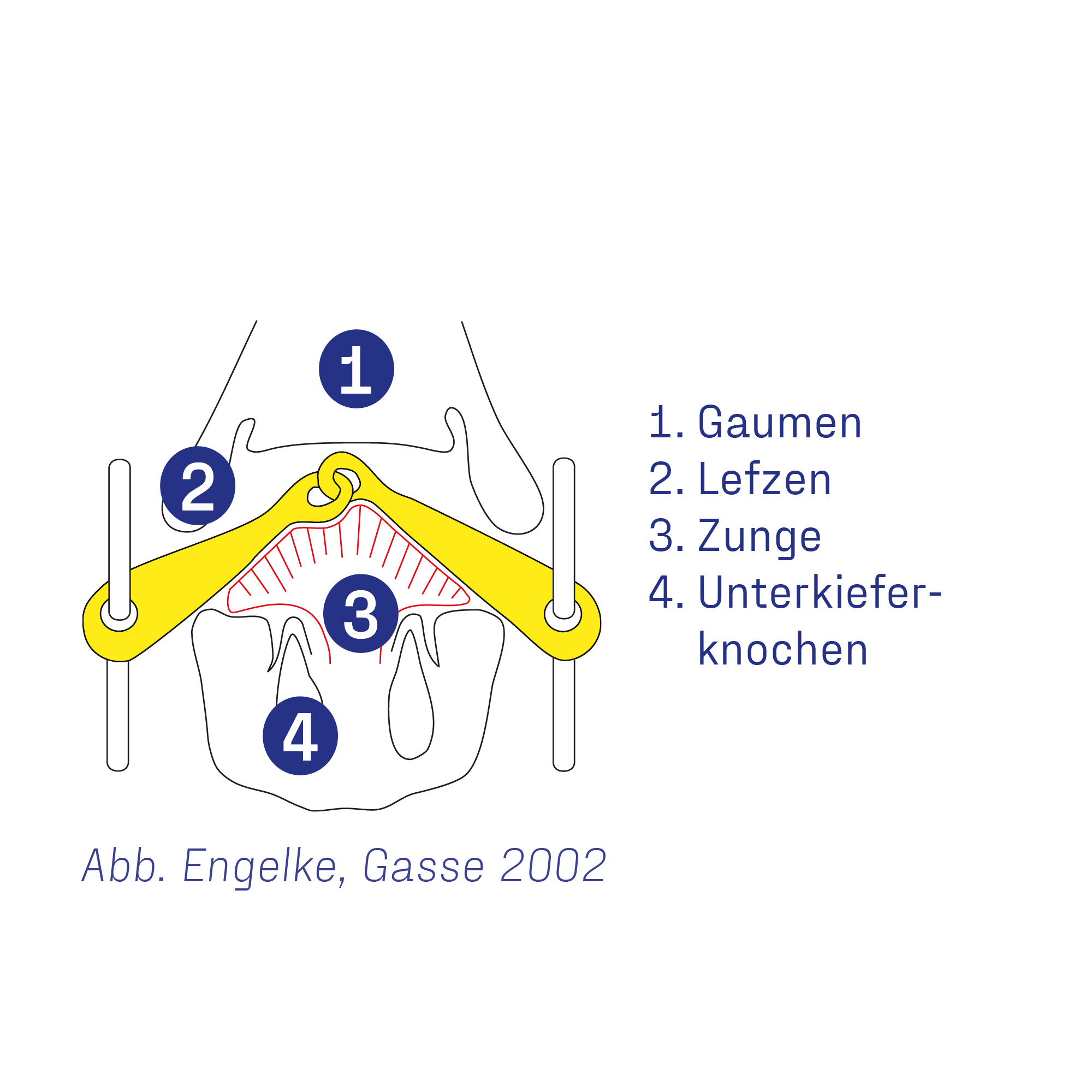
The single jointed bit is the classic bit par excellence. It acts on the lower jaw via the tongue. When the reins are tightened, the joint in the middle of the mouthpiece is slightly raised, relieving the middle of the tongue and directing more pressure towards the edges of the tongue. Because our bits are anatomically shaped, they offer the best comfort and avoid an unpleasant "nutcracker" action.
This refers to the bit forming a V-shape pinching the lower bars and/or pressing the eye of the joint into the horse's palate. This can happen if you use a bit that is too large or too thick. For horses with a flat palatal arch, there is then the additional risk of pressure points or even injuries in the palatal area.
Take a close look at your single jointed bit: Due to the manufacturing process, the bit shanks of conventional single-jointed bits are always of different lengths. This means that there is always a little more pressure on one side. We therefore recommend that you regularly rotate single jointed bits.
To solve this problem, we have adapted our Turnado and single jointed Dynamic RS bits accordingly: Here the joint is turned 45° to the front. This special angulation enables an even action on both edges of the tongue. It is therefore not necessary to turn the bits
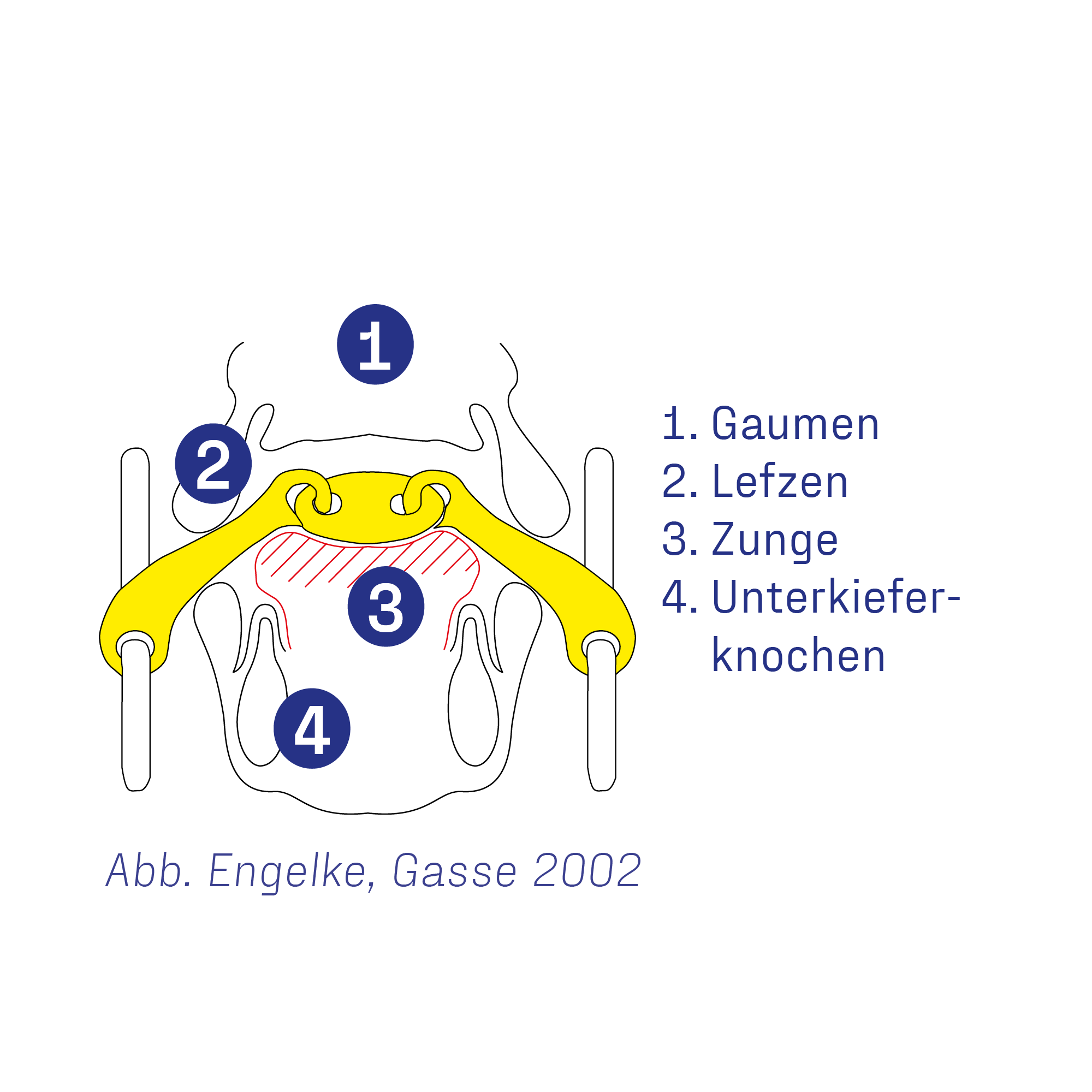
You probably know that a double jointed bit looks different from a single jointed bit. But how does it work in the horse's mouth?
Double jointed bits have 2 shorter mouth pieces connected by a centre piece. This means that the pressure you apply by taking up the reins is distributed over a larger area of the mouth via the tongue and directed to the lower jaw. Particularly, sensitive horses often react very positive to this distribution of pressure over a larger area.
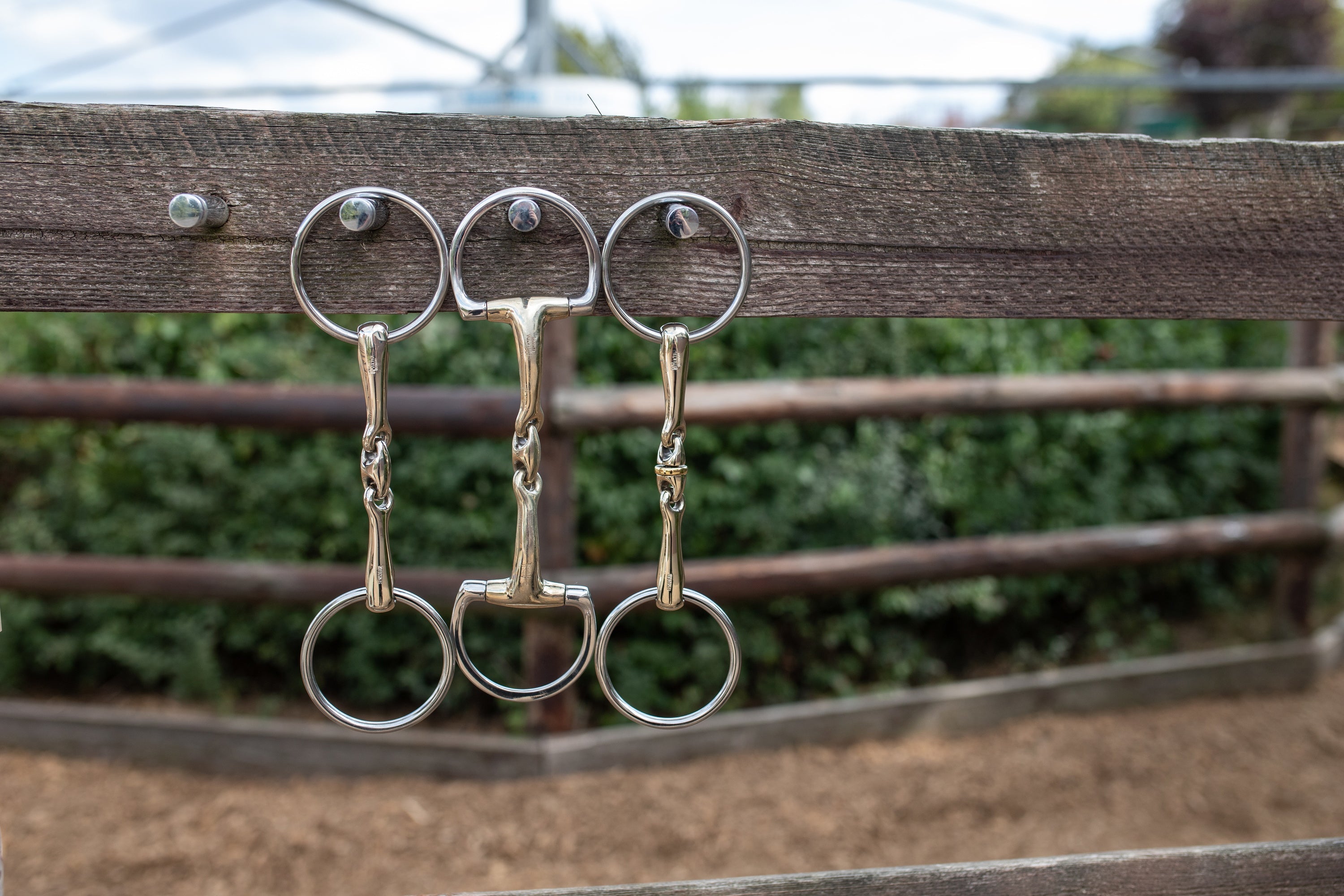
Don't worry. Our Sensogan double jointed bits have a specially designed centre piece that is inclined forward. This means that - with the right bit size - there is no pressure on your horse's palate.
Double jointed bits, like their single jointed counterparts, are used in a wide variety of areas, disciplines and performance levels.
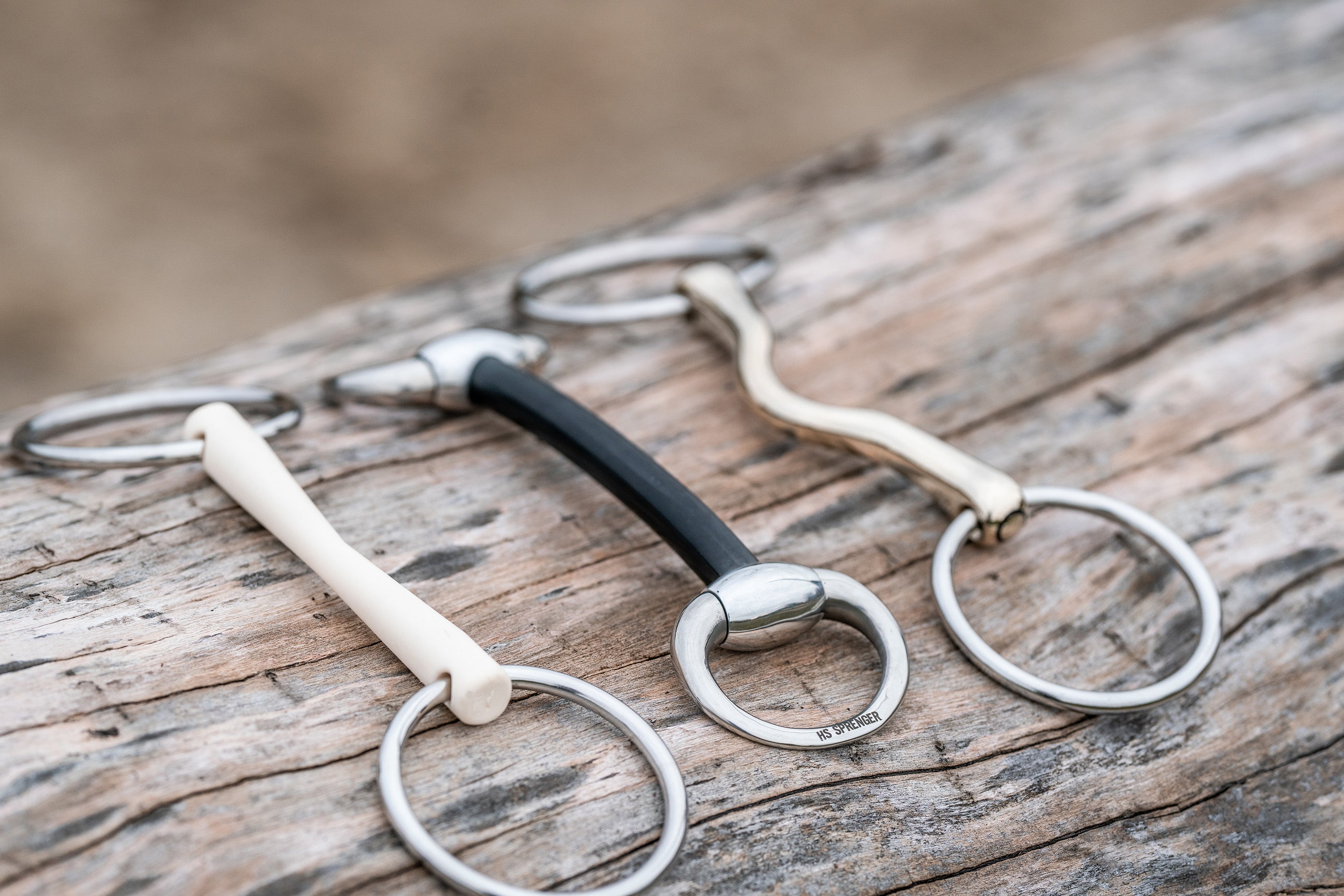
Sensitive or strong: Mullen Mouth bits are suitable for a wide variety of horses, depending on the model. The choice is huge and the effect can vary enormously depending on the model. But how do you know if a mullen mouthis right for you and your horse?
Basically, this type of bit is less suitable if your horse is difficult to turn, and has problems with flexion and bend. This is because as soon as you start to use the reins, the bit will start to tilt if one-sided rein aids are given.
A Mullen Mouth bit is therefore particularly suitable if you have an even connection with both hands and are able to ride your horse through turns mainly with leg and weight aids.

A straight, rigid Mullen Mouth bit exerts steady and even pressure on the entire tongue (including the centre of the tongue). Compared to jointed bits, less pressure is applied to the edges of the tongue with straight mullen mouths. As the strength of the rein aid increases, so does the pressure that is transferred to the lower jaw via the tongue.
These bits are recommended for horses that tend to get strong or push against the hand, e.g. when approaching an obstacle.
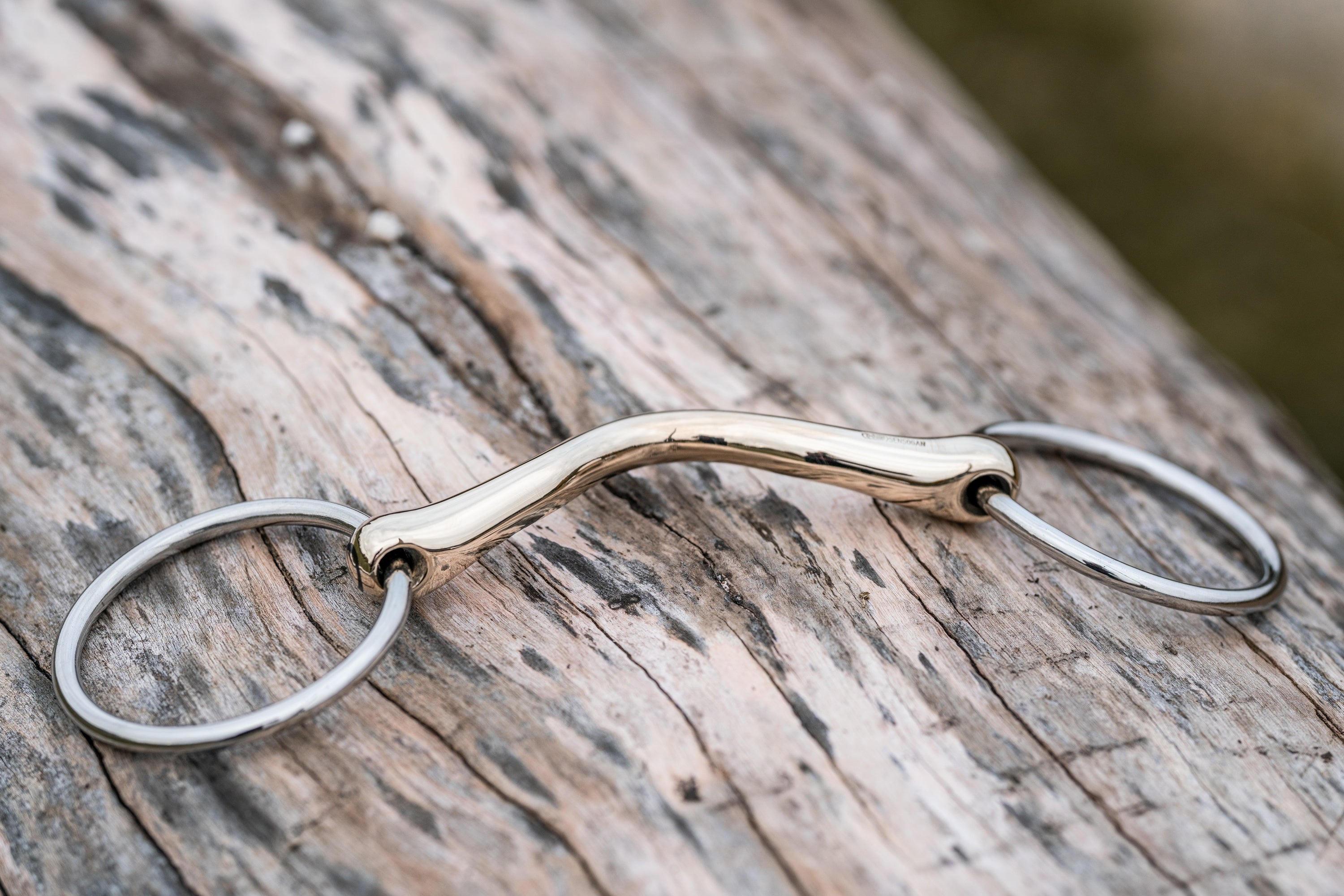
Compared to the rigid Mullen Mouth, flexible versions are slightly better at applying pressure on one side. Here, too, the pressure is distributed over the entire tongue when the reins are tightened, but becomes somewhat stronger towards the edges of the tongue.
These bits are recommended for horses that occasionally "get stuck" or show unresponsiveness during schooling or when approaching obstacles. Flexible bars are often also well accepted by horses that are less comfortable with jointed bits.

Compared to straight Mullen Mouth bits, Mullen Mouths with port relieve pressure on the middle of the tongue and only put pressure on it when the reins are taken up stronger. These bits are usually suitable for horses that go against the hand, have particularly fleshy tongues or for correcting tongue problems in horses that find pressure on the tongue uncomfortable and avoid it by pulling up or sticking out the tongue.
4 steps leading to the perfect bit
You can read a summary of everything in our flyer.
You can download the flyer '4 steps leading to the perfect bit' here.
PART OF YOUR PASSION.

